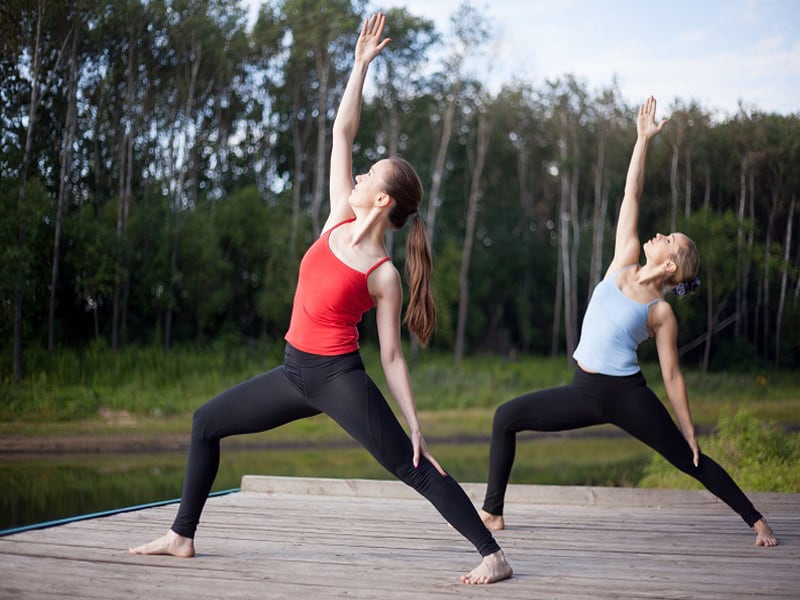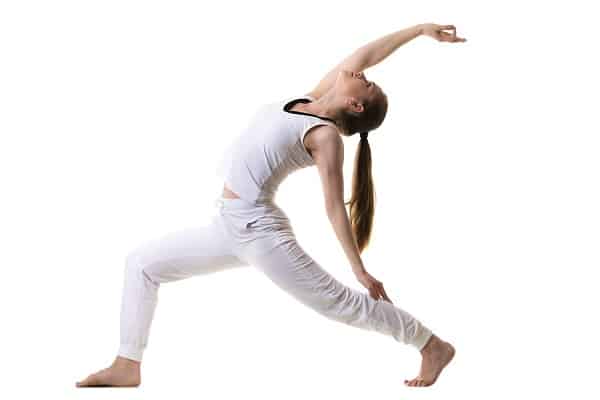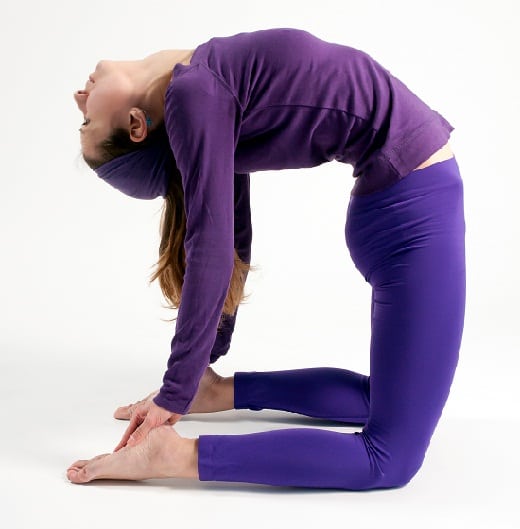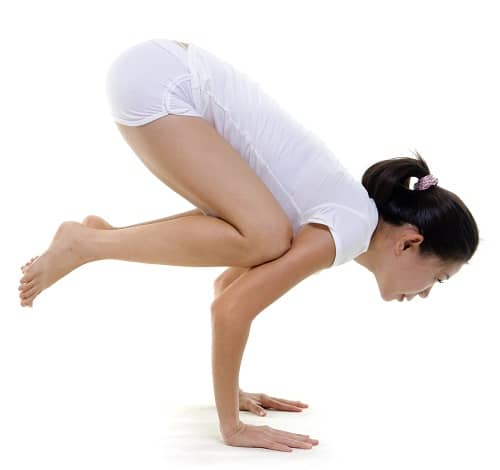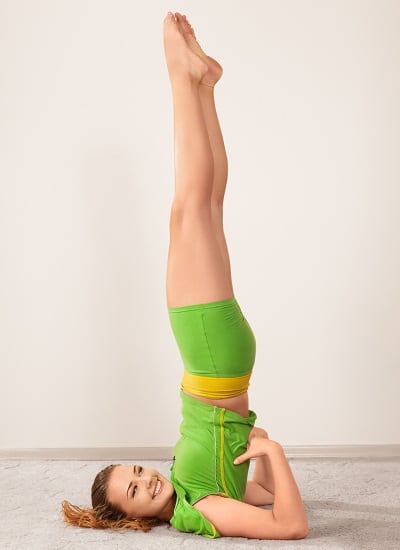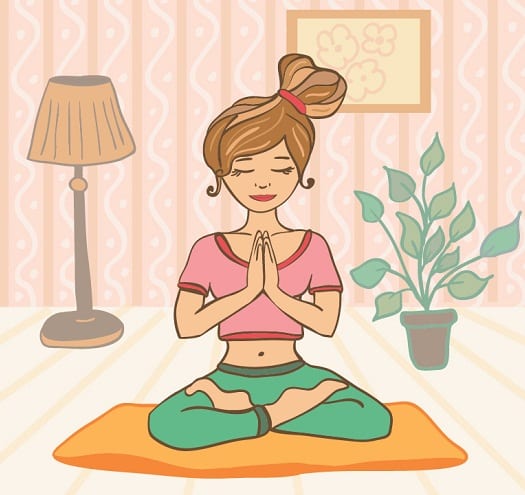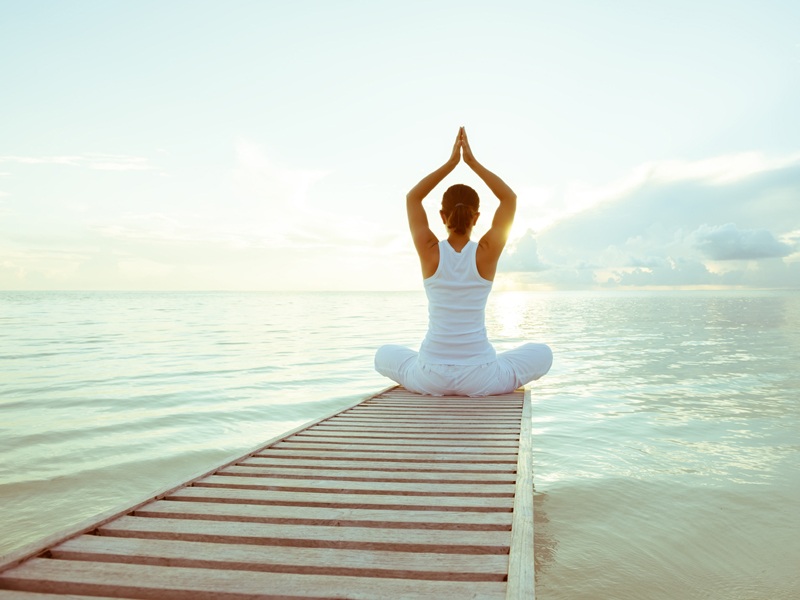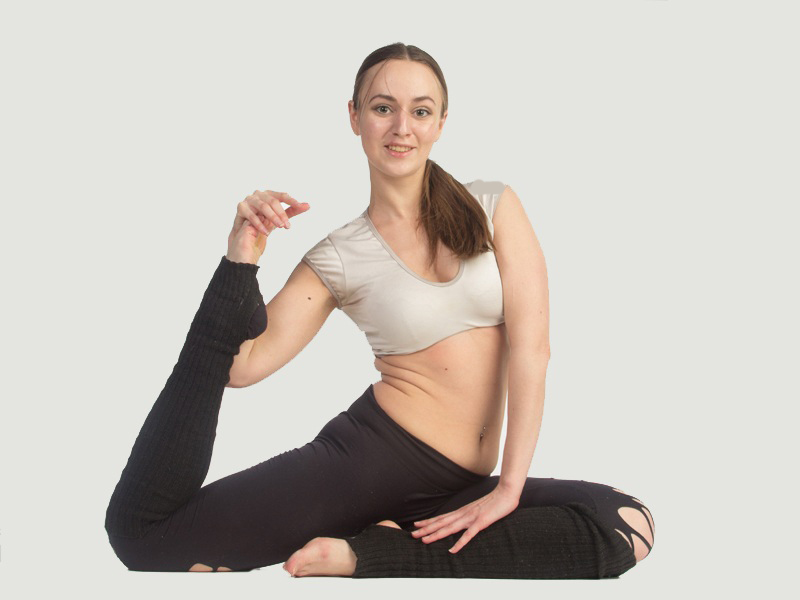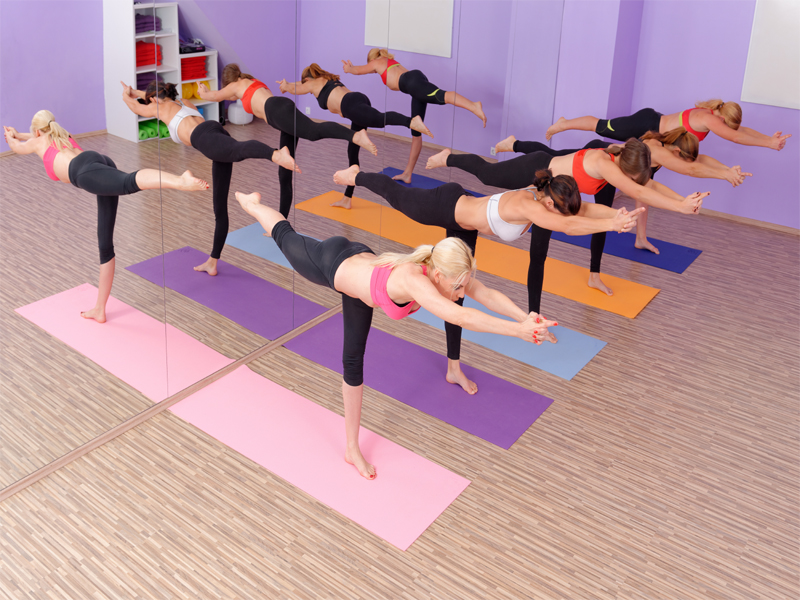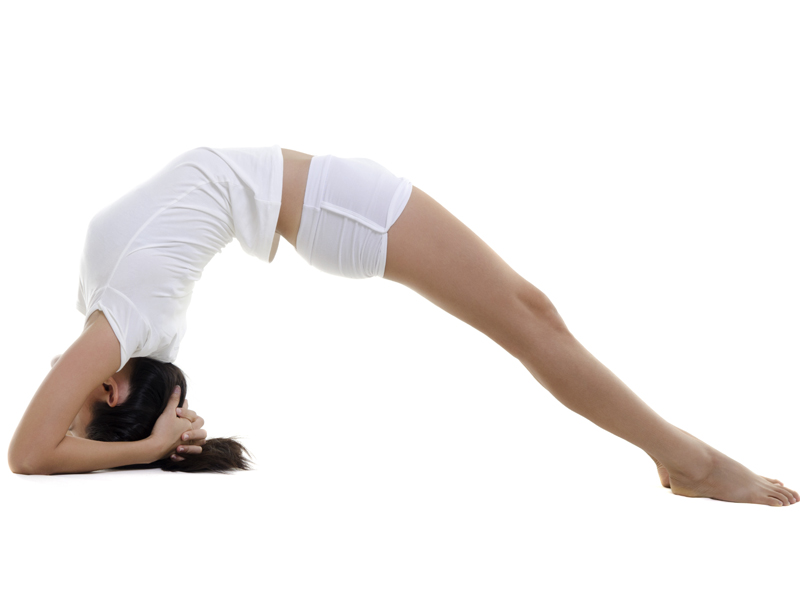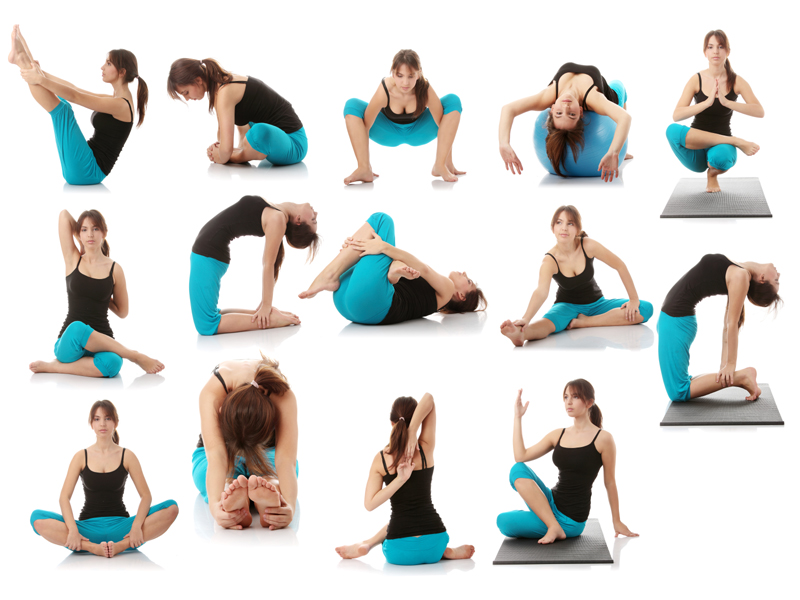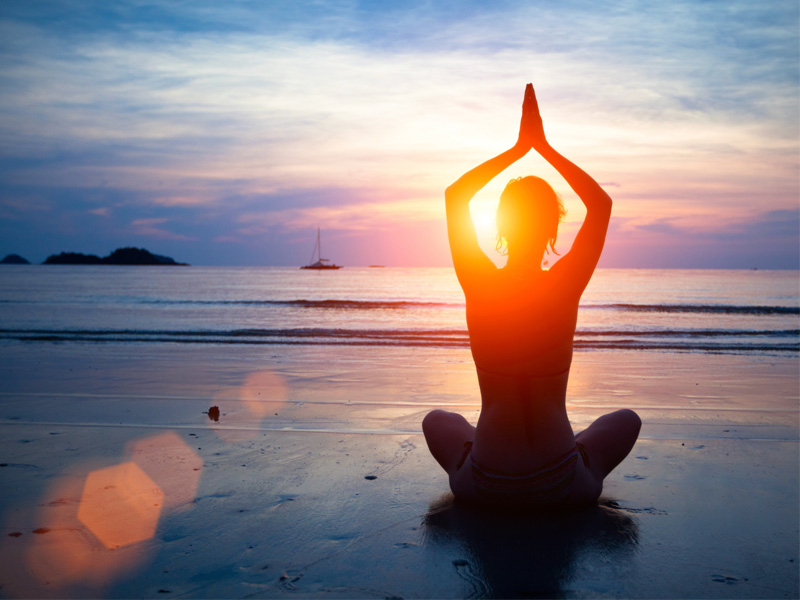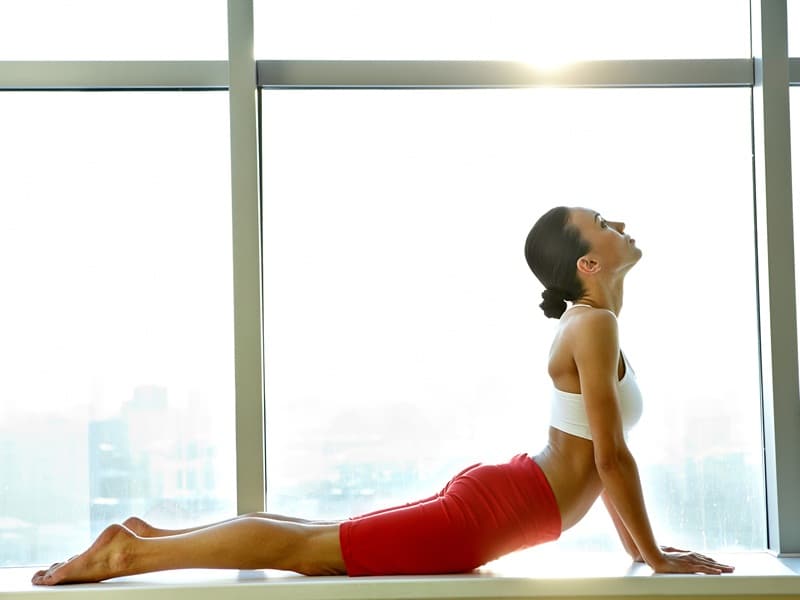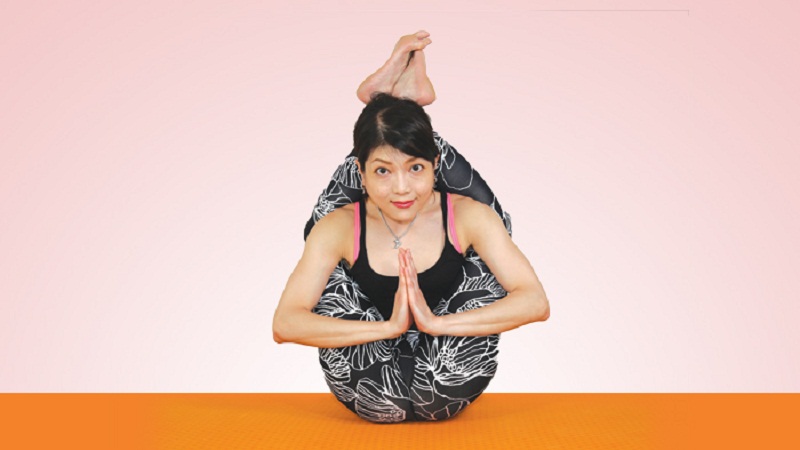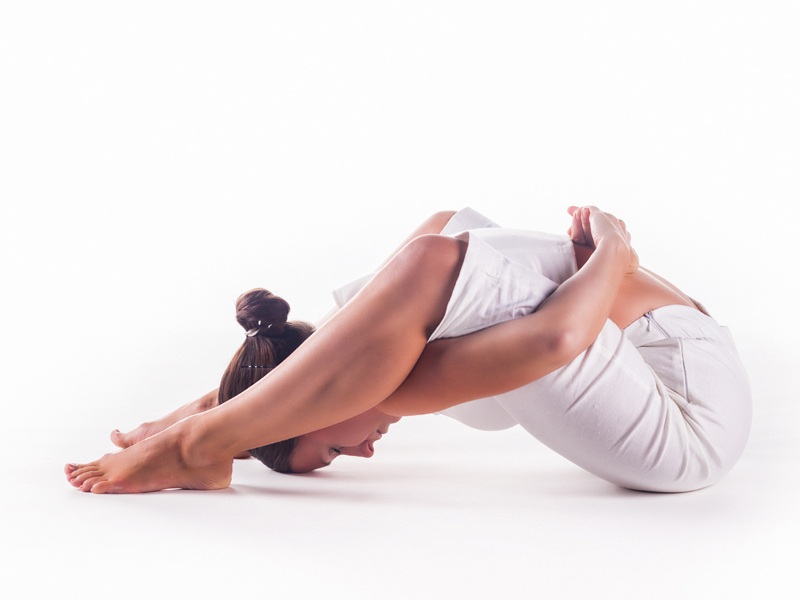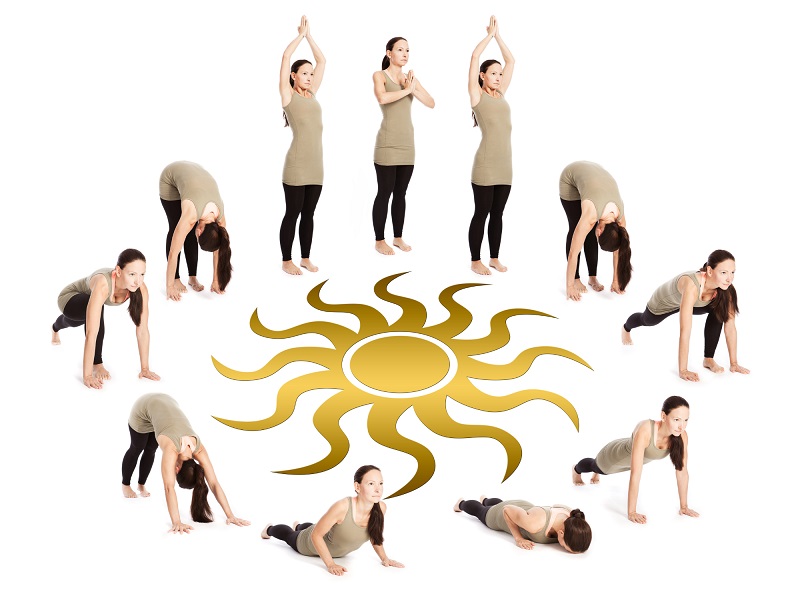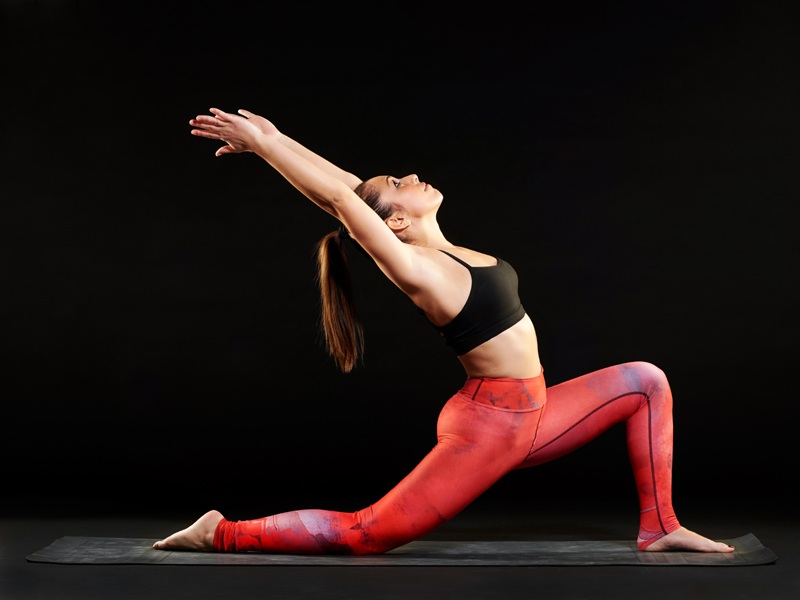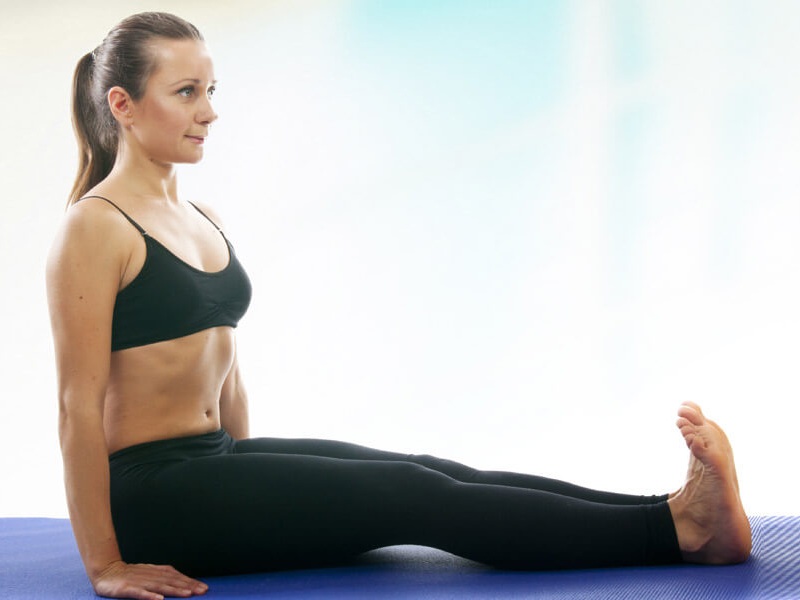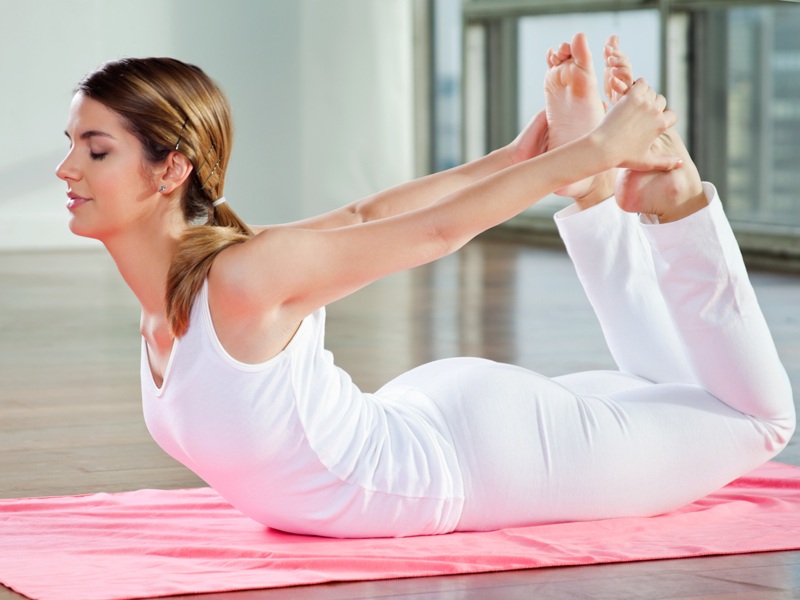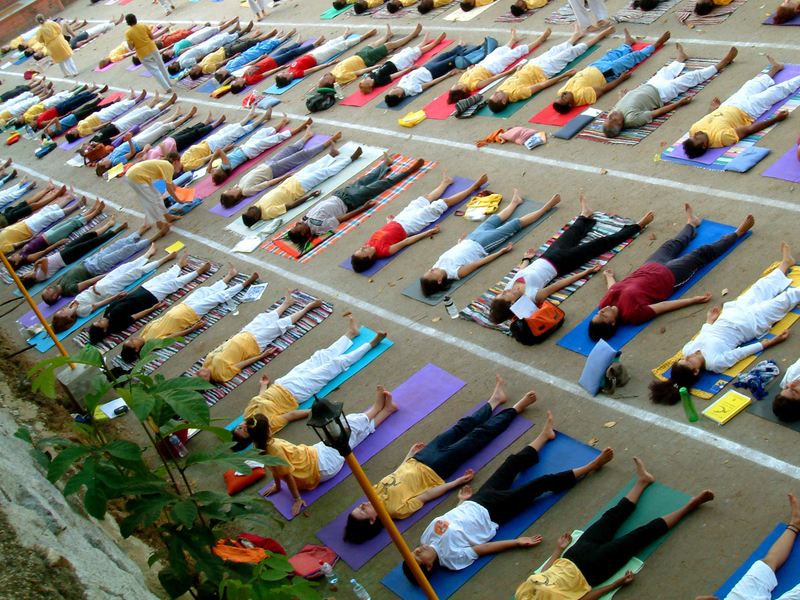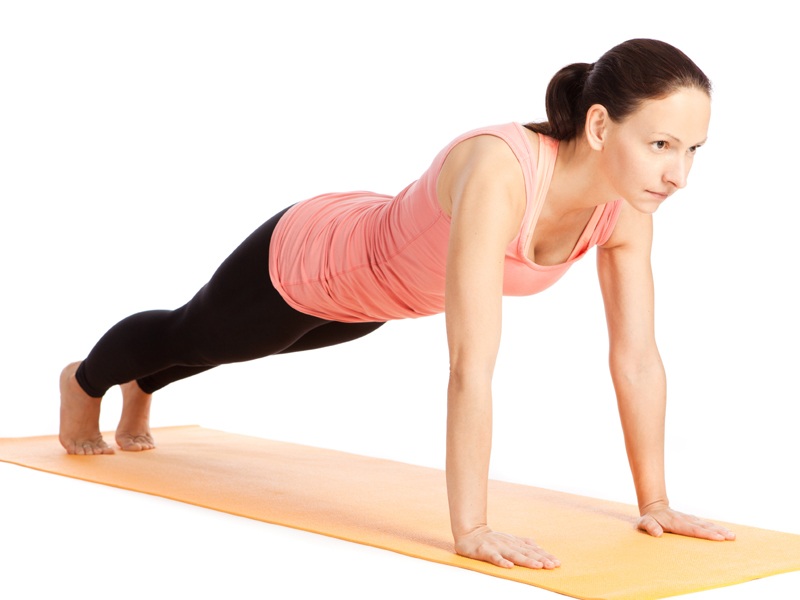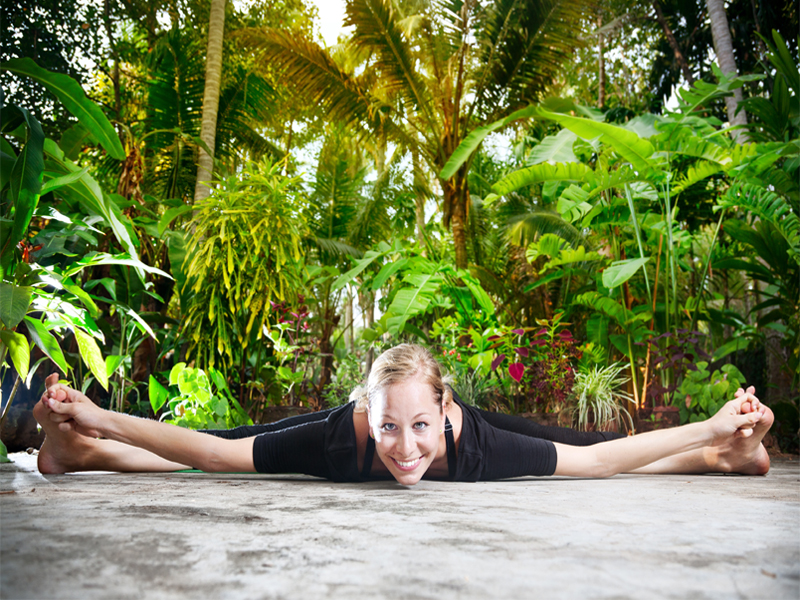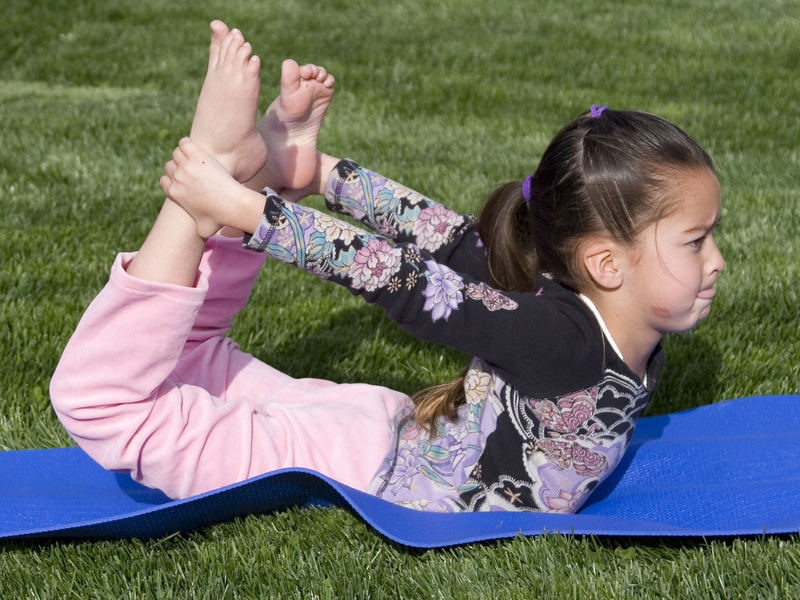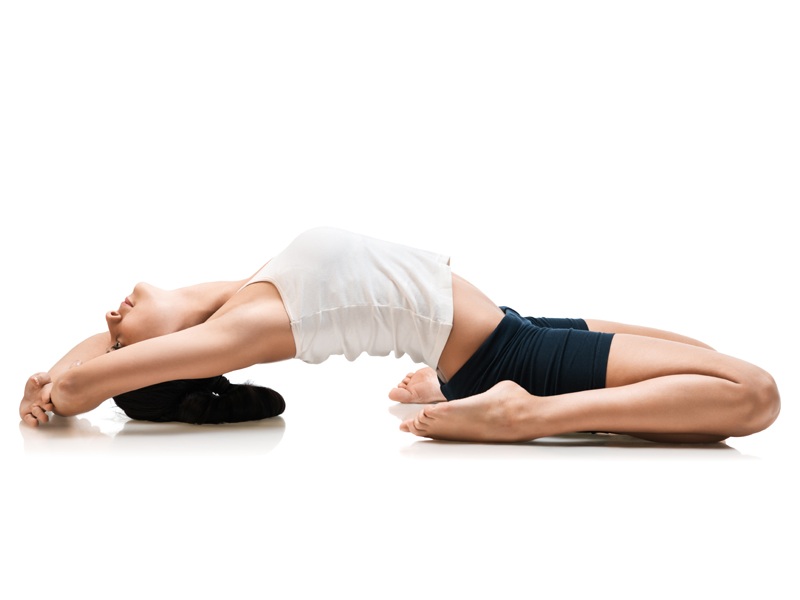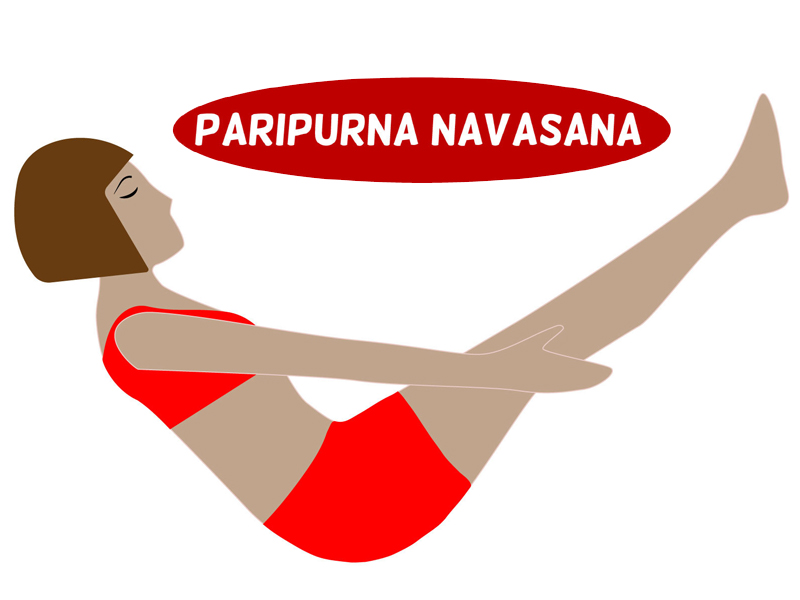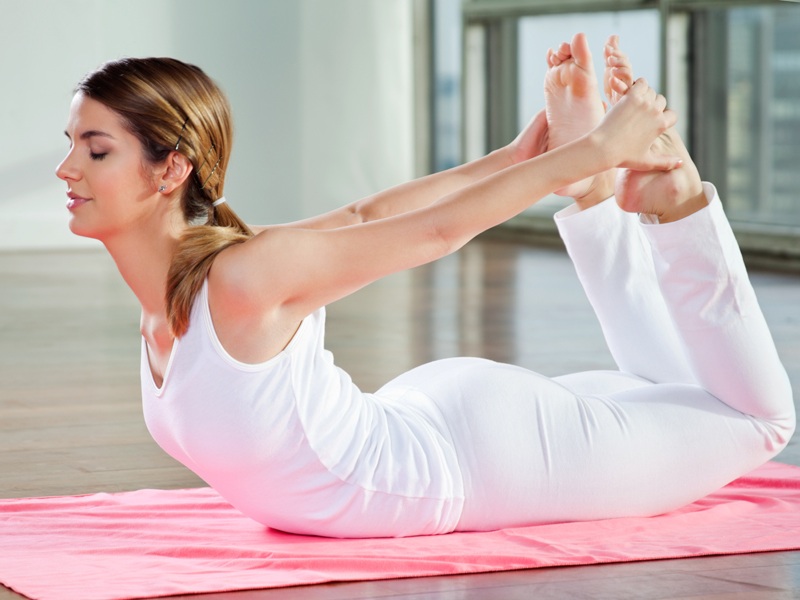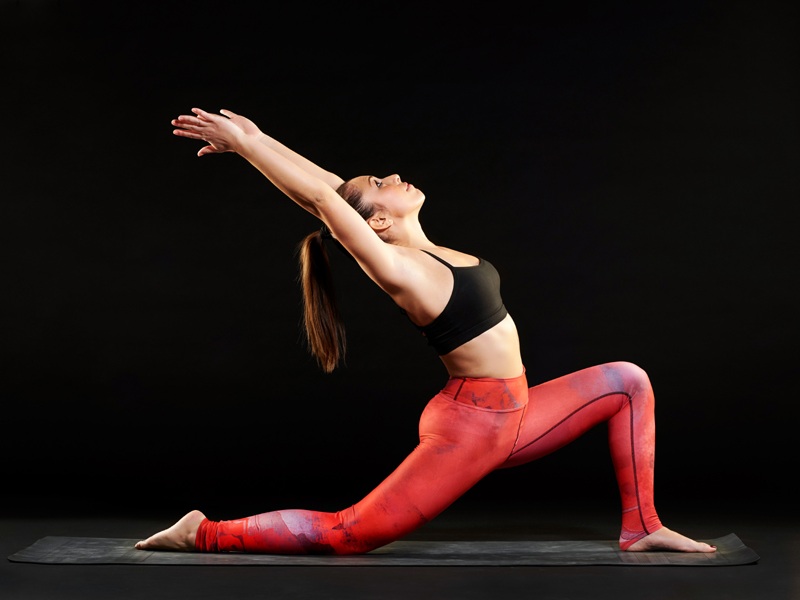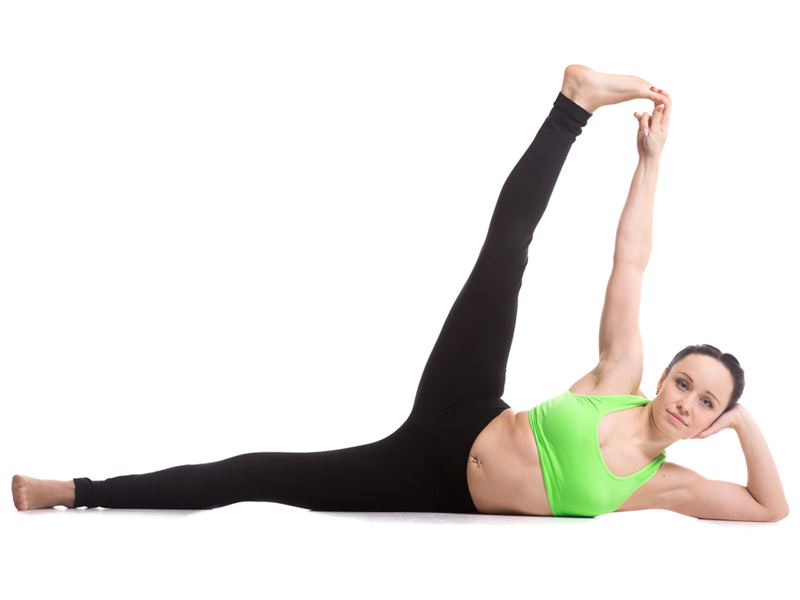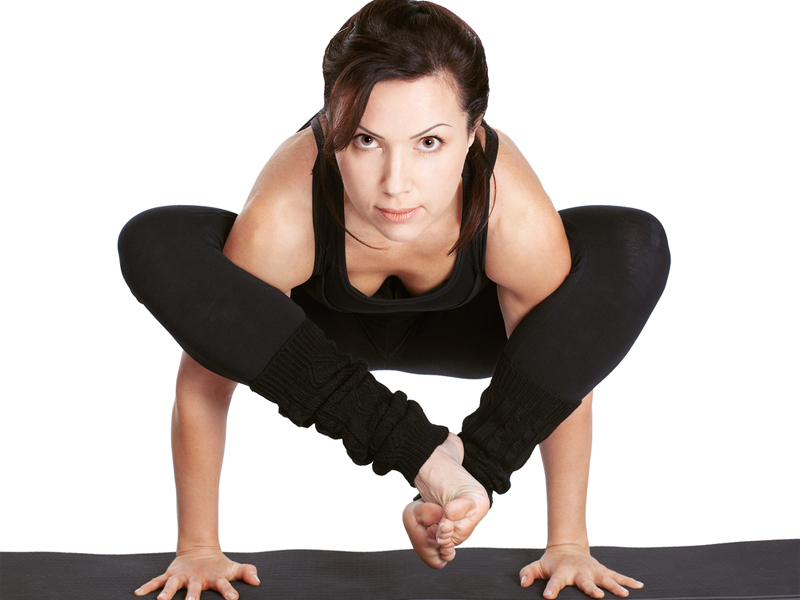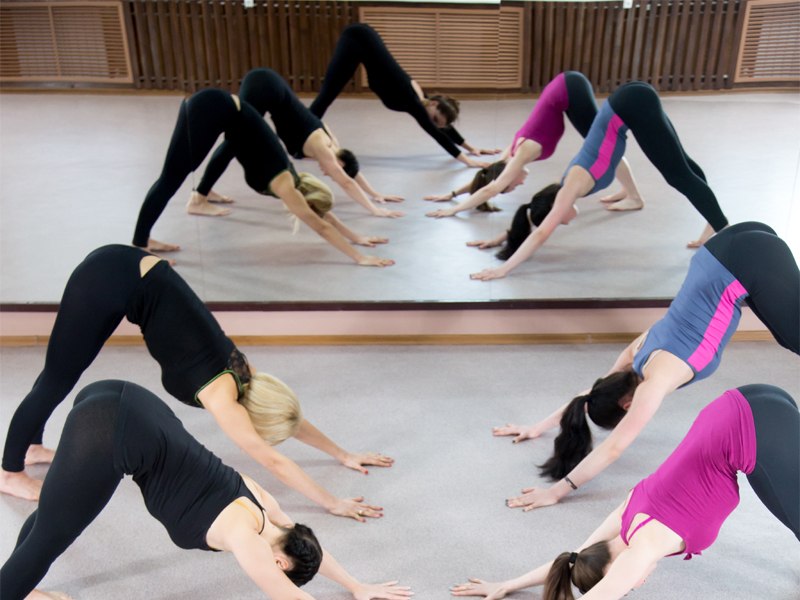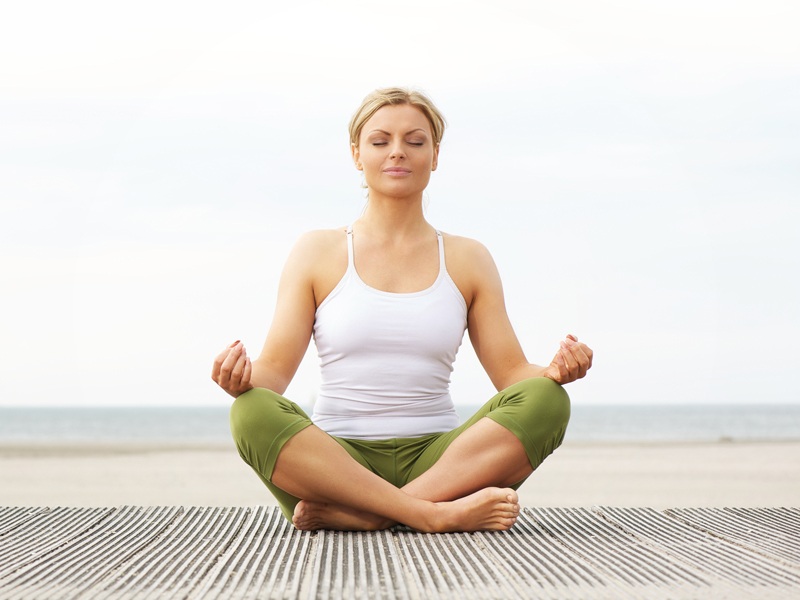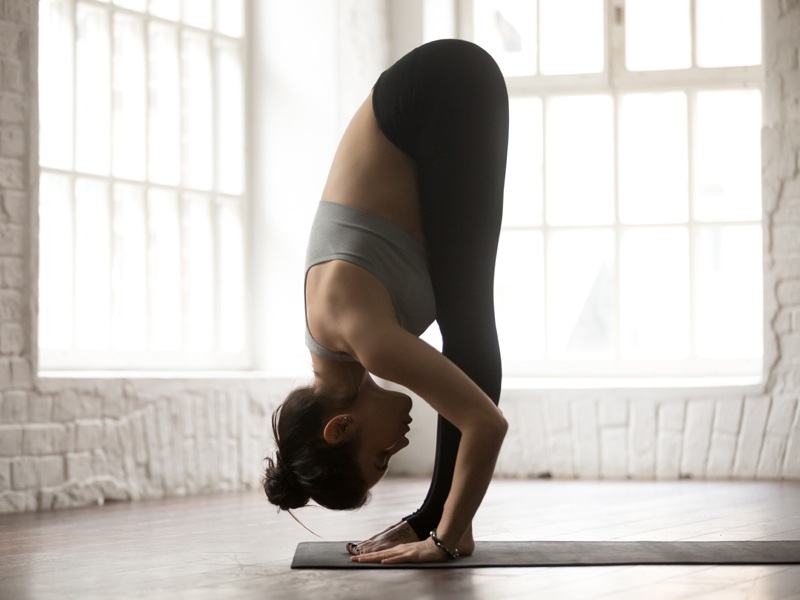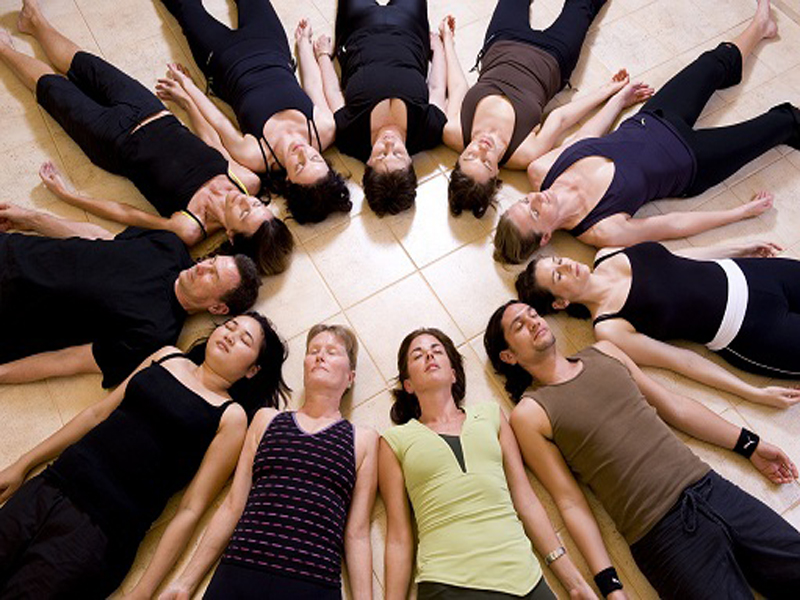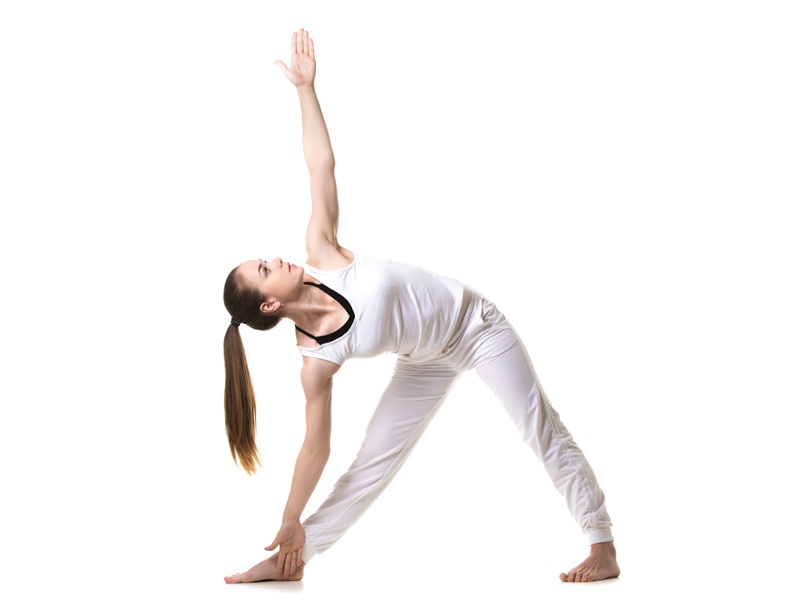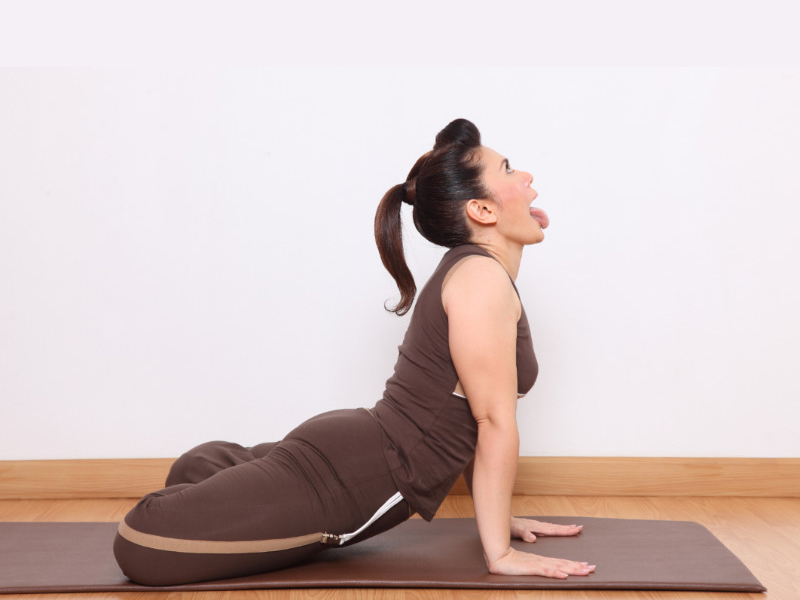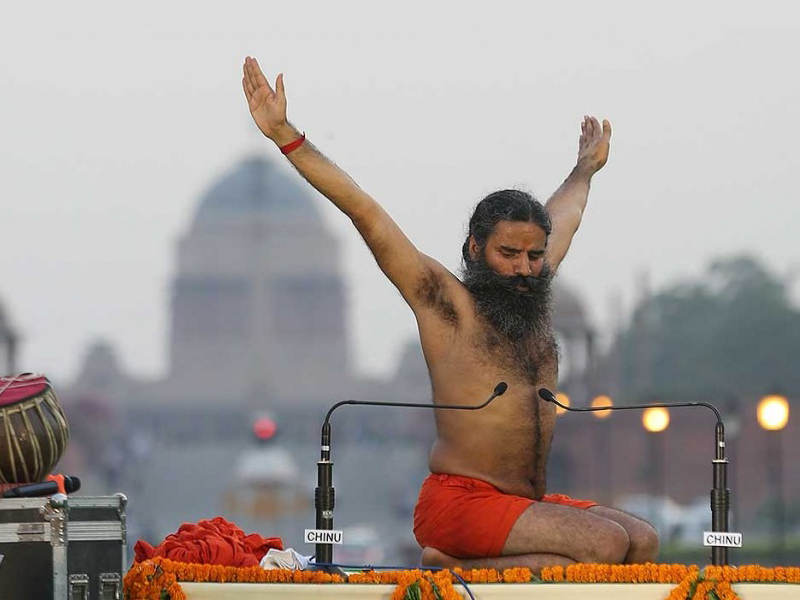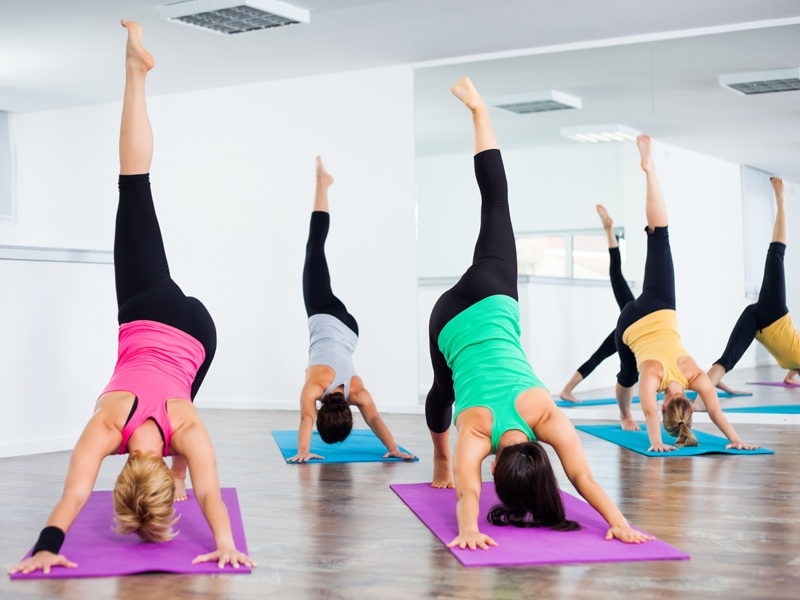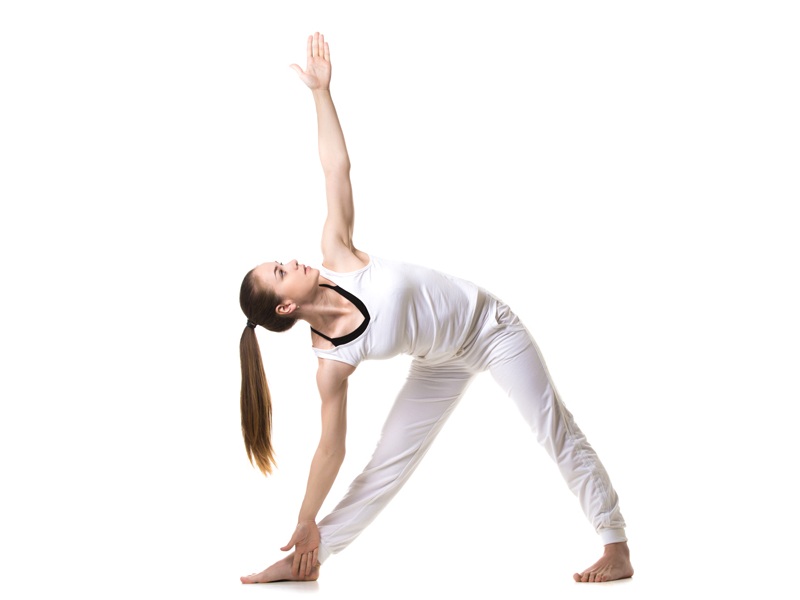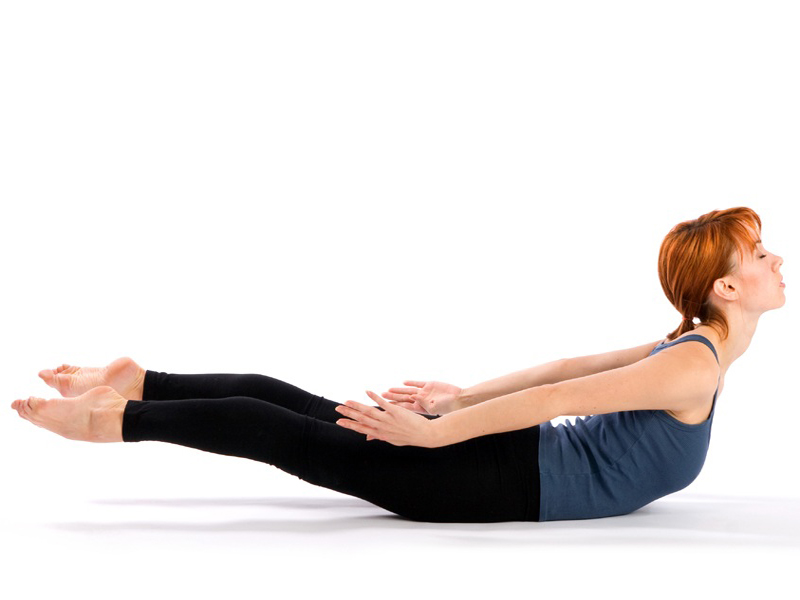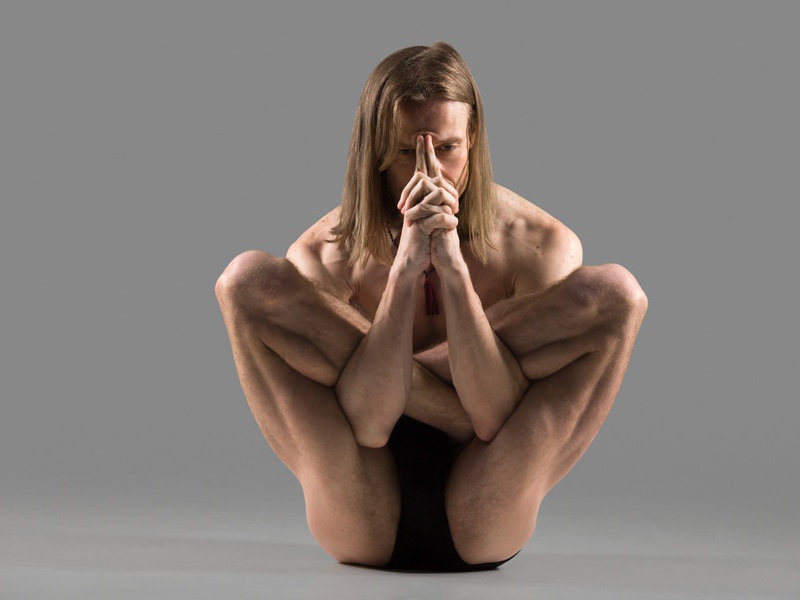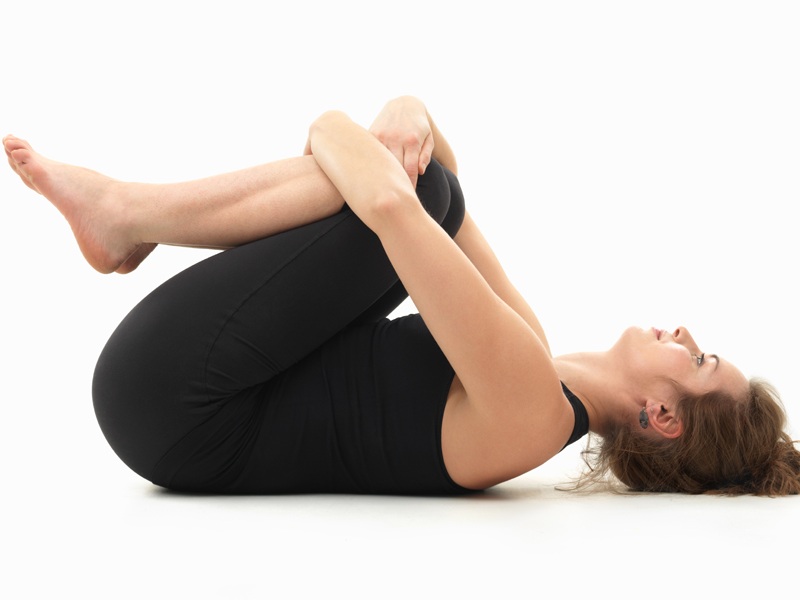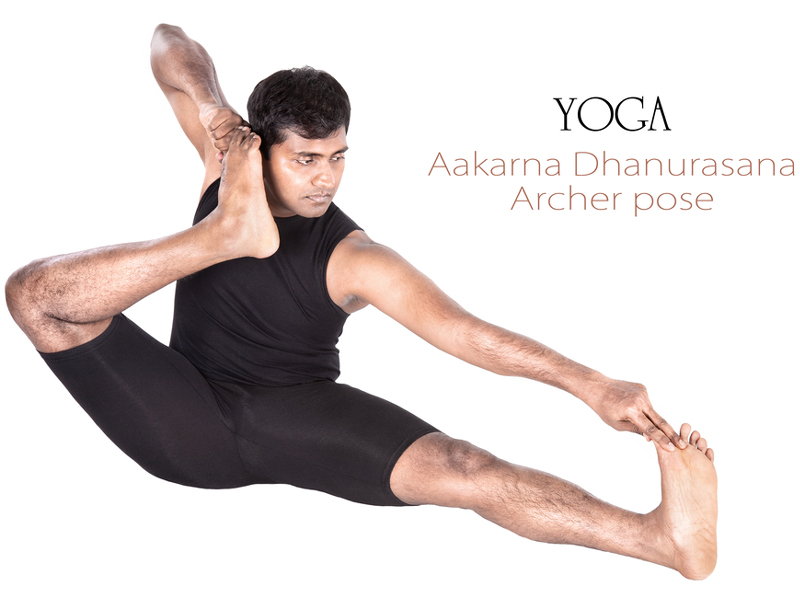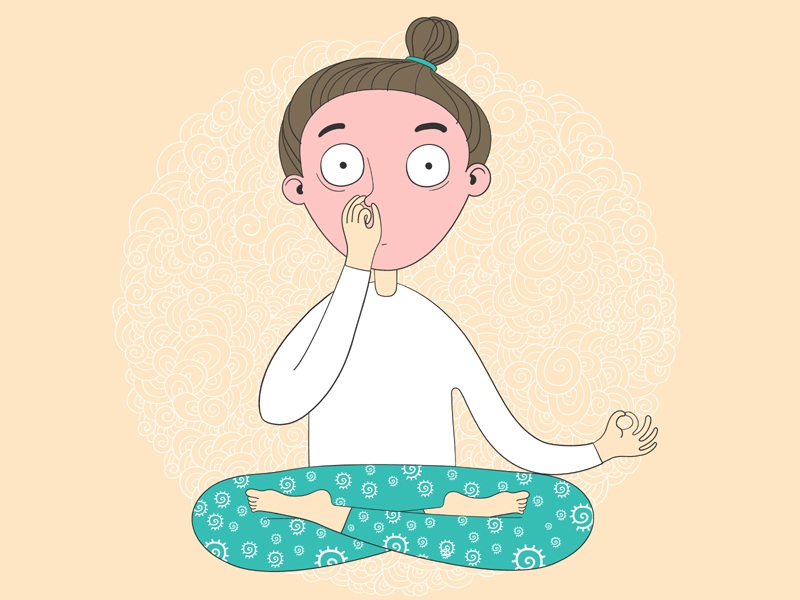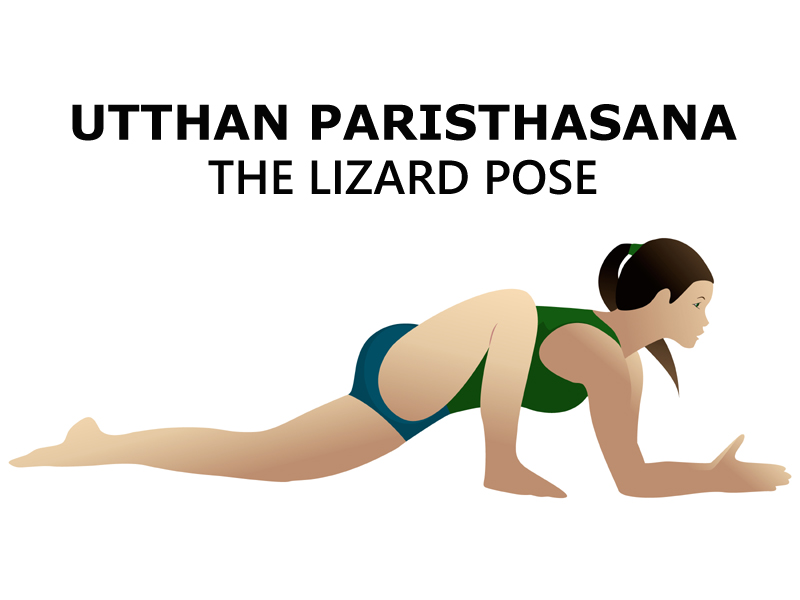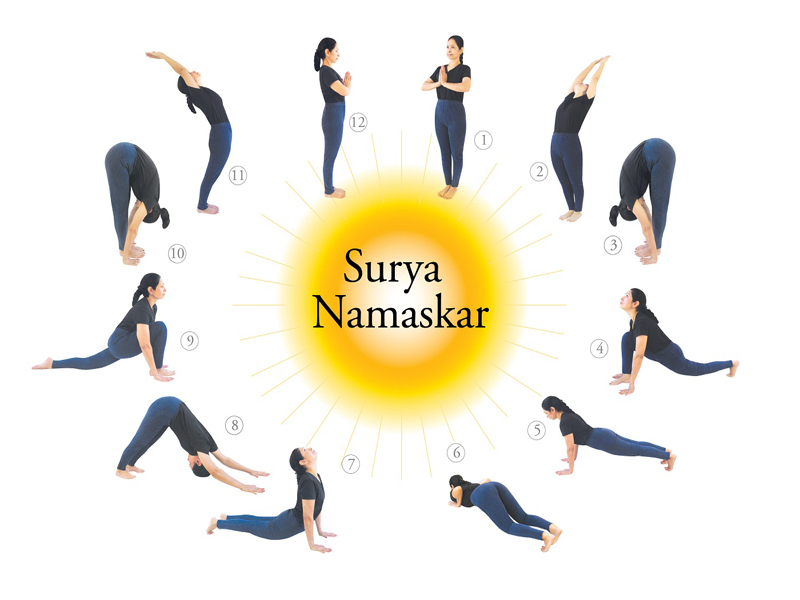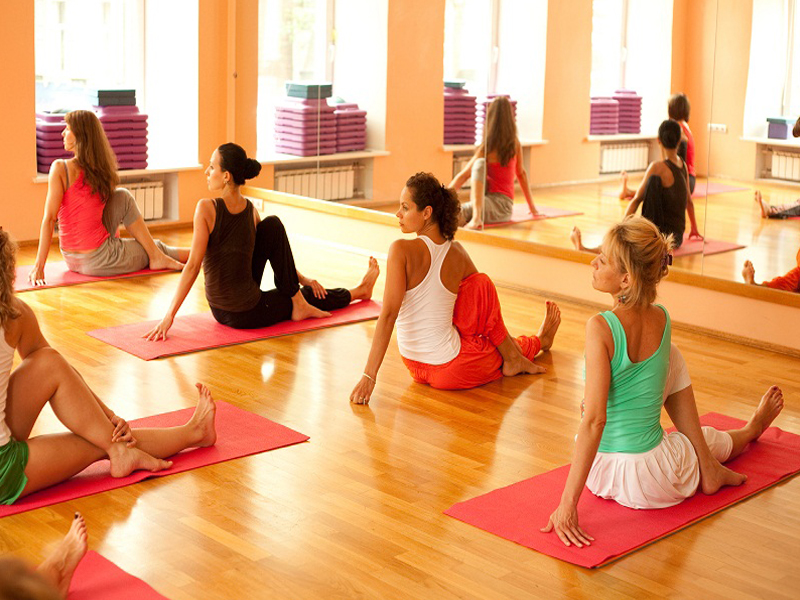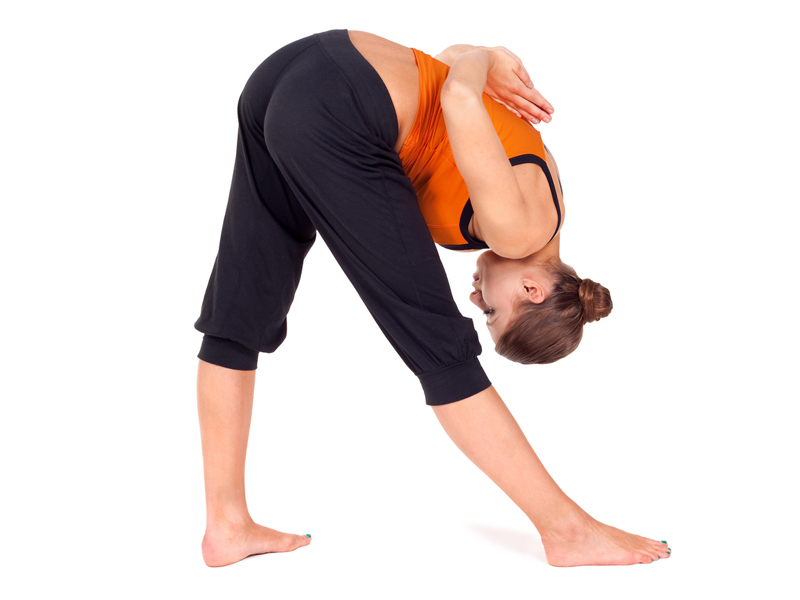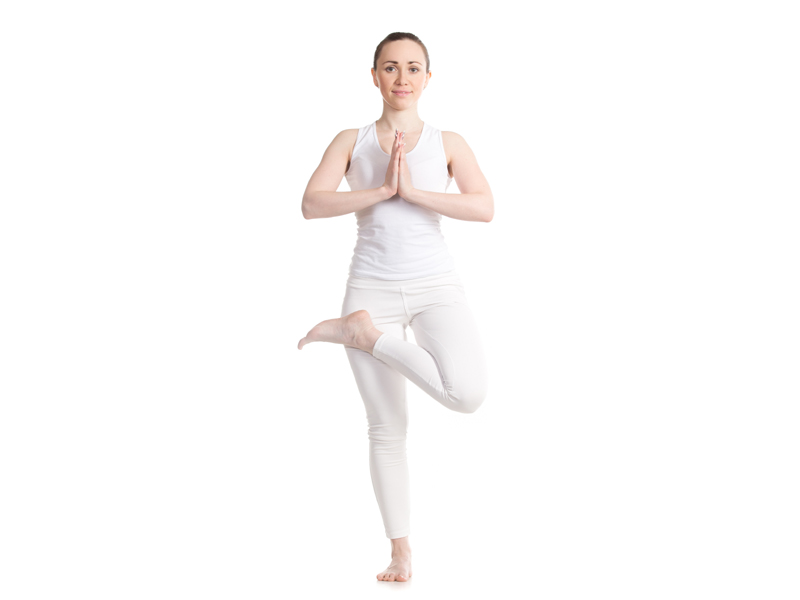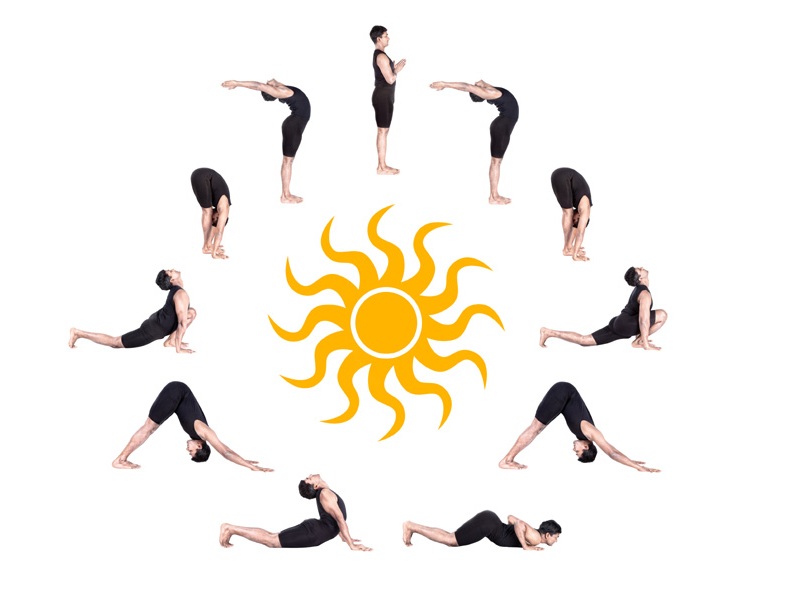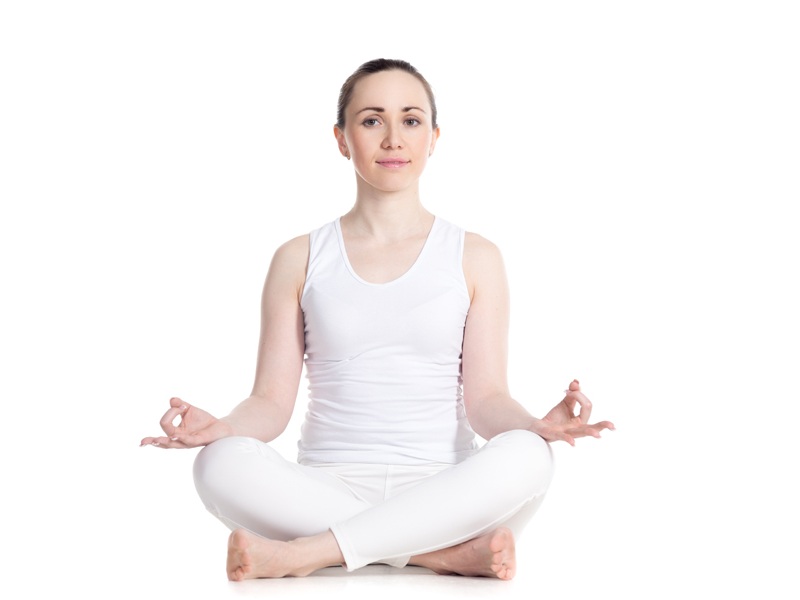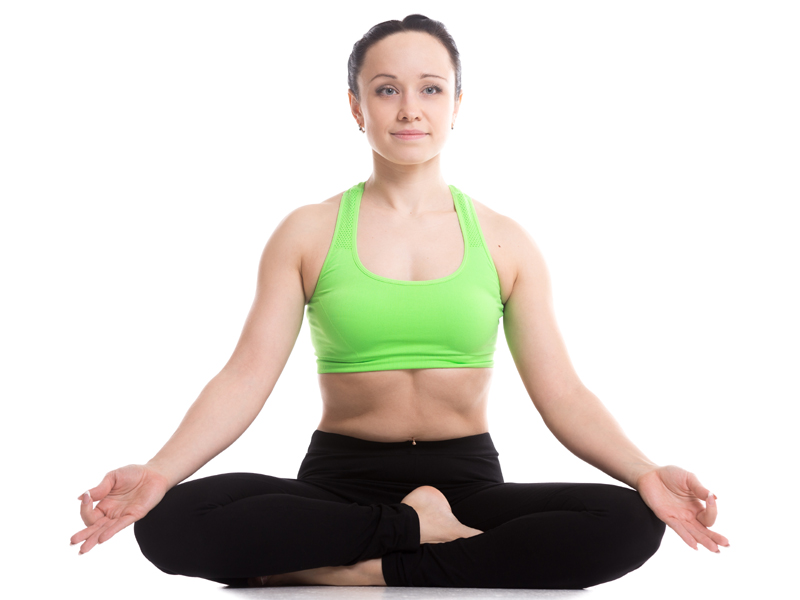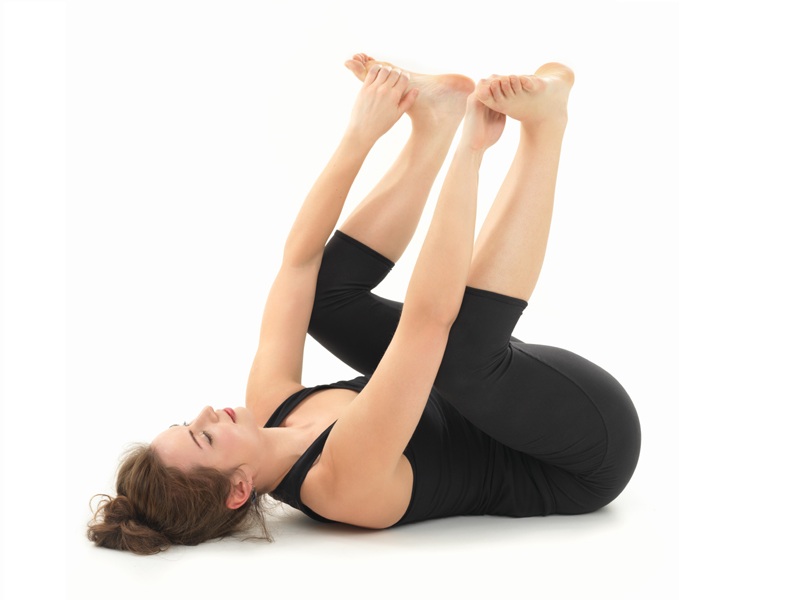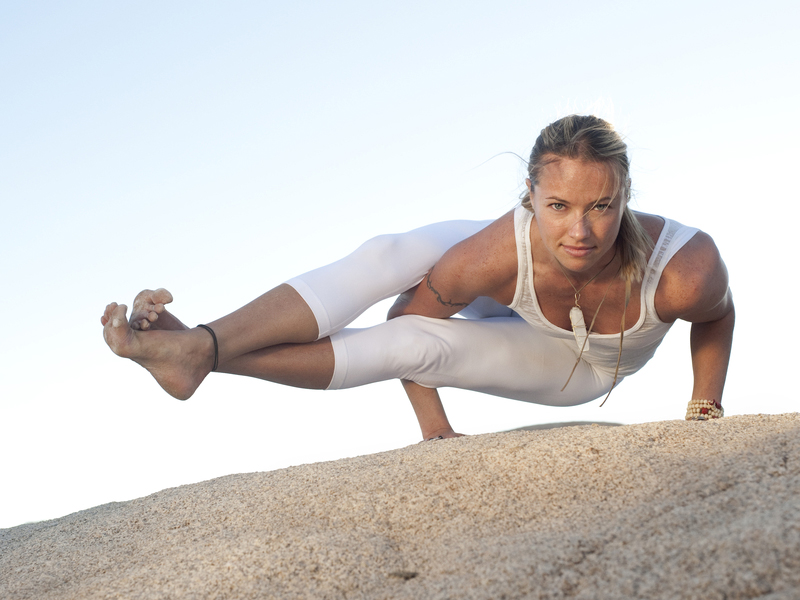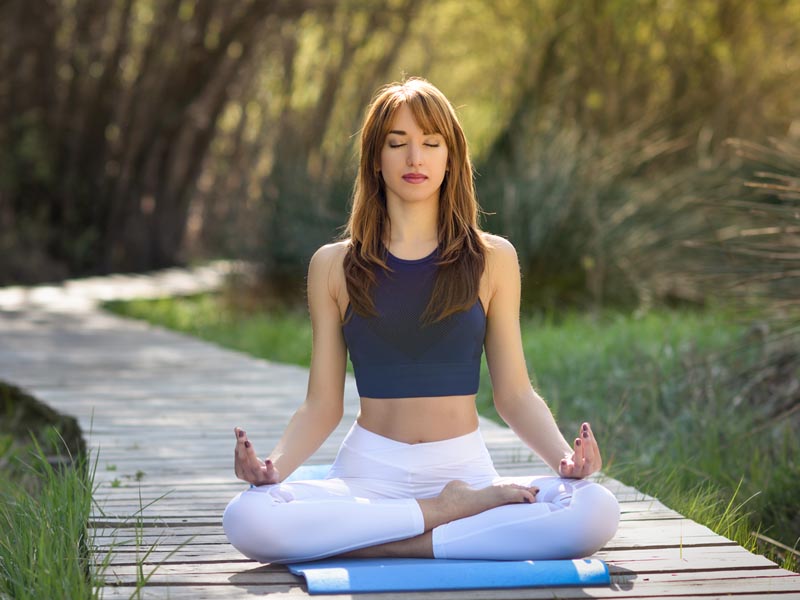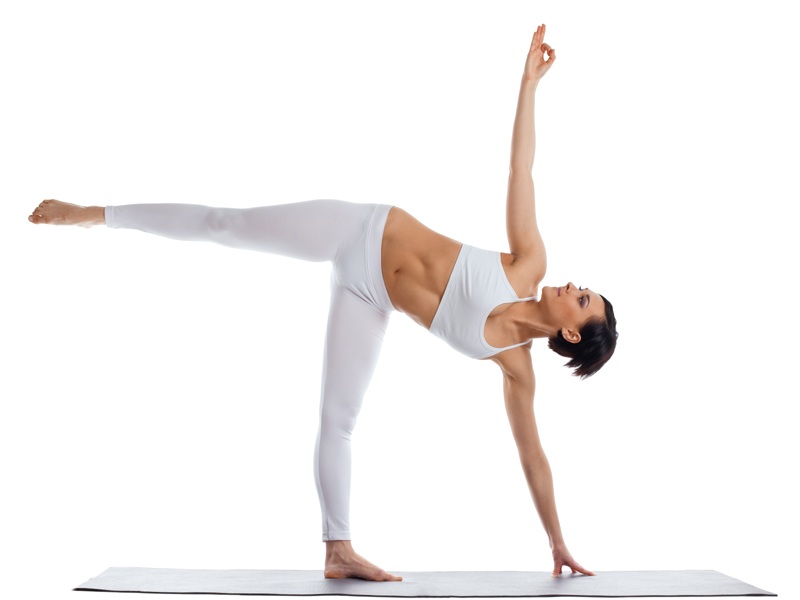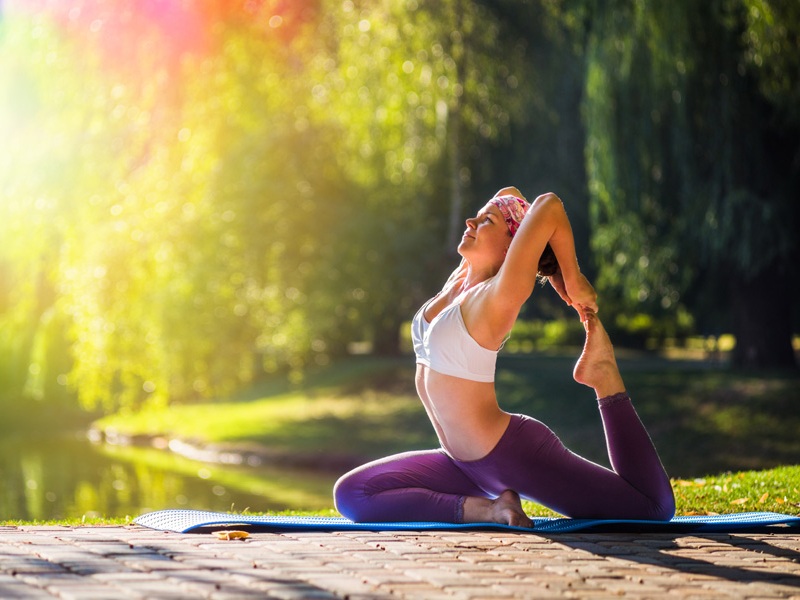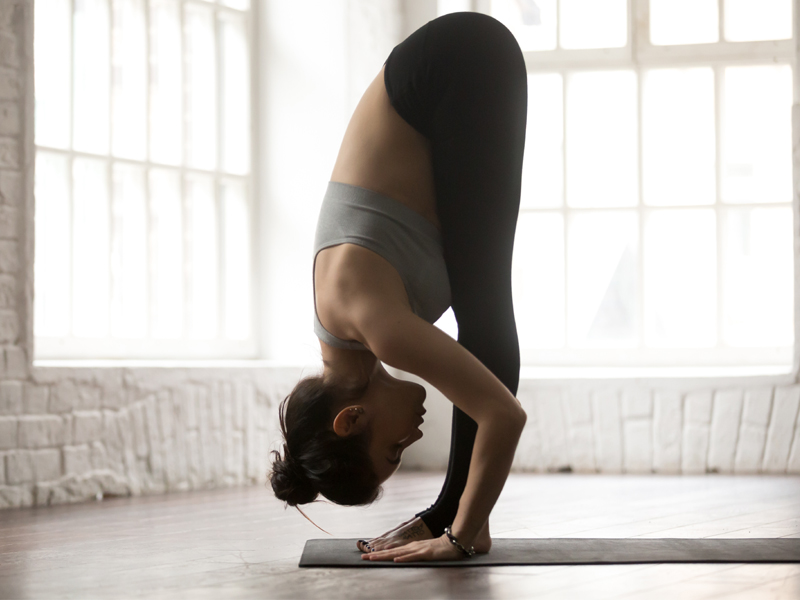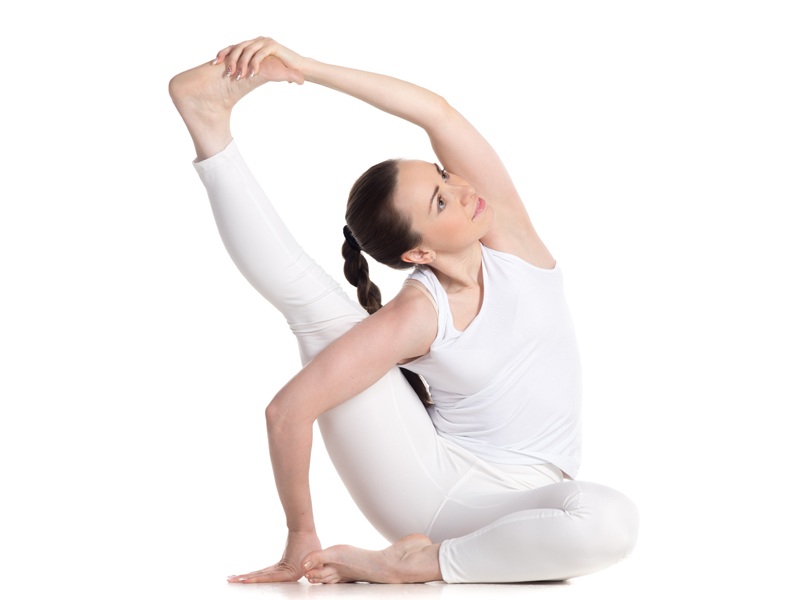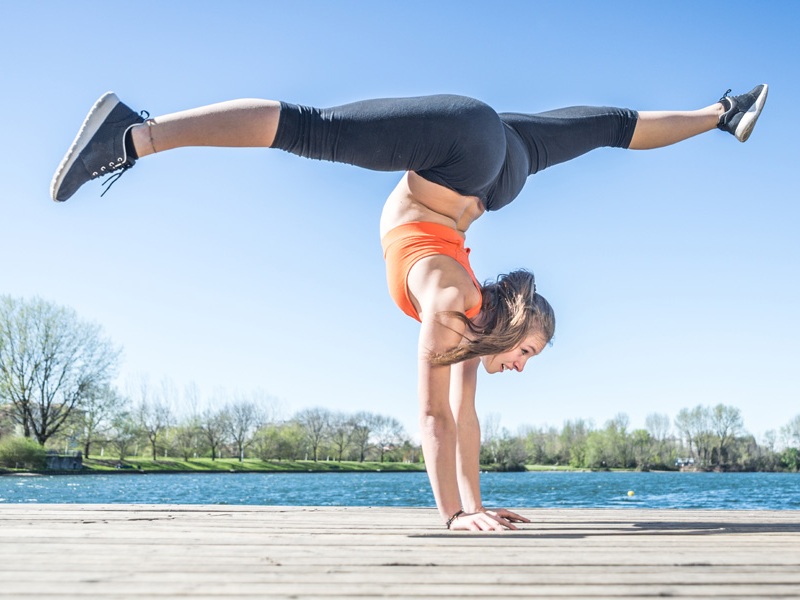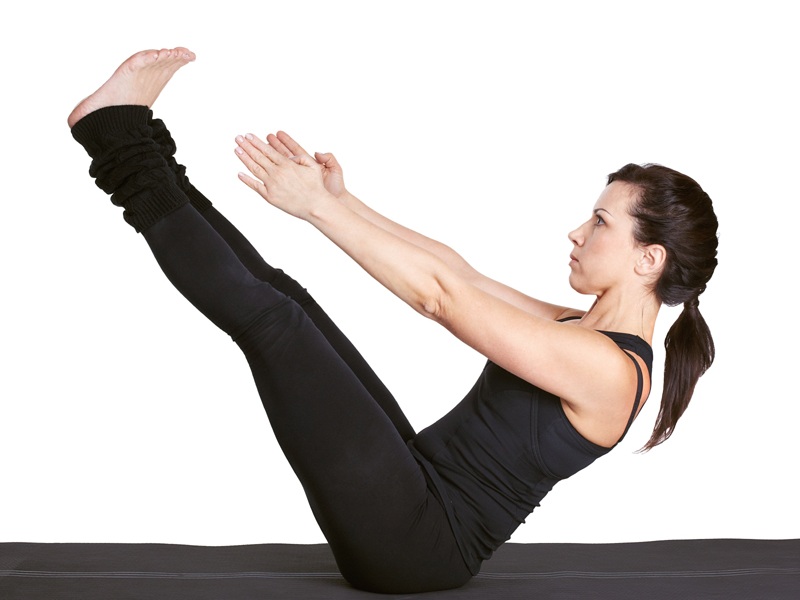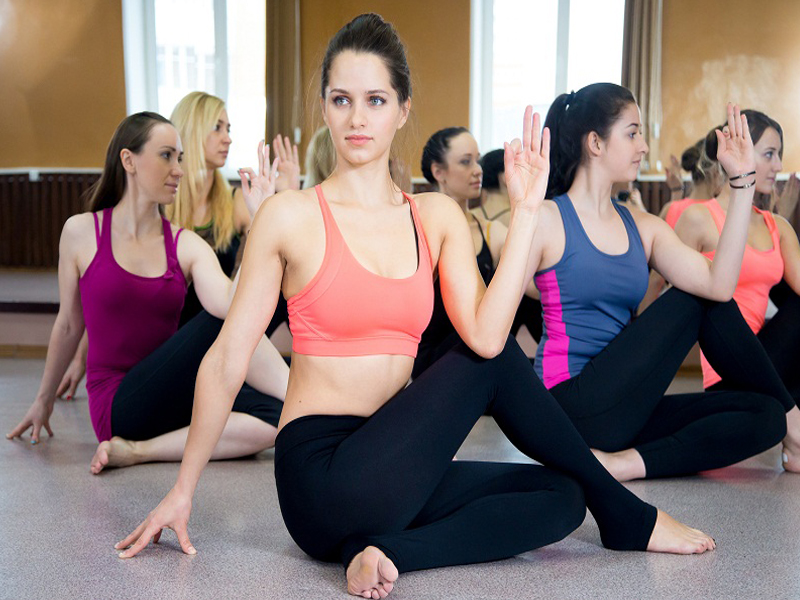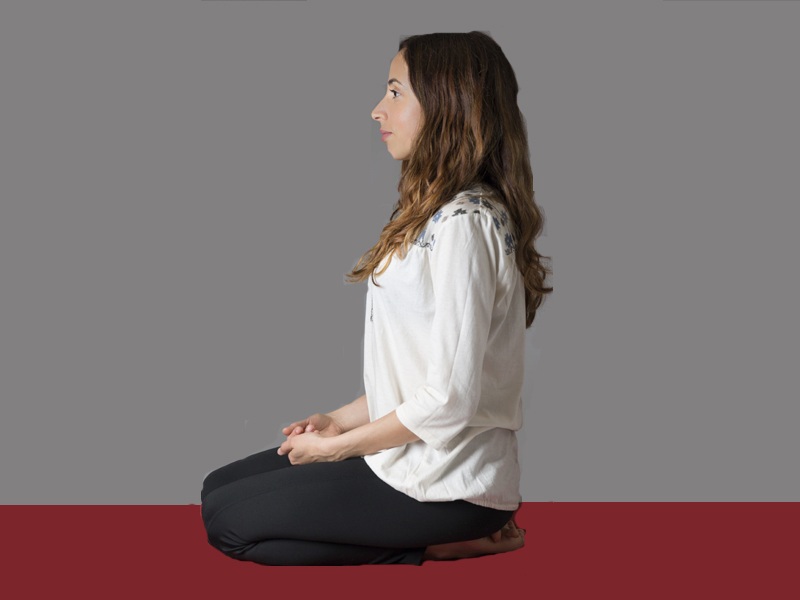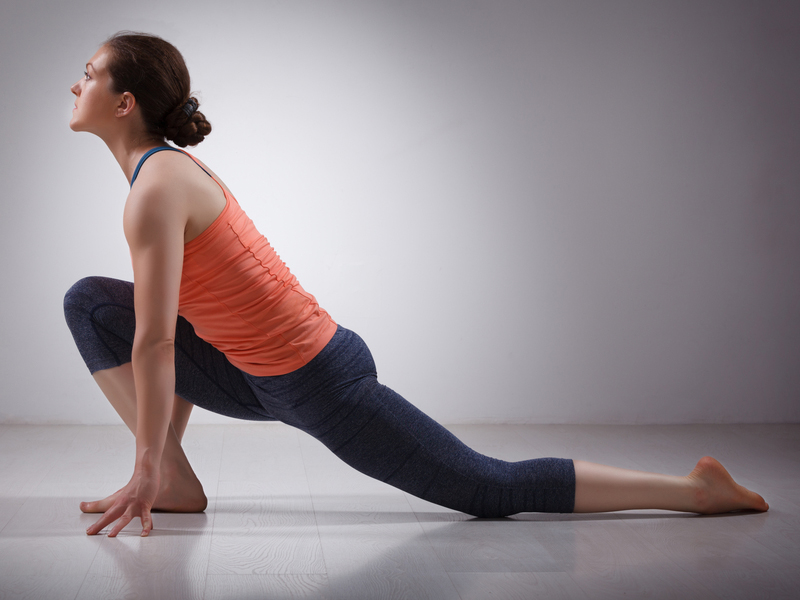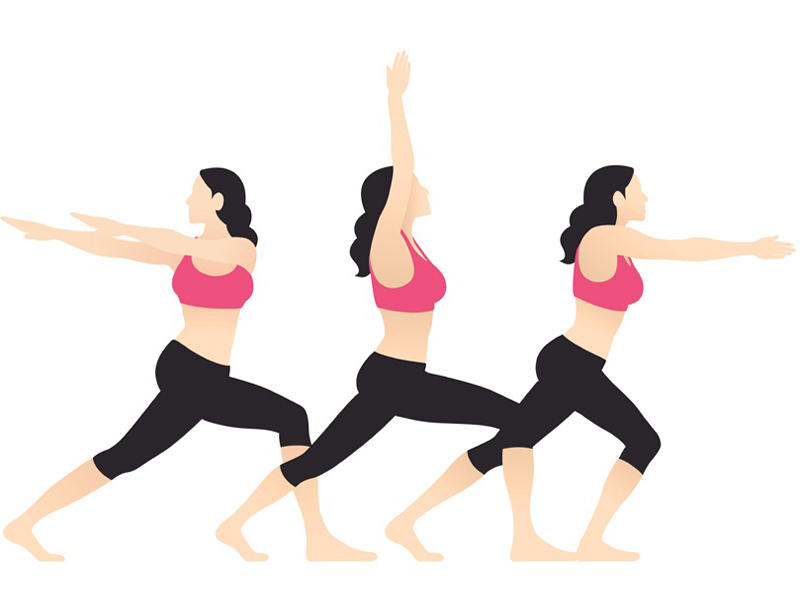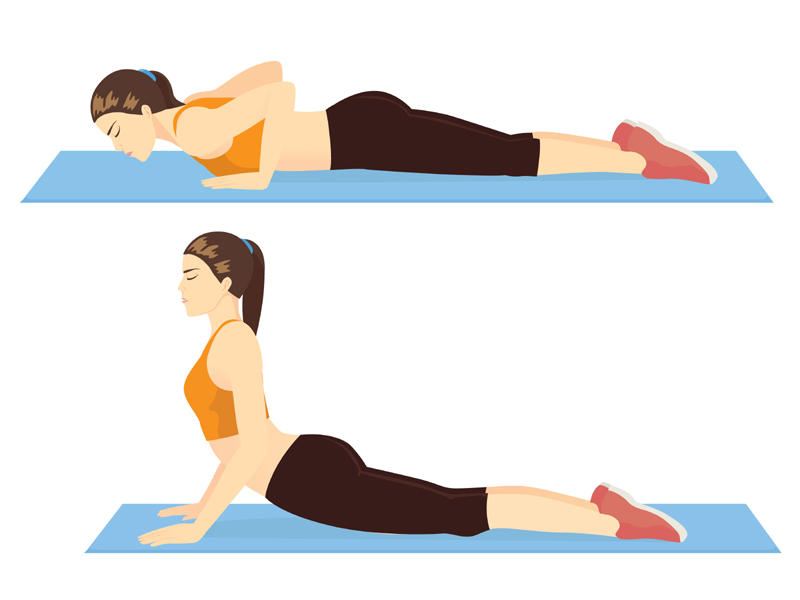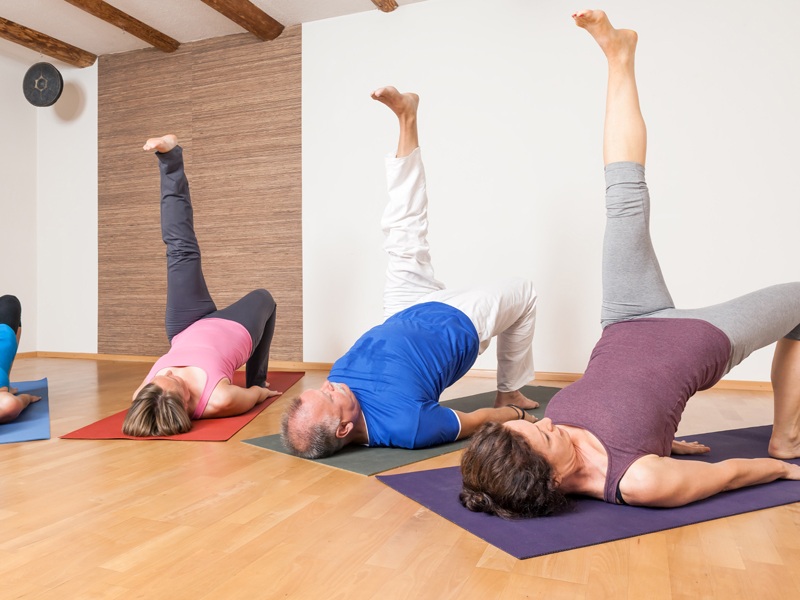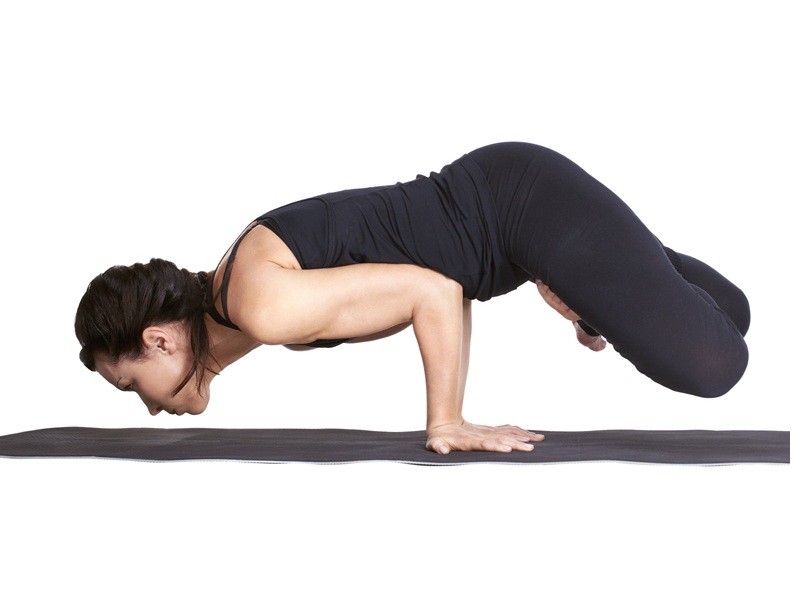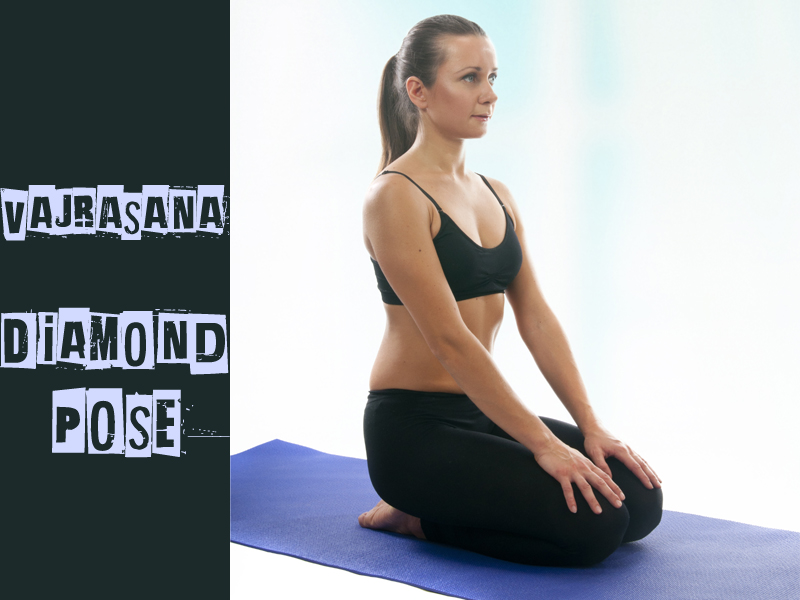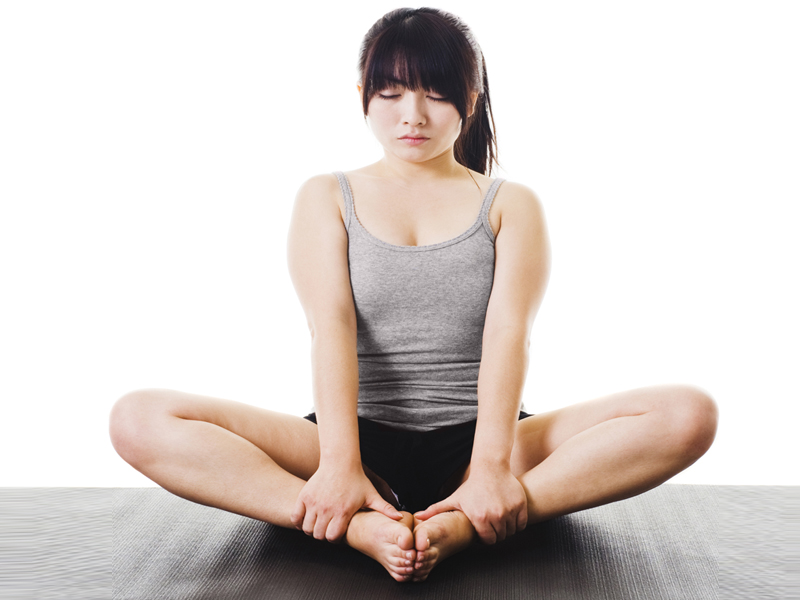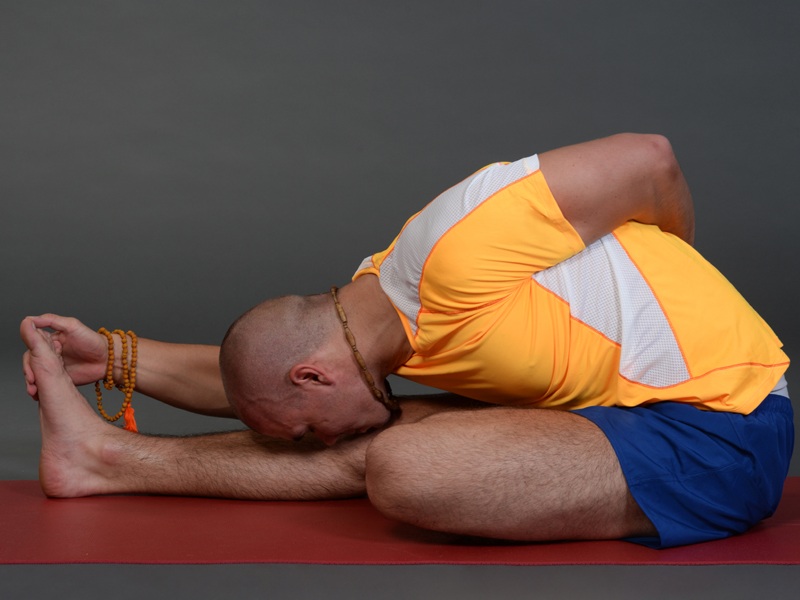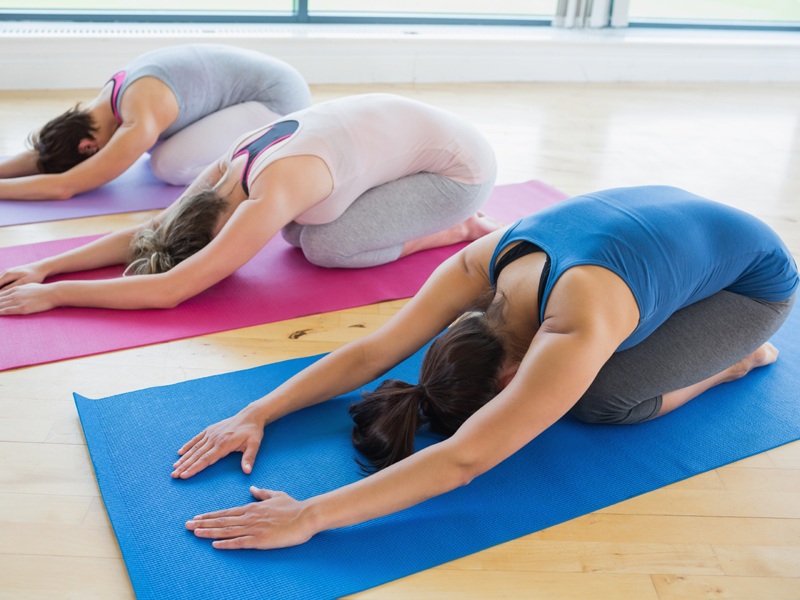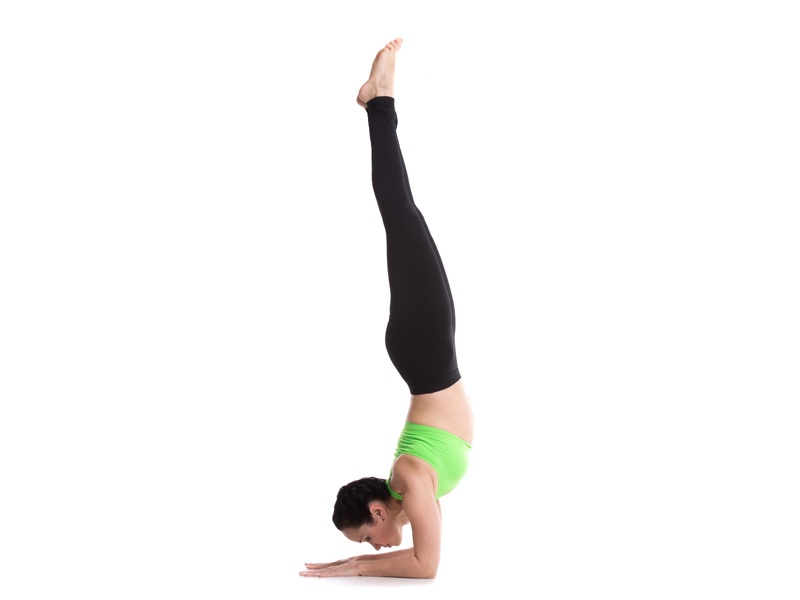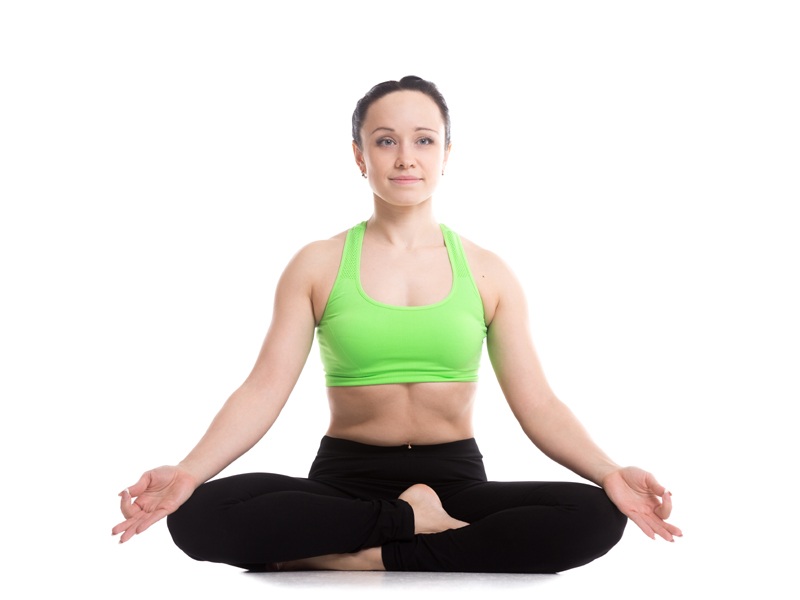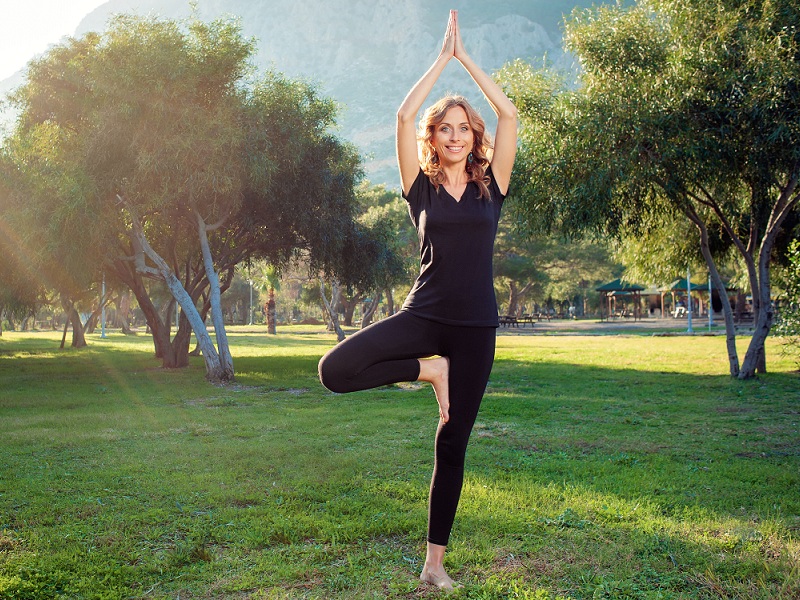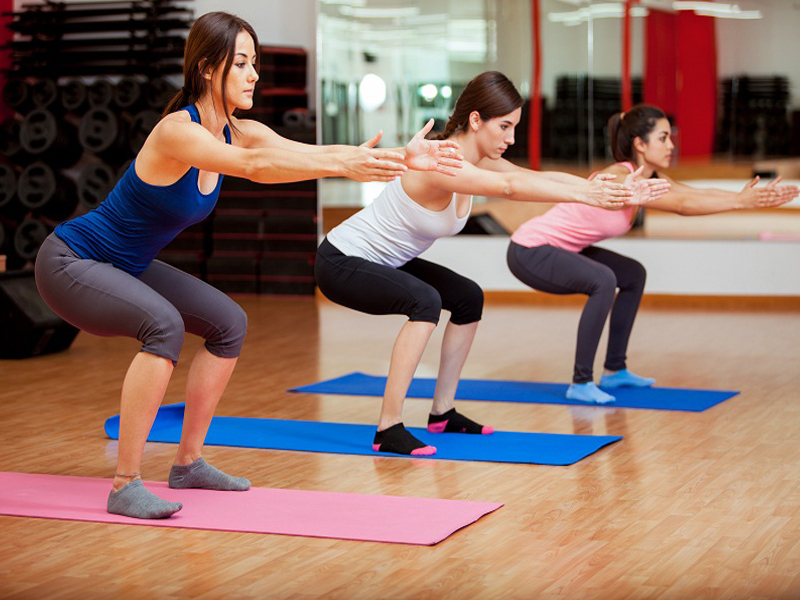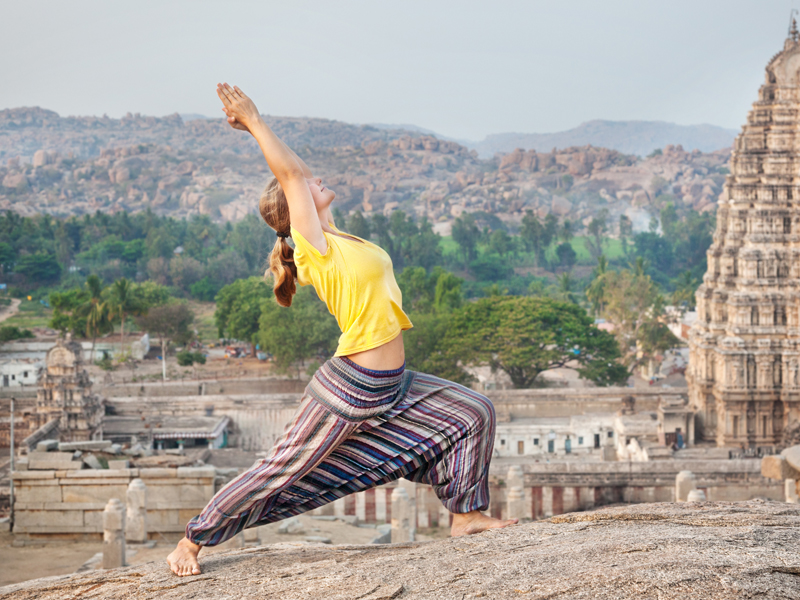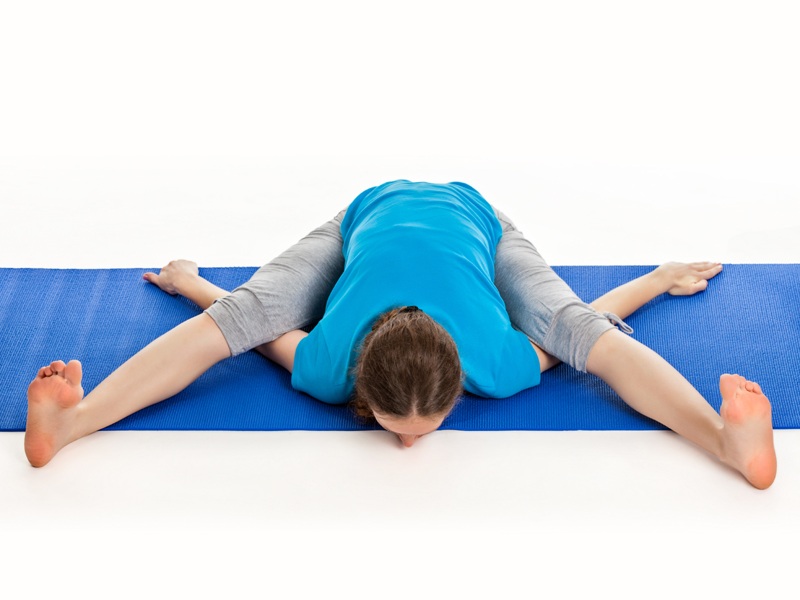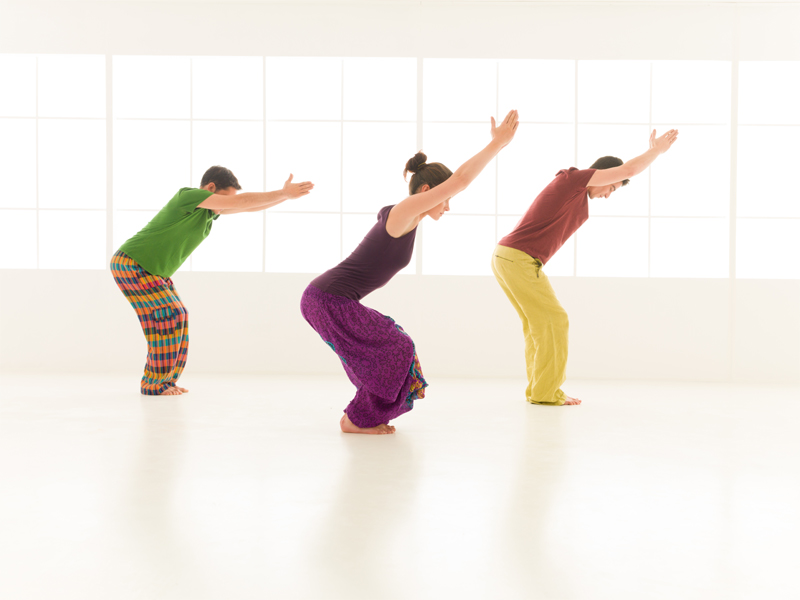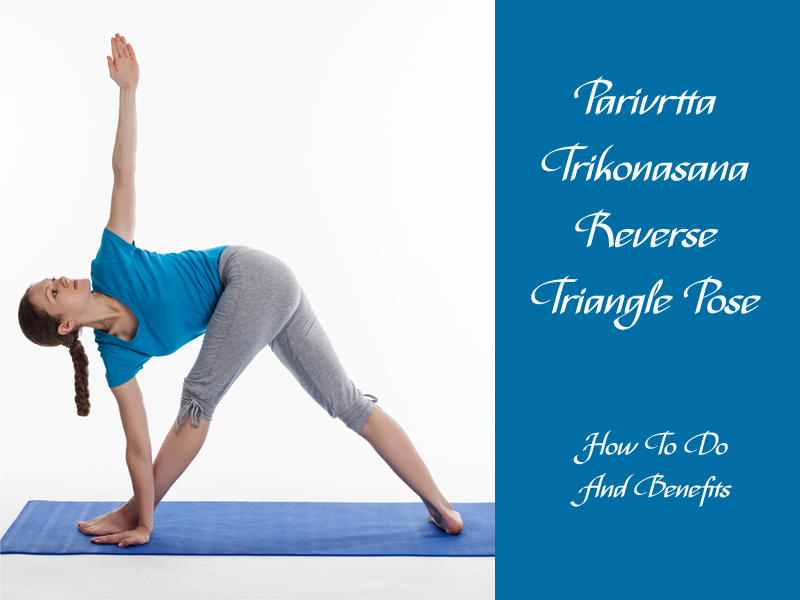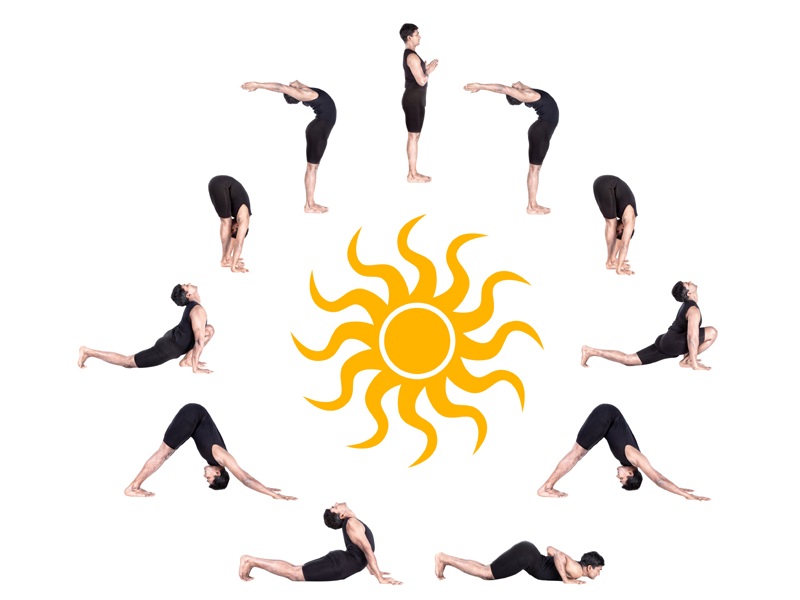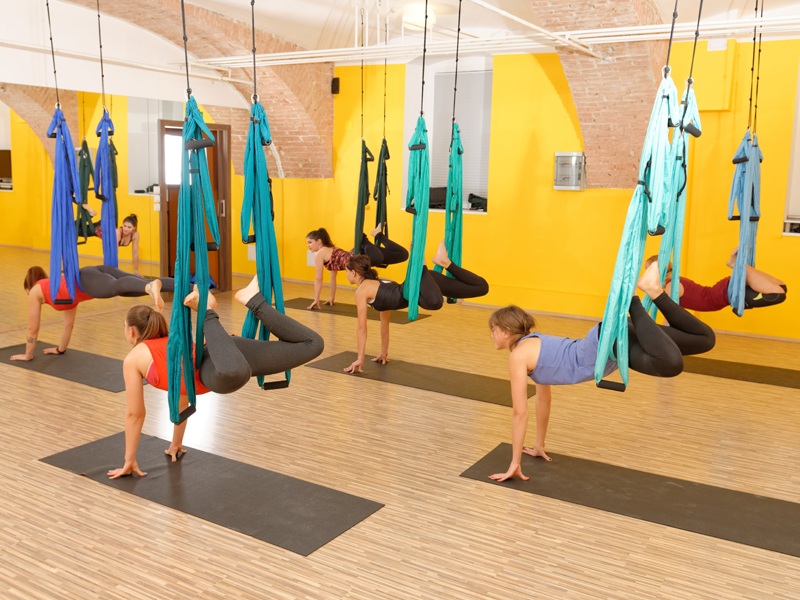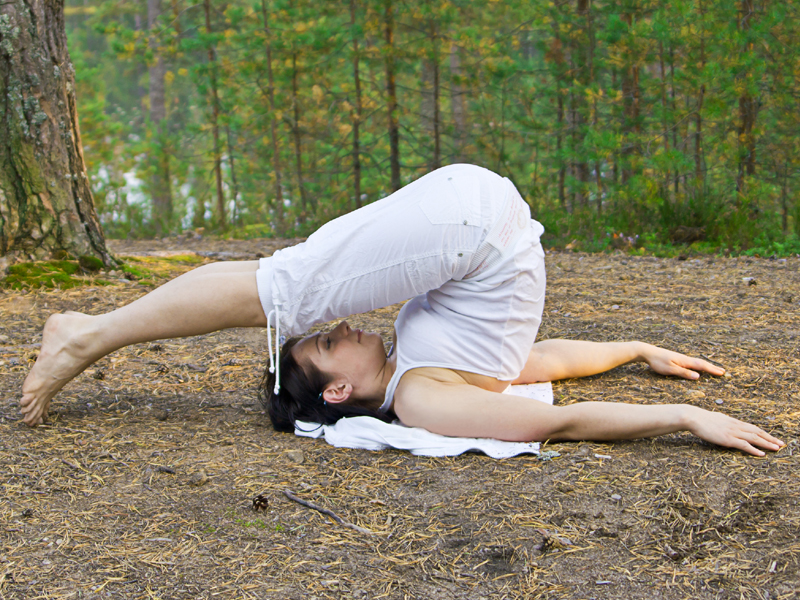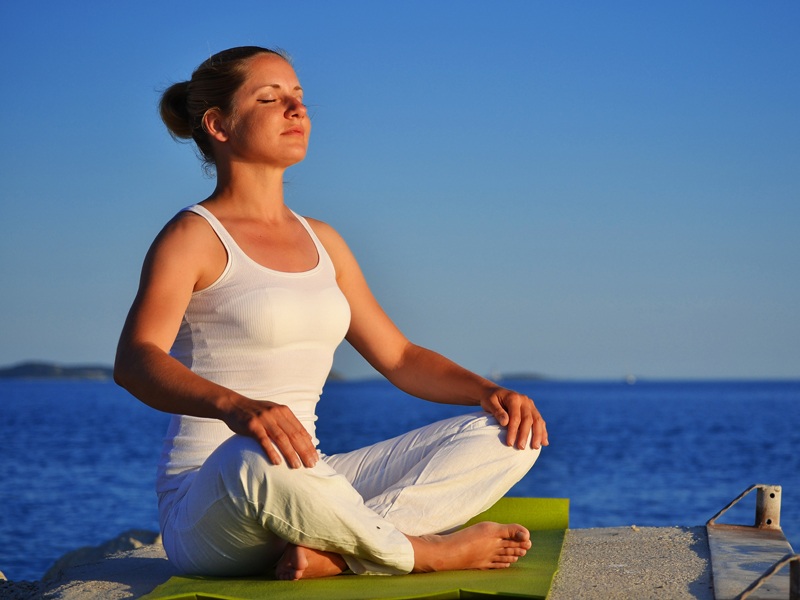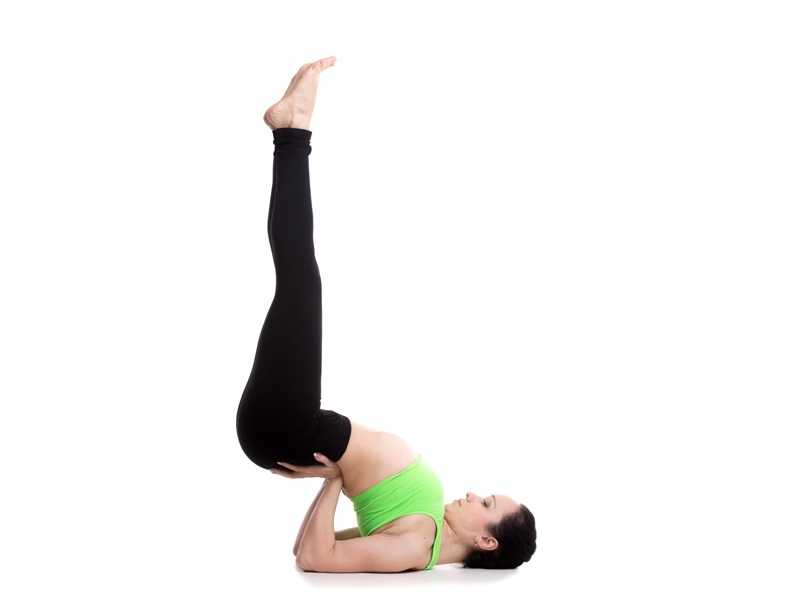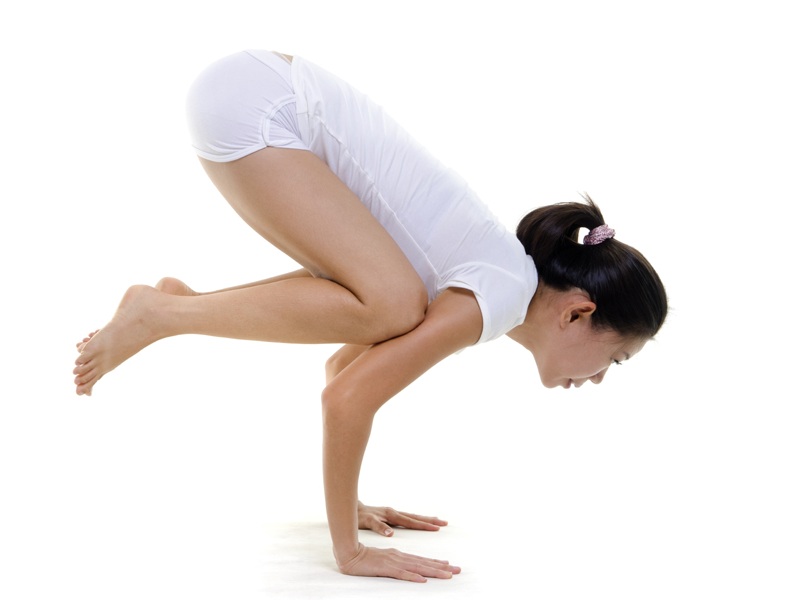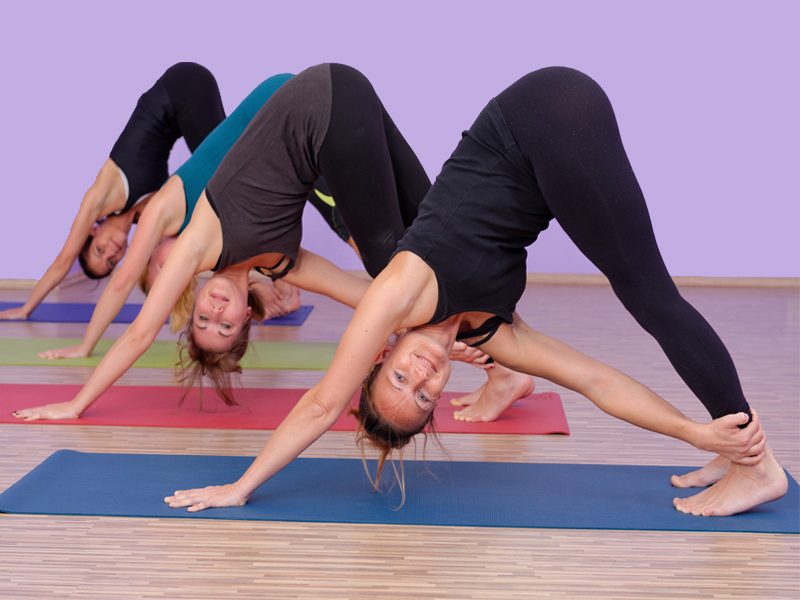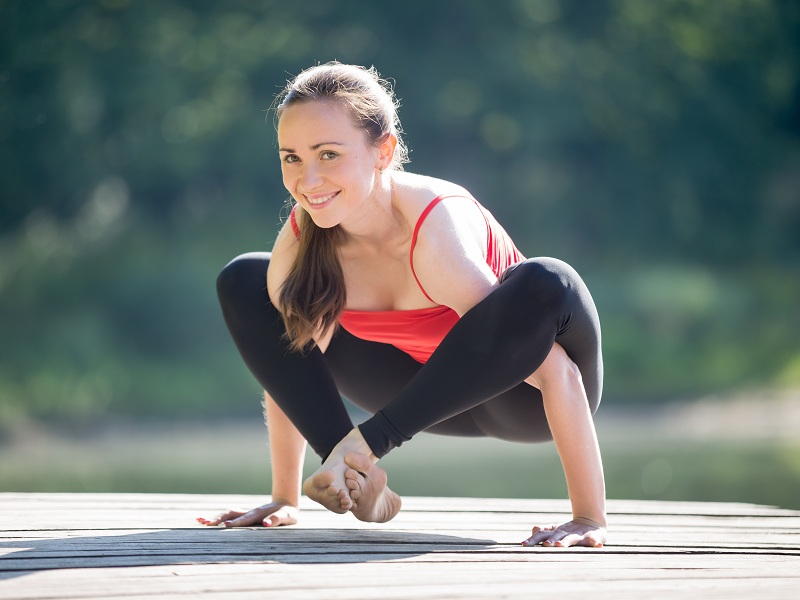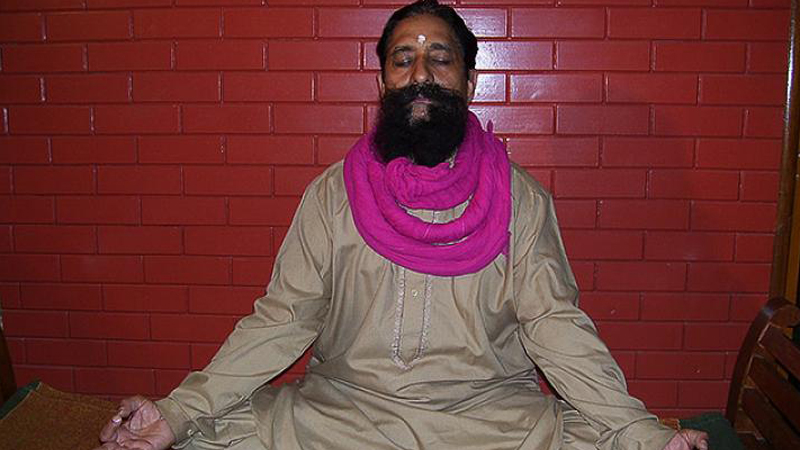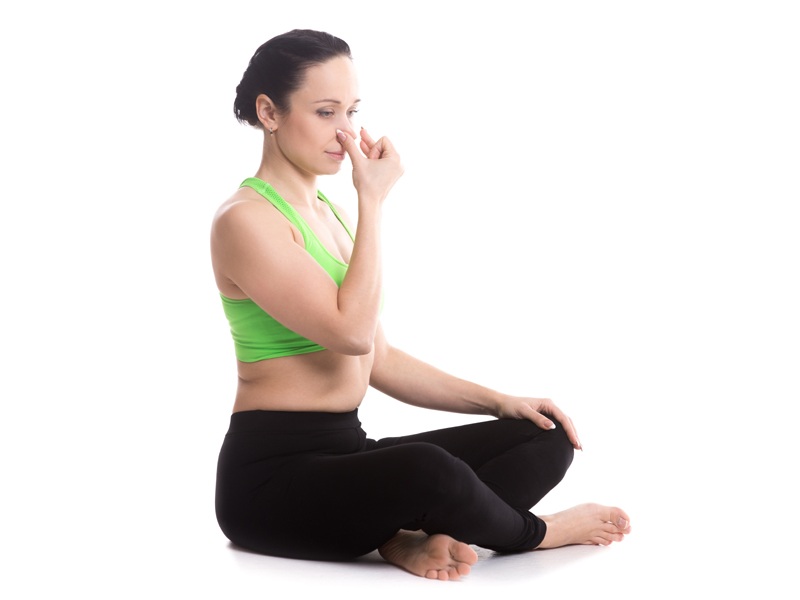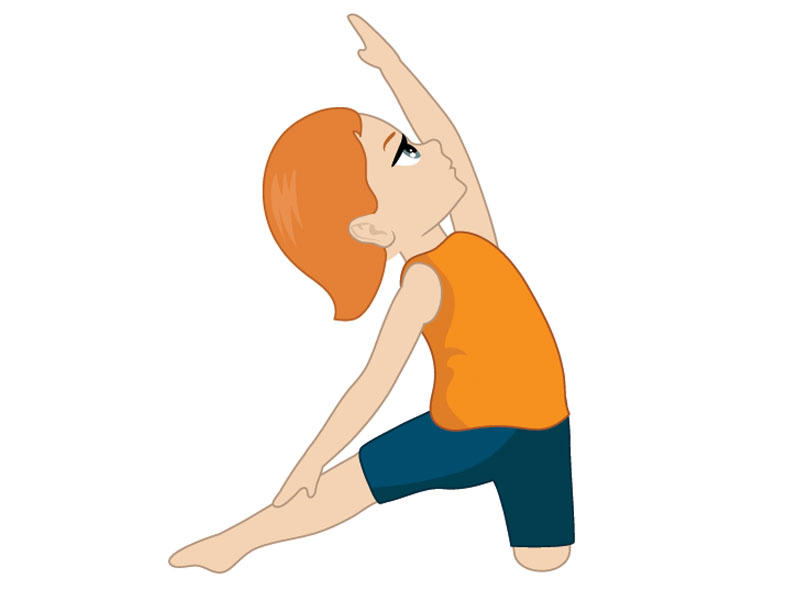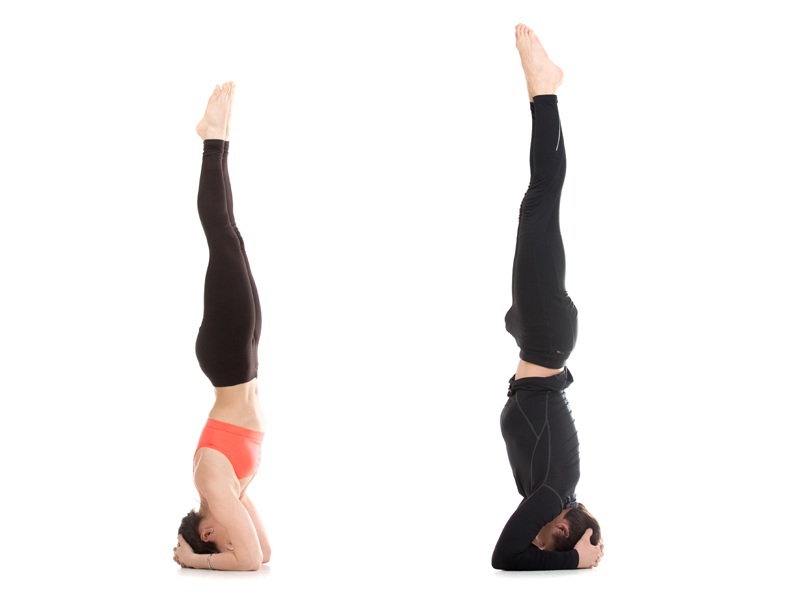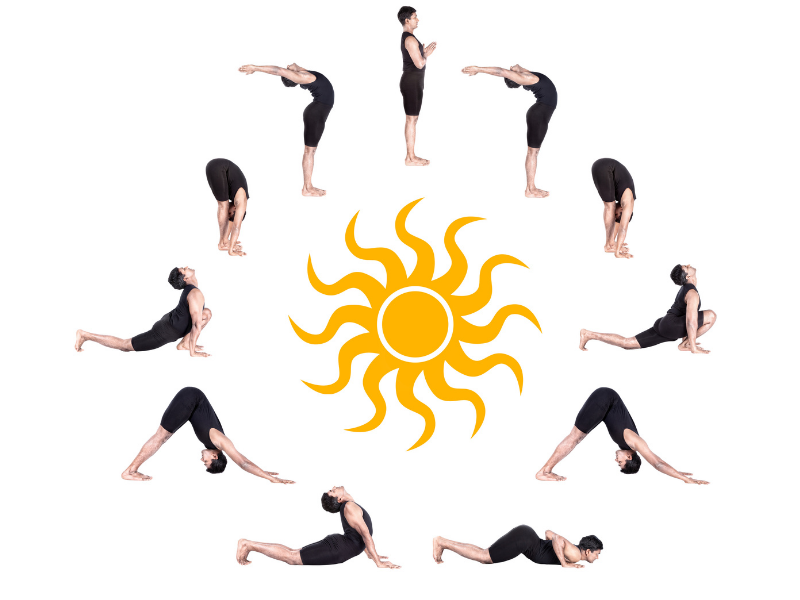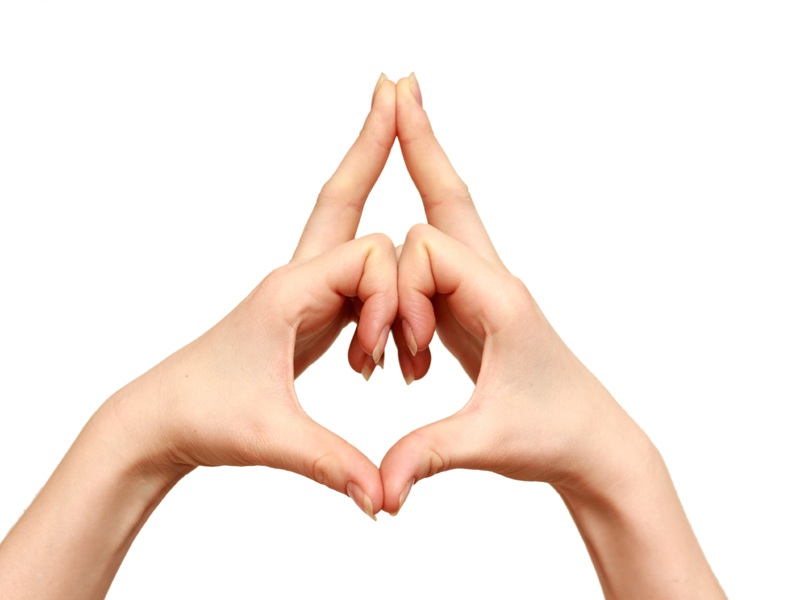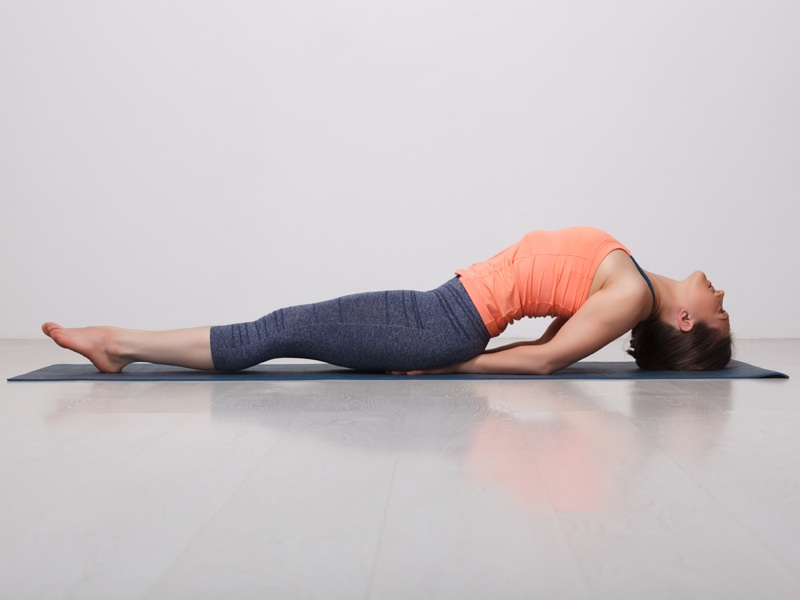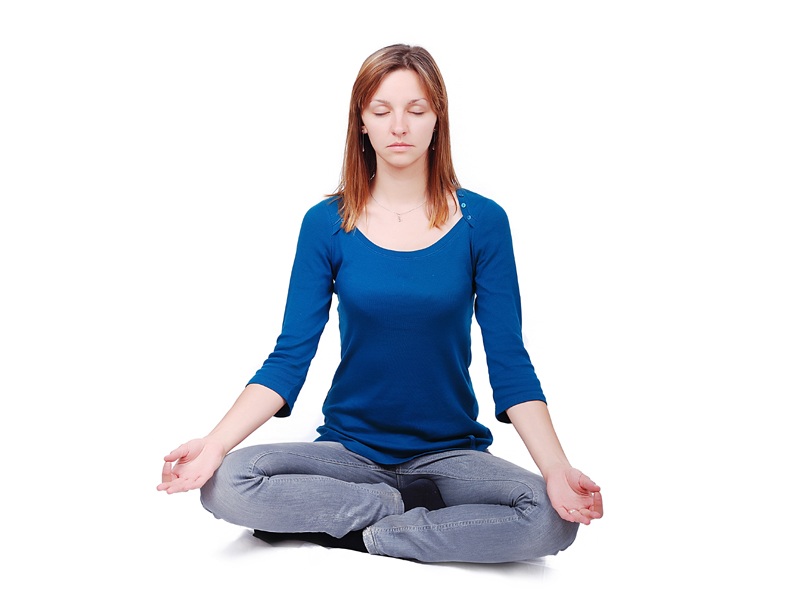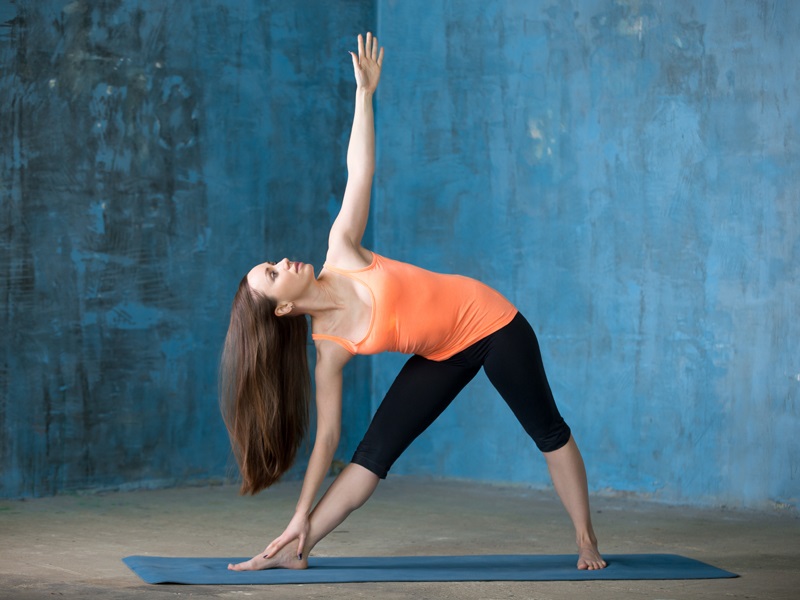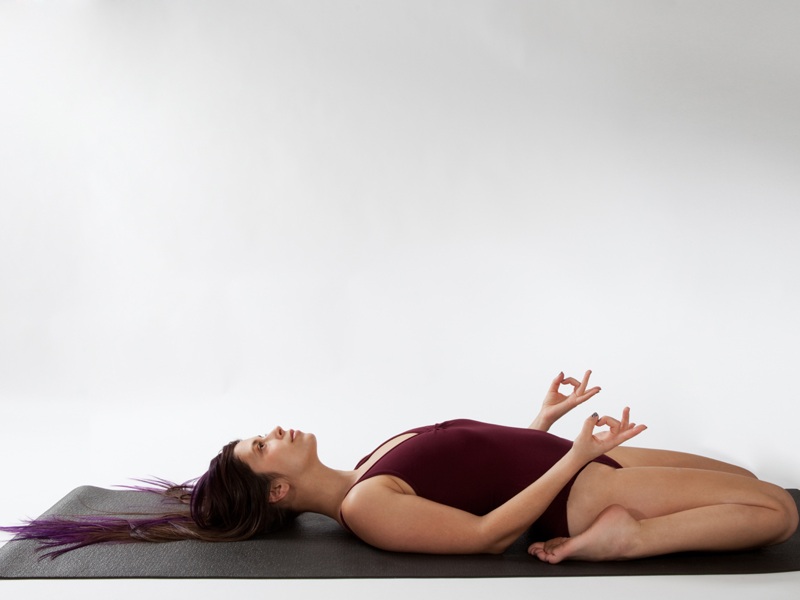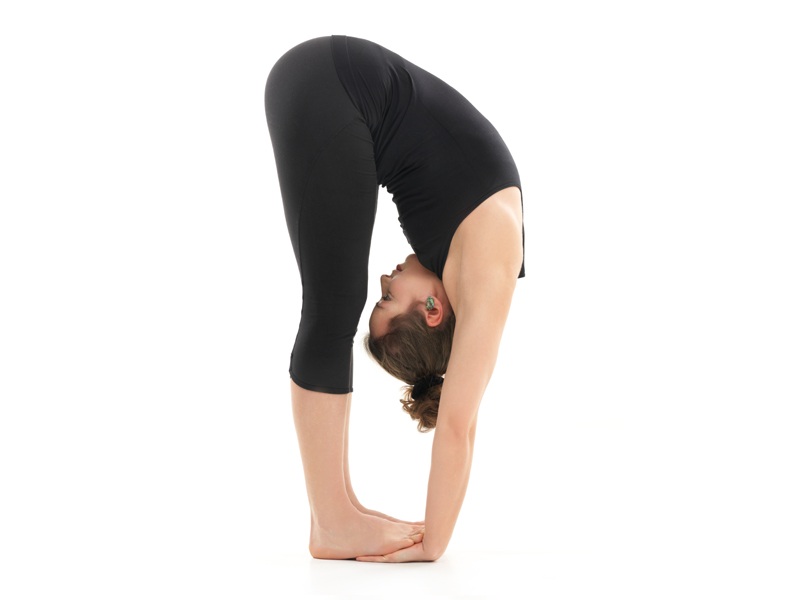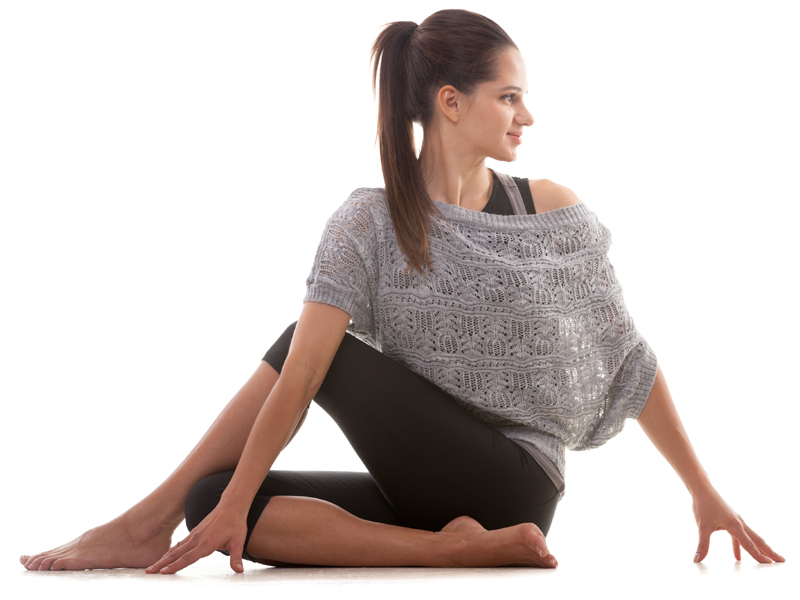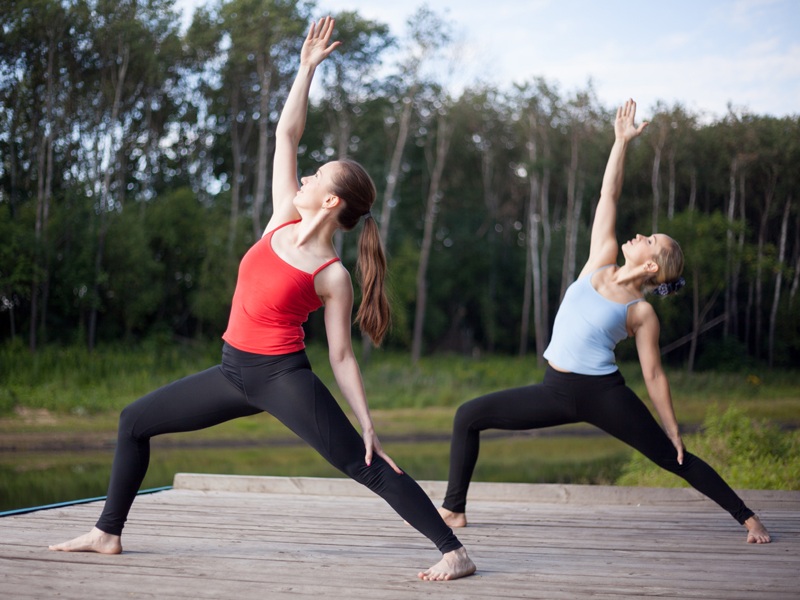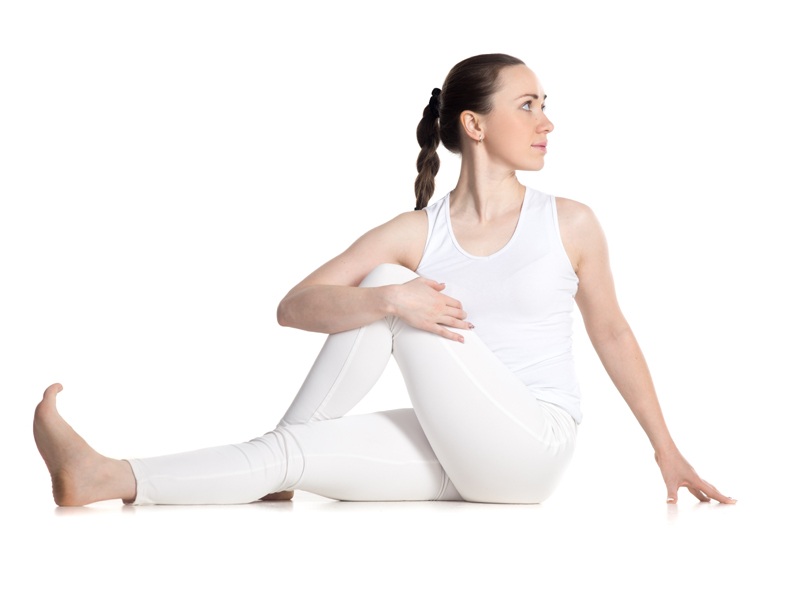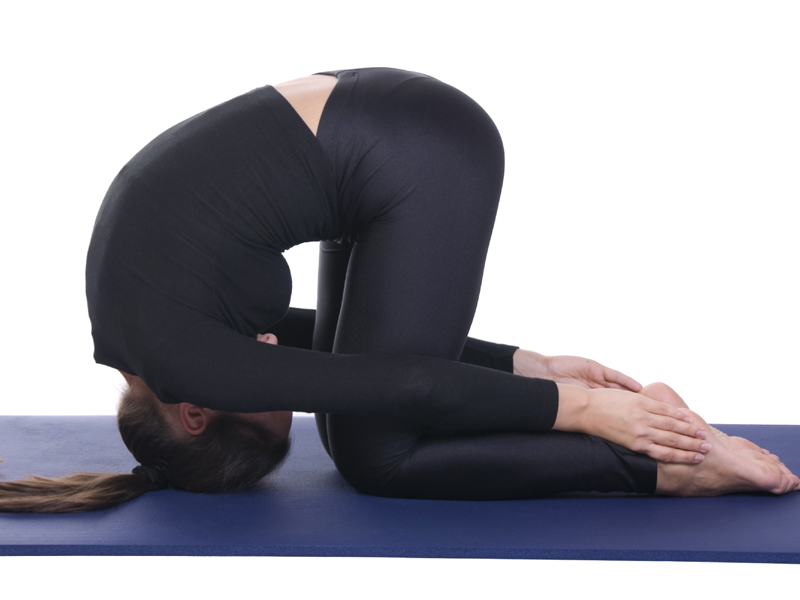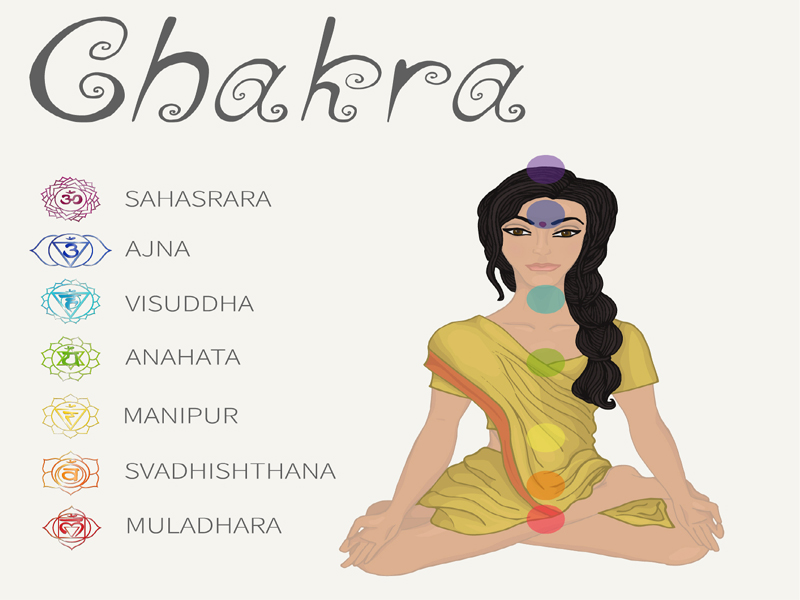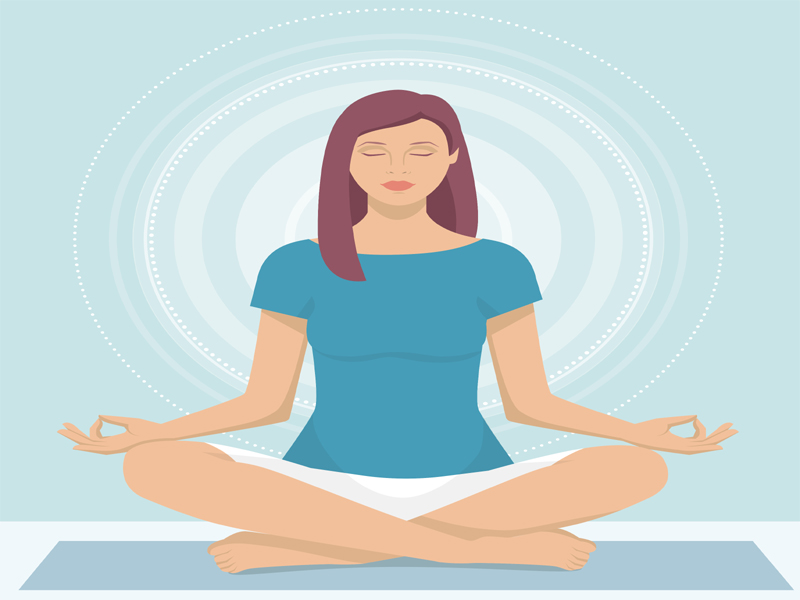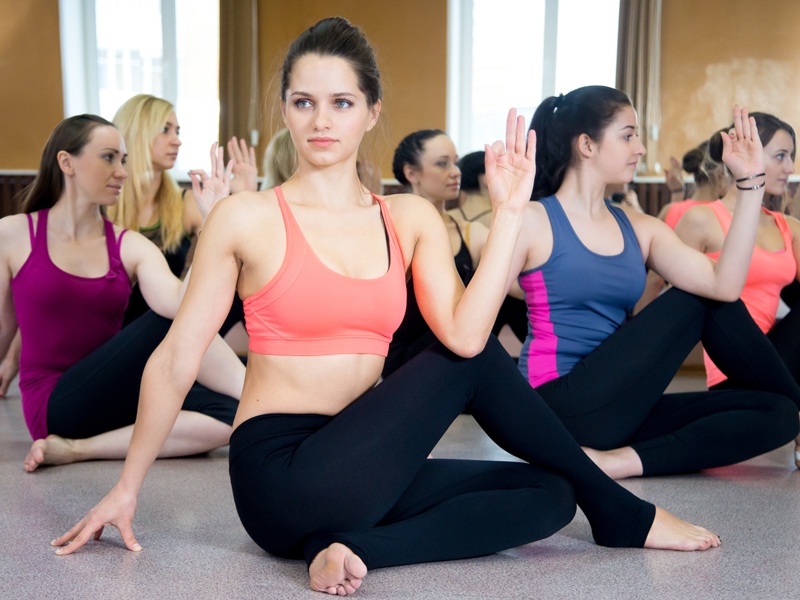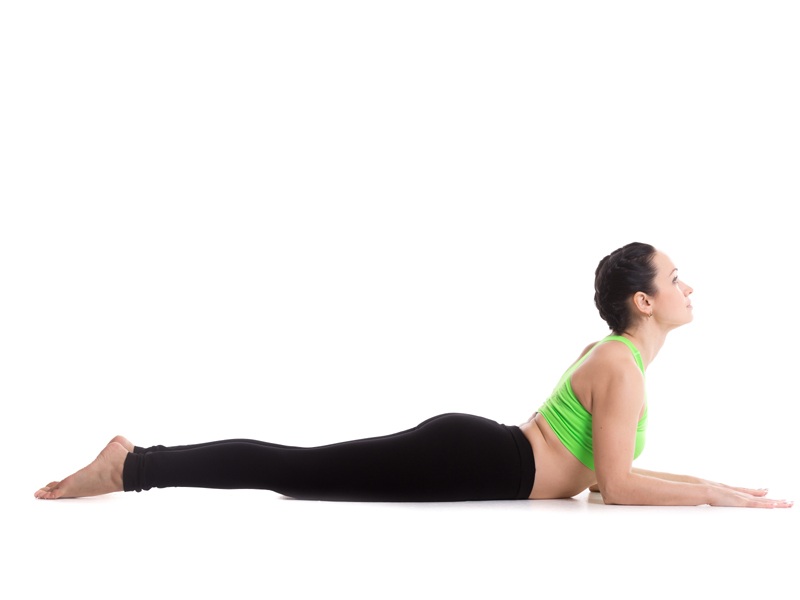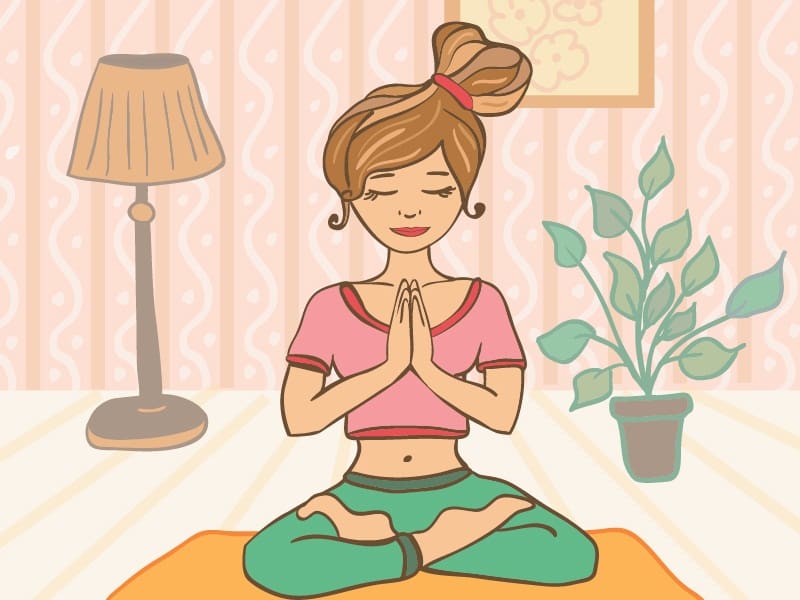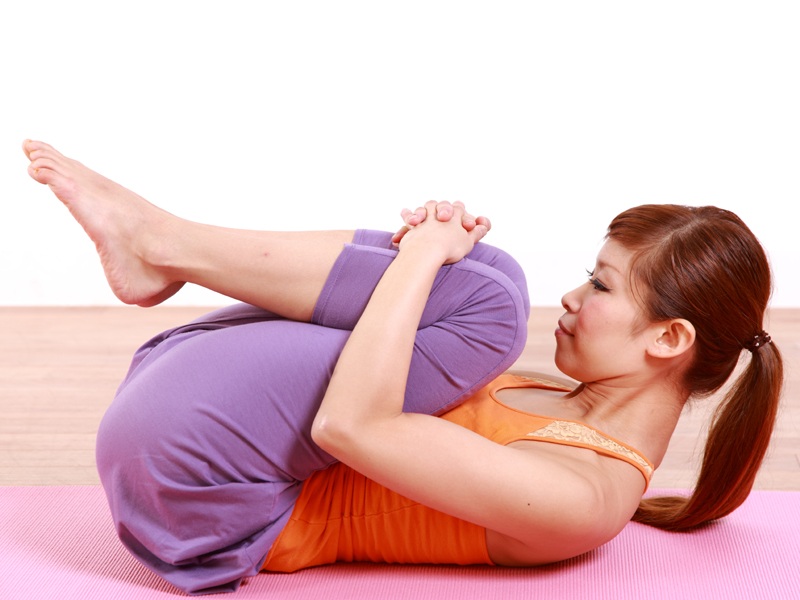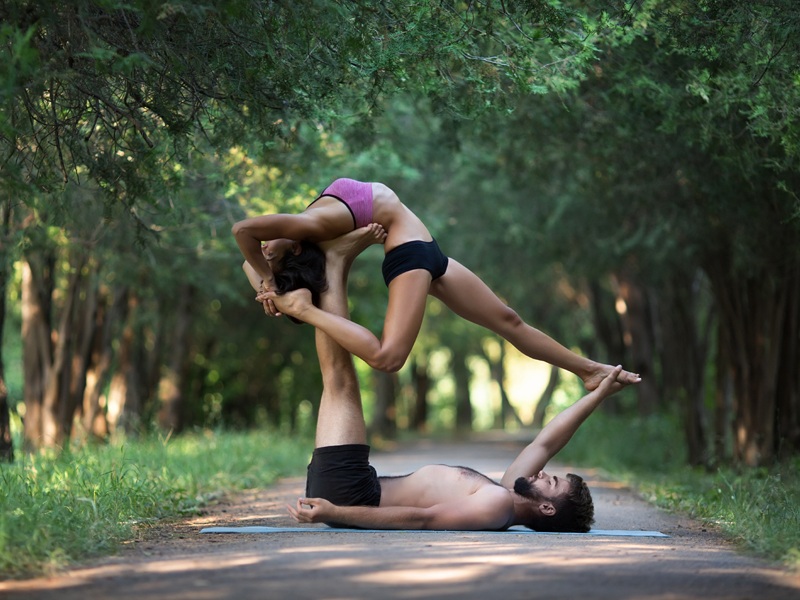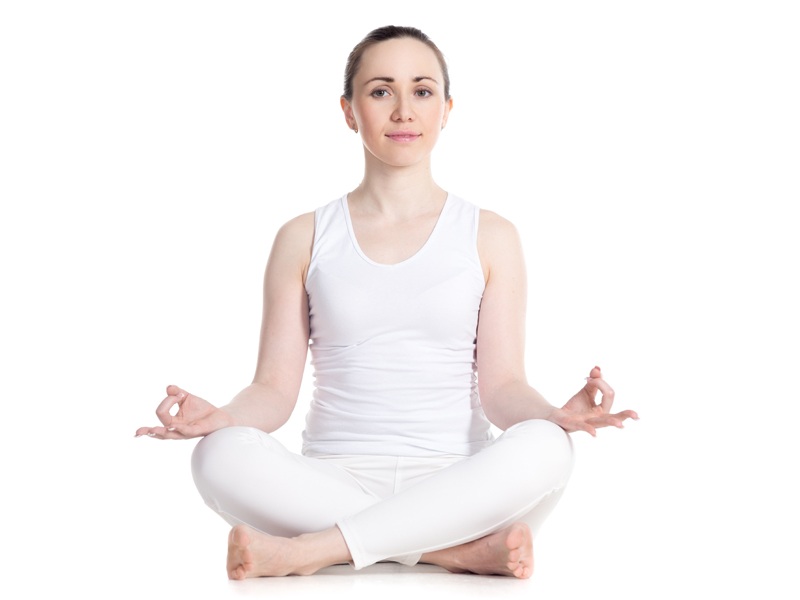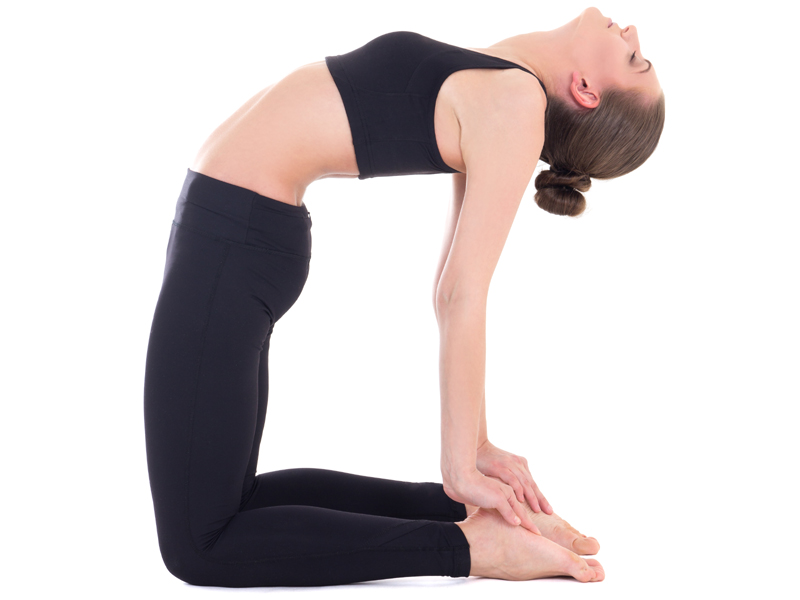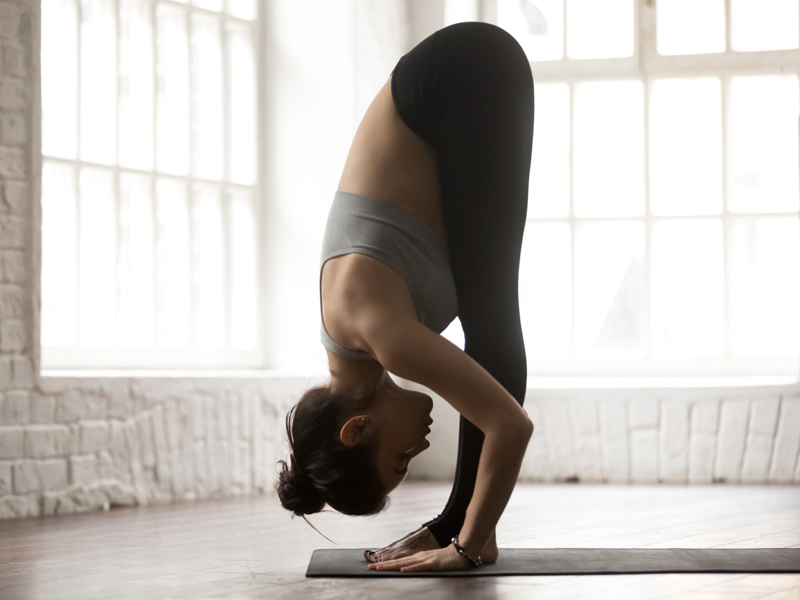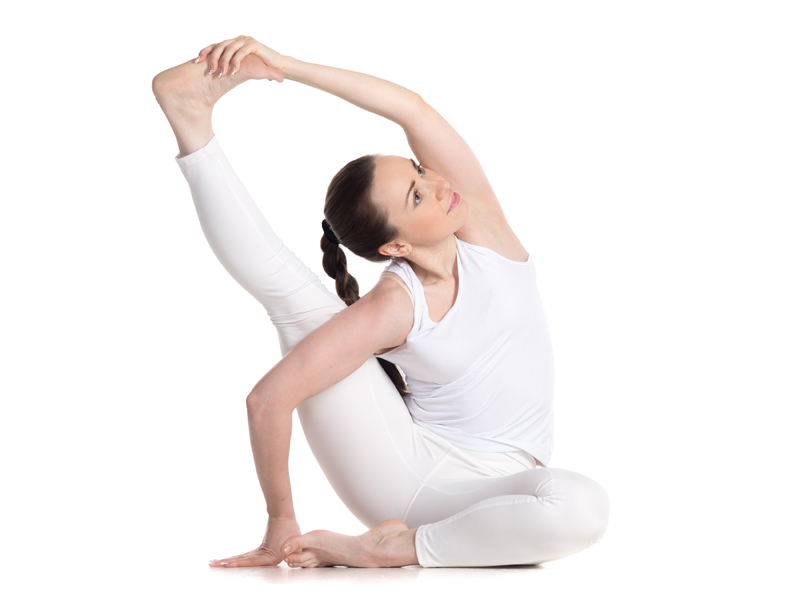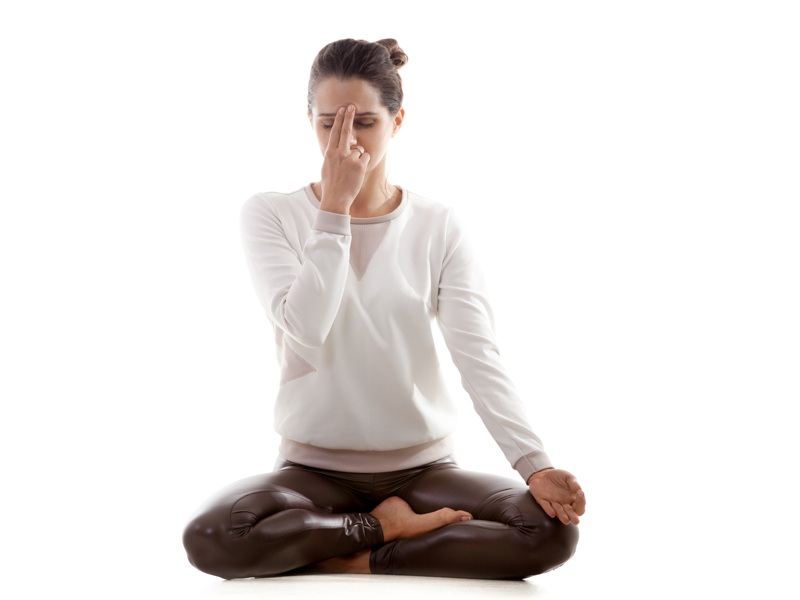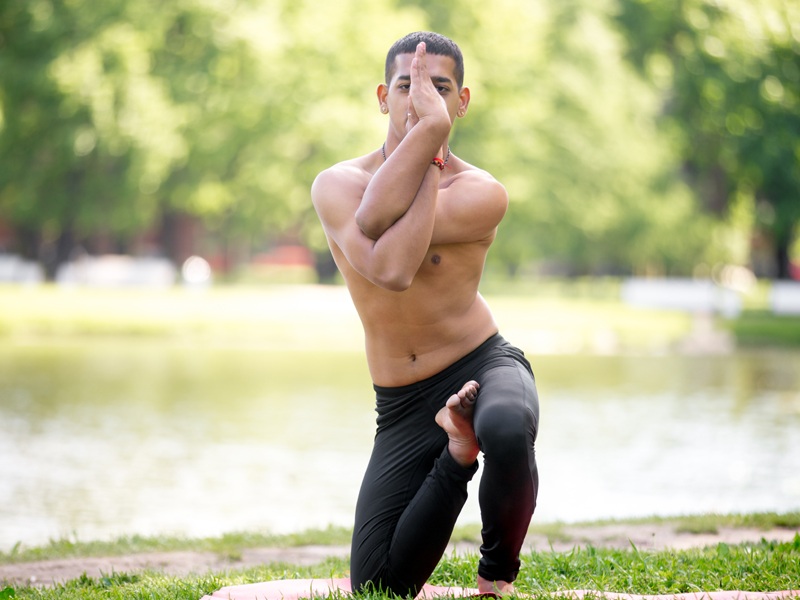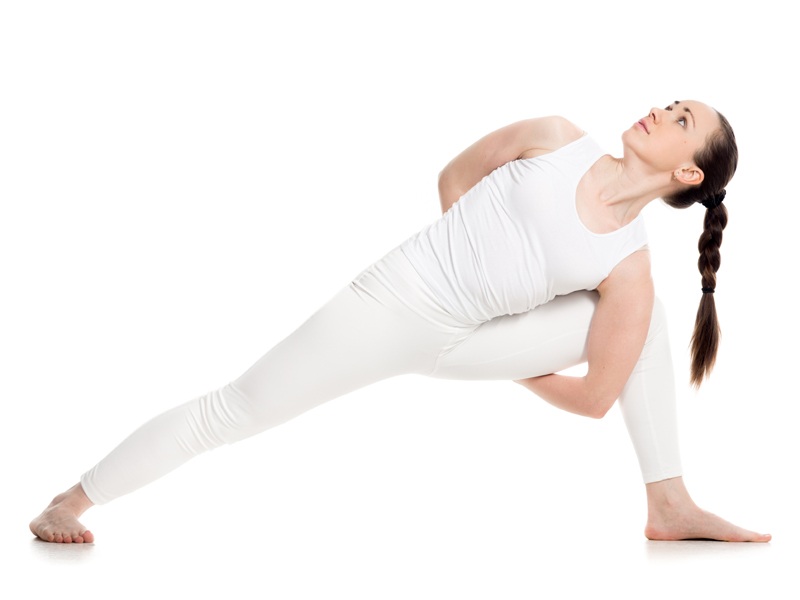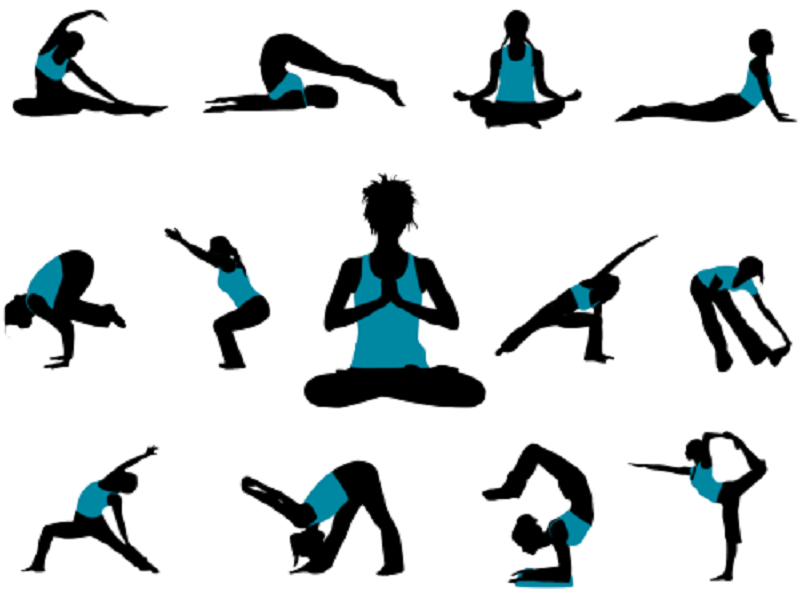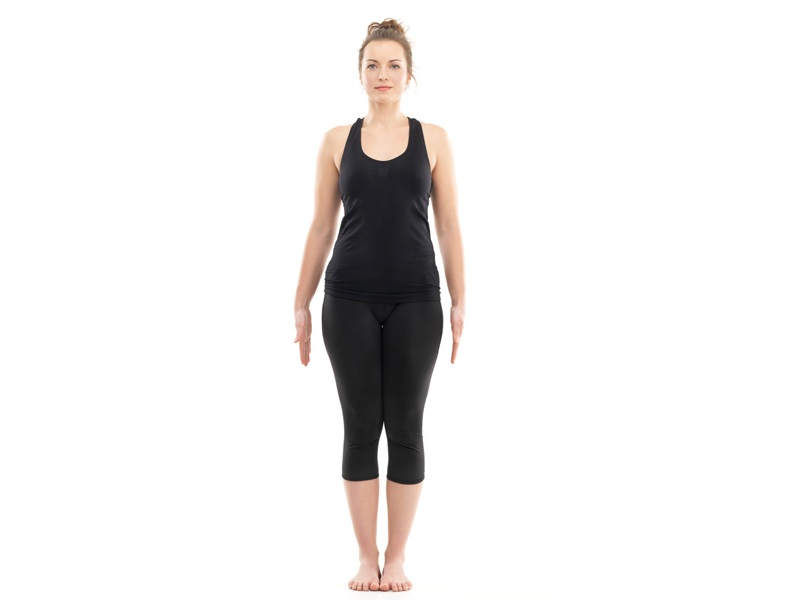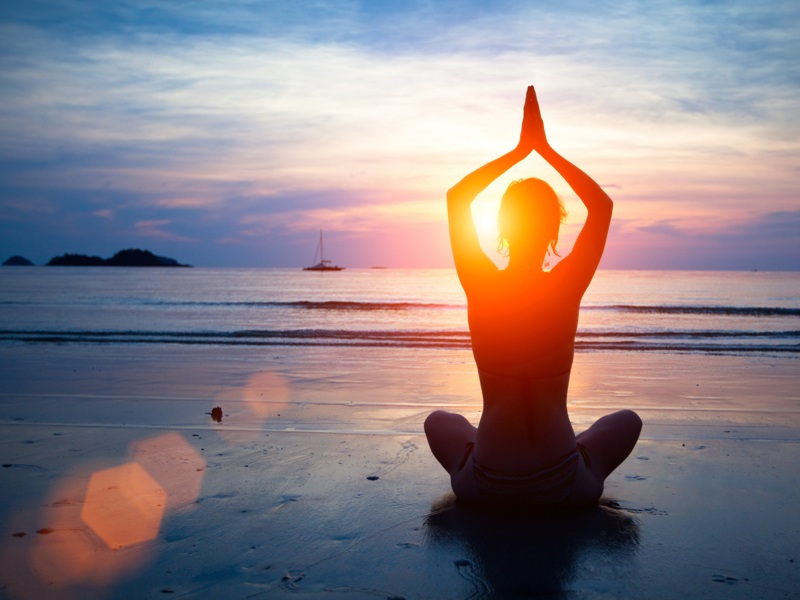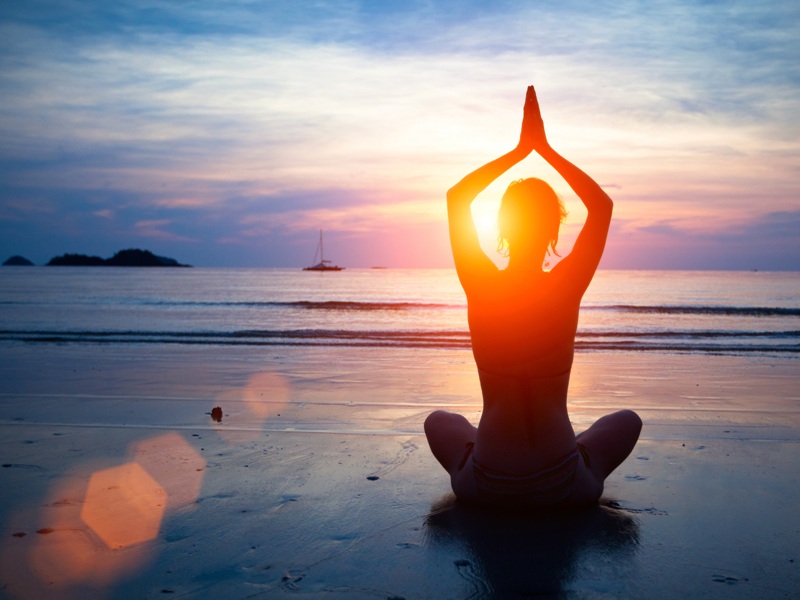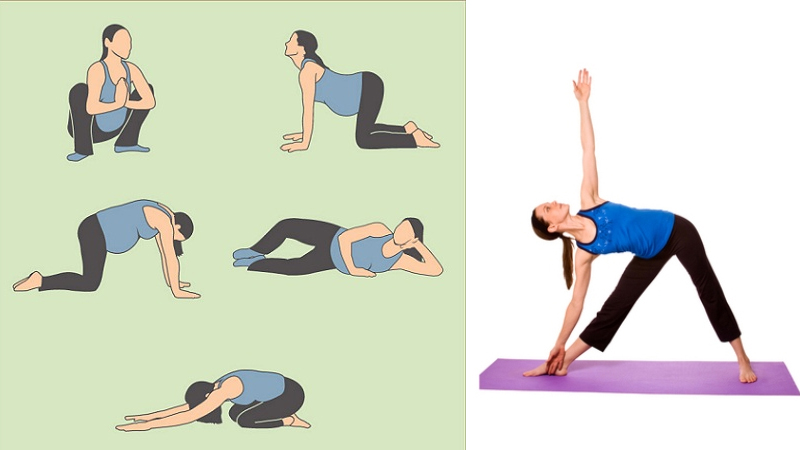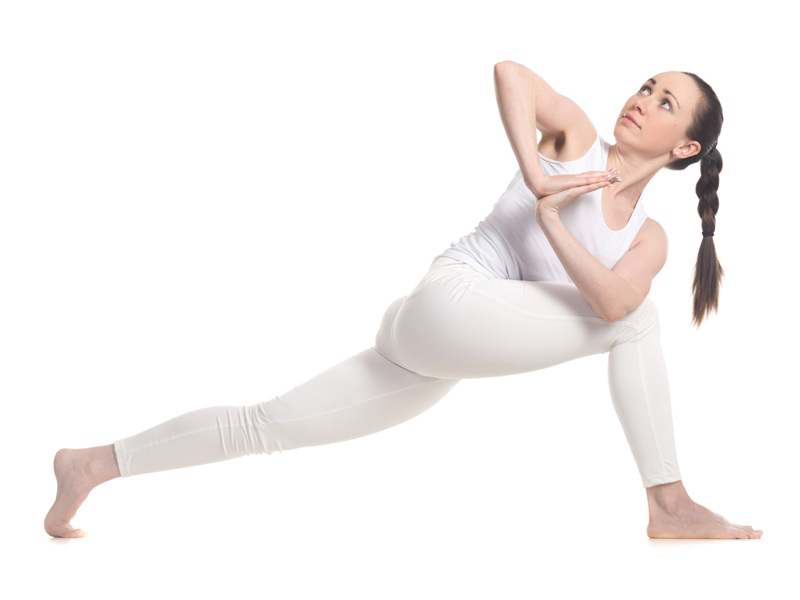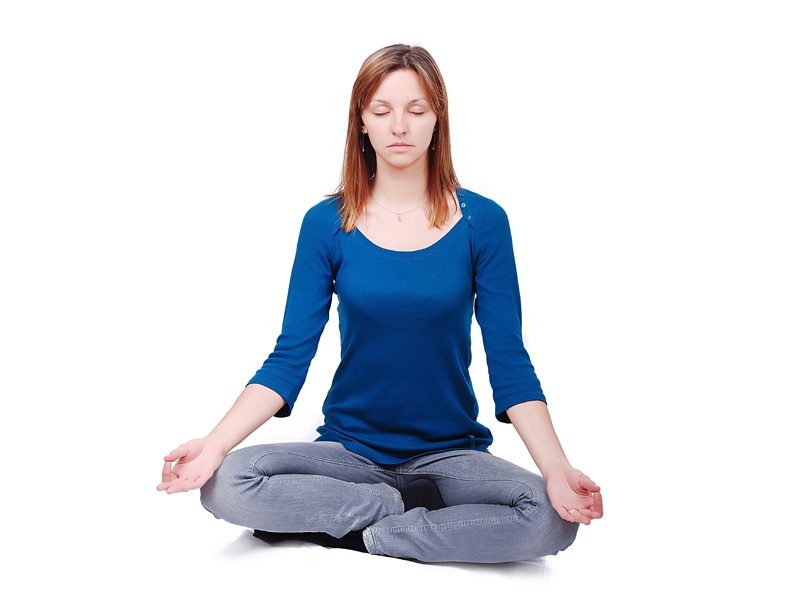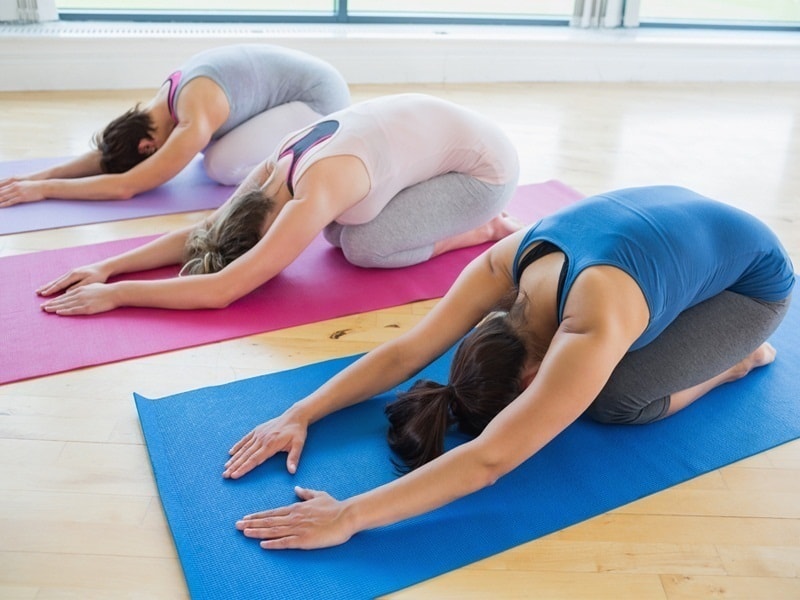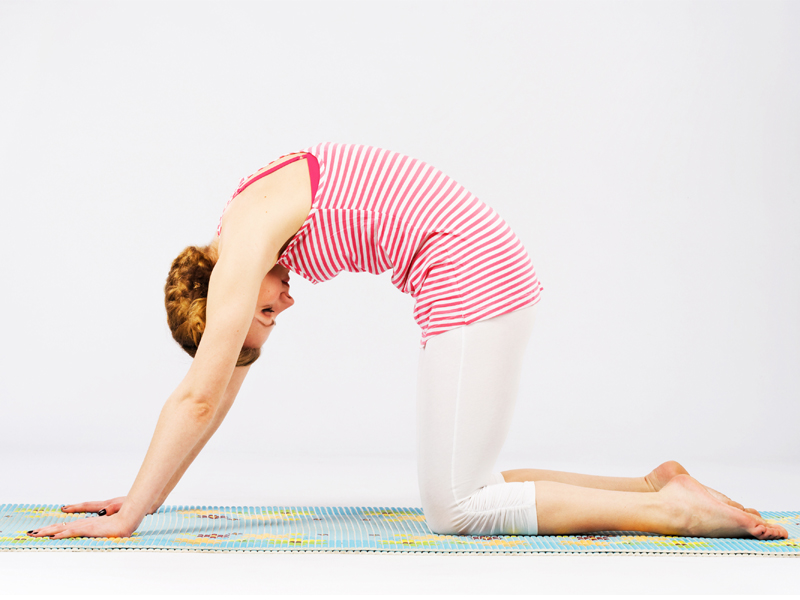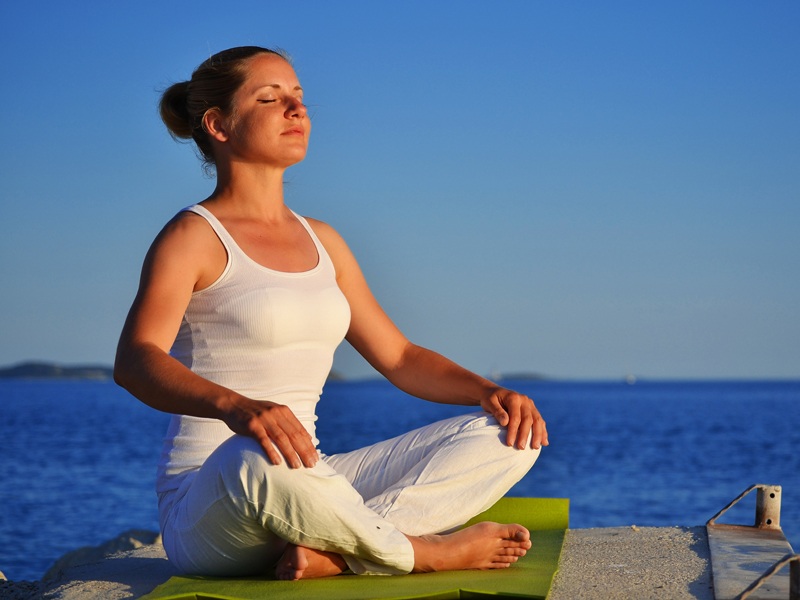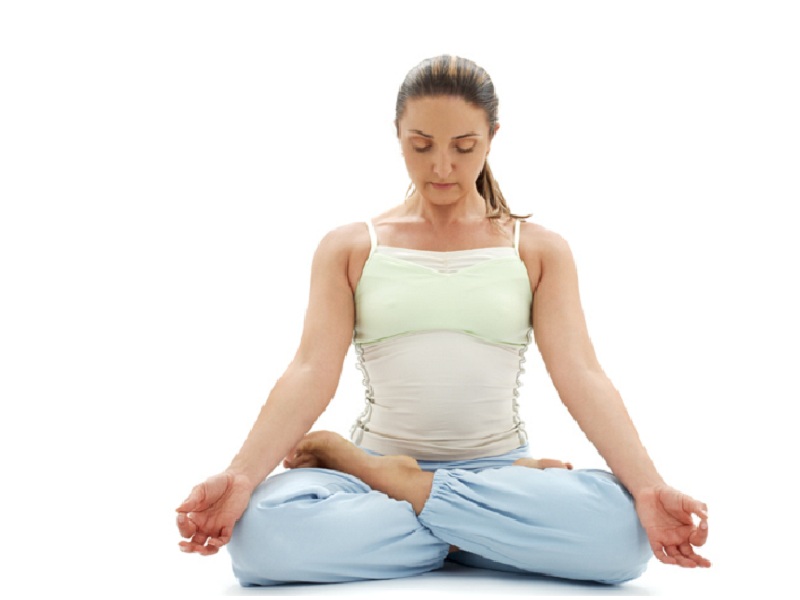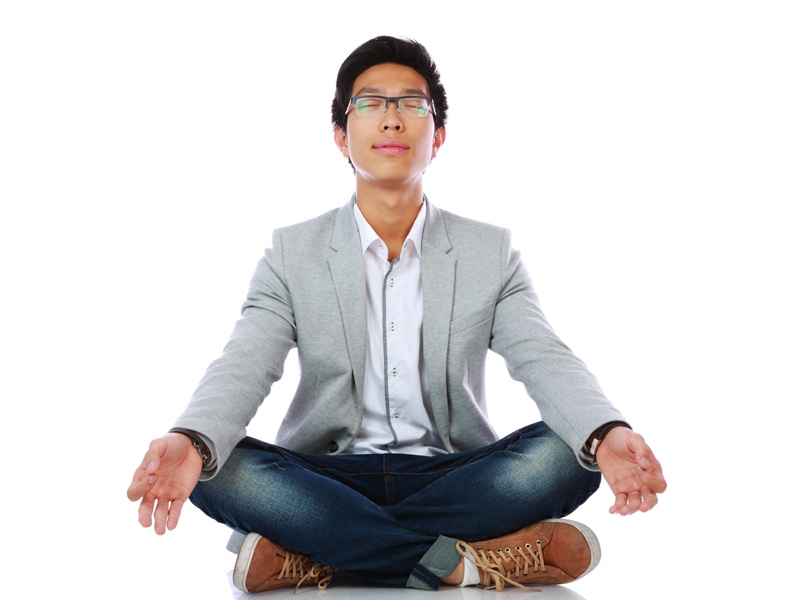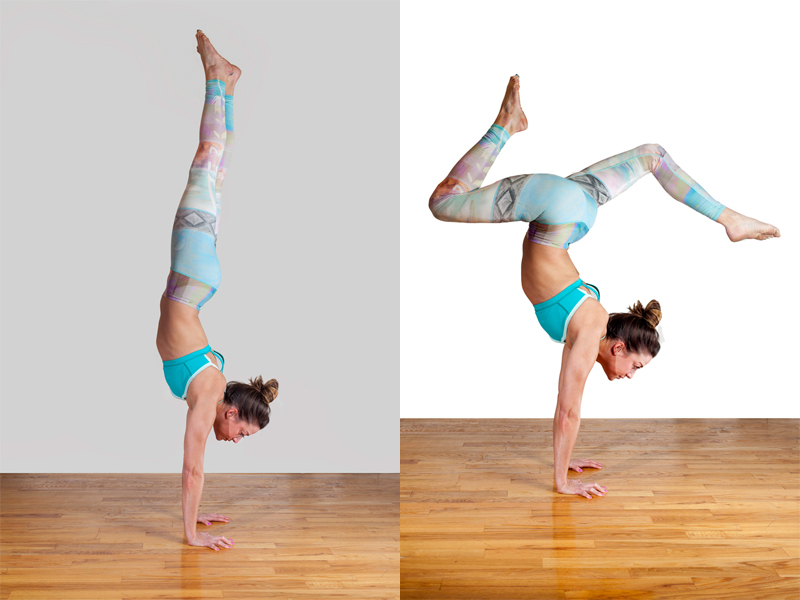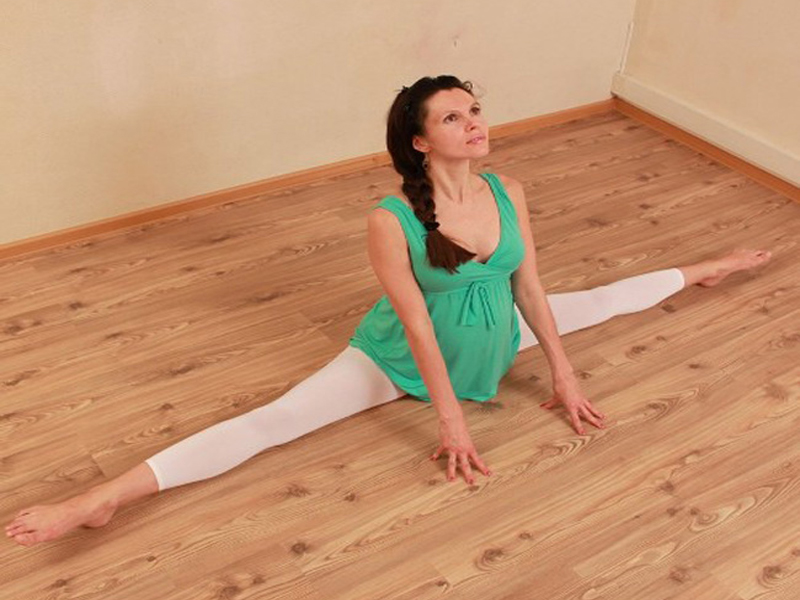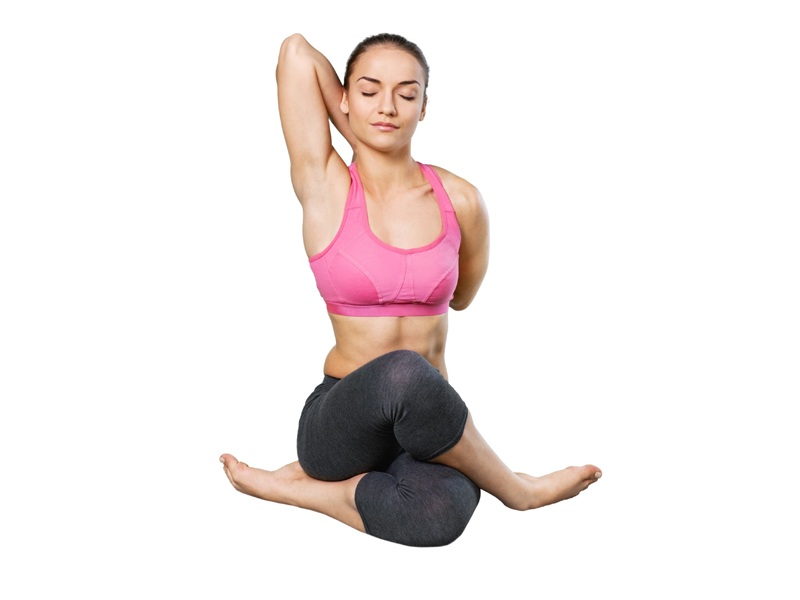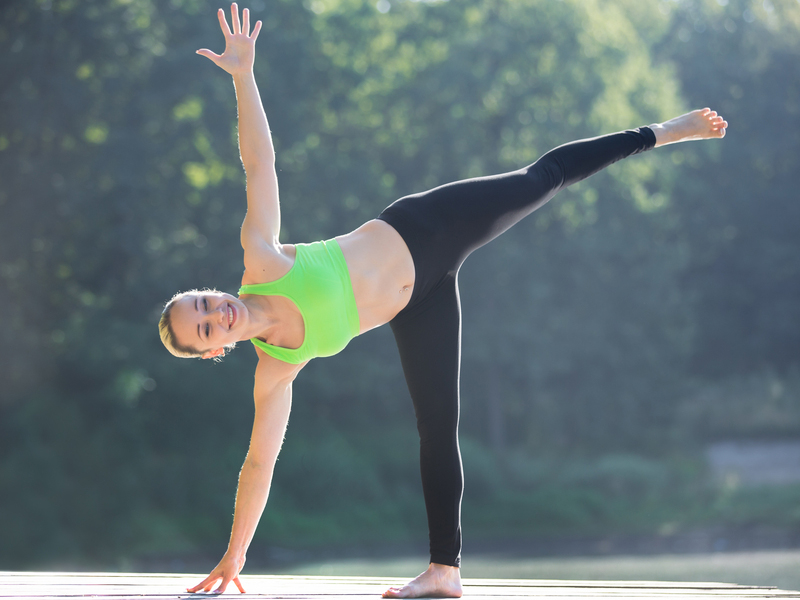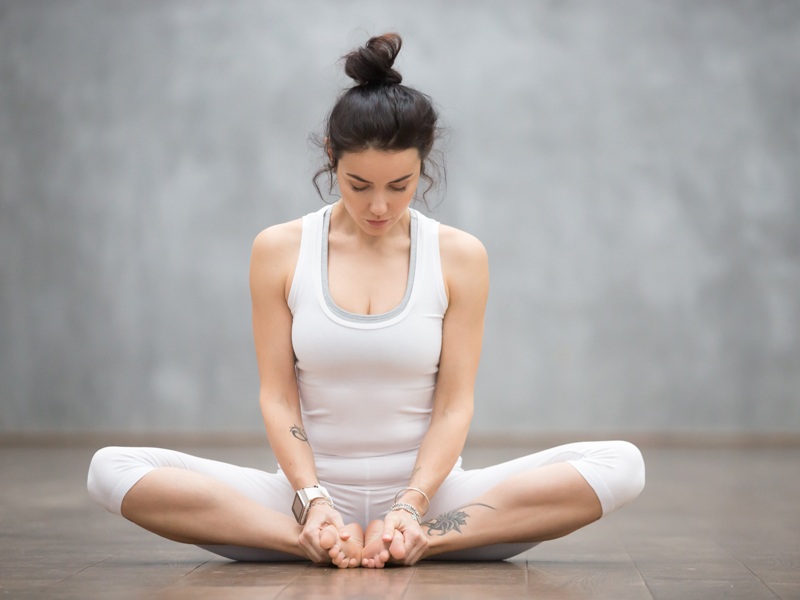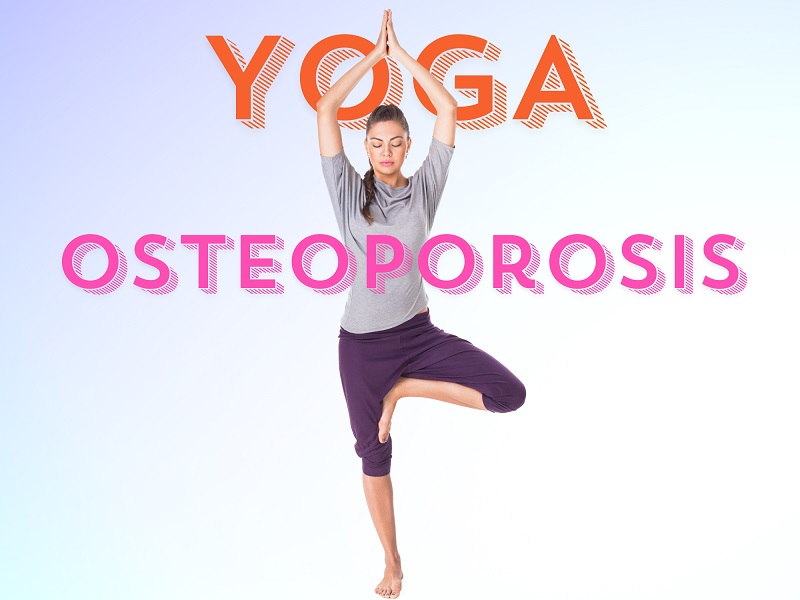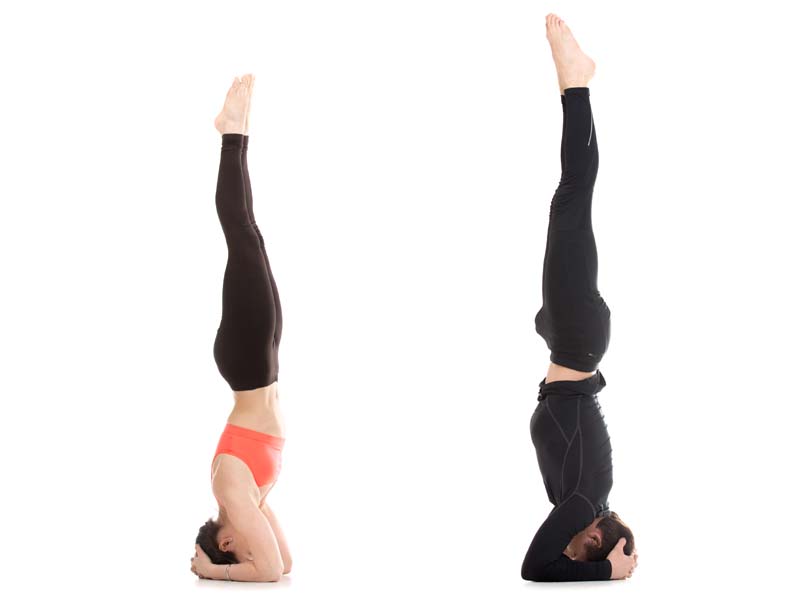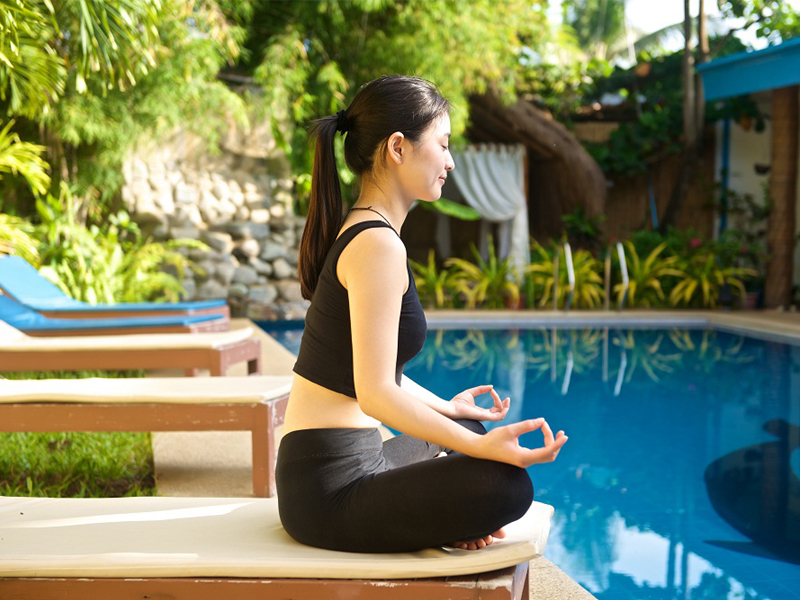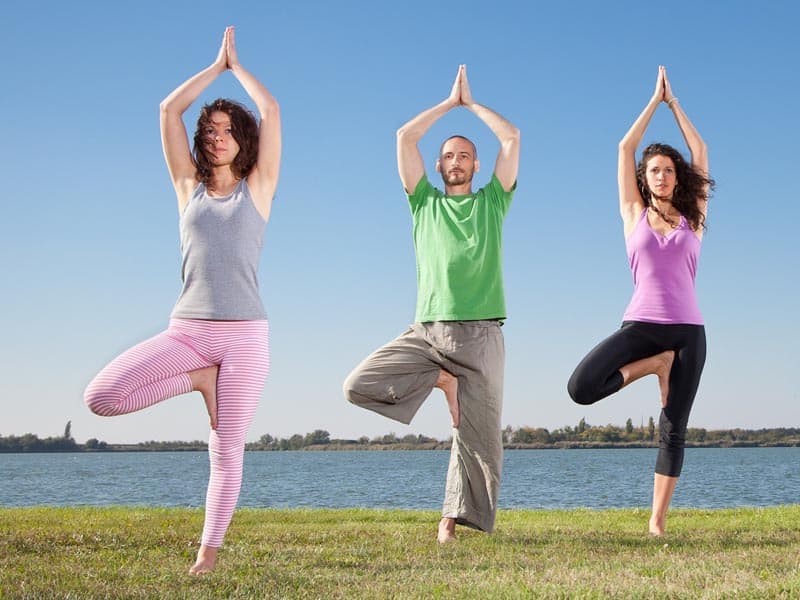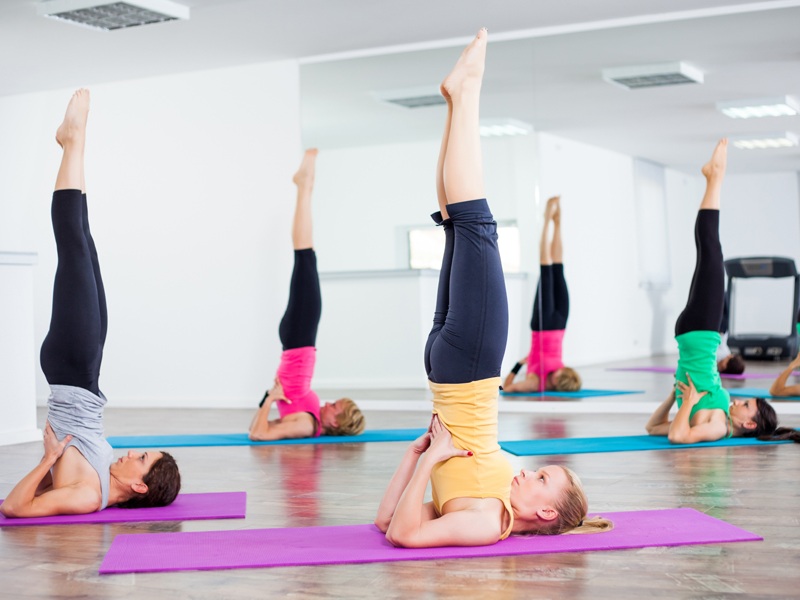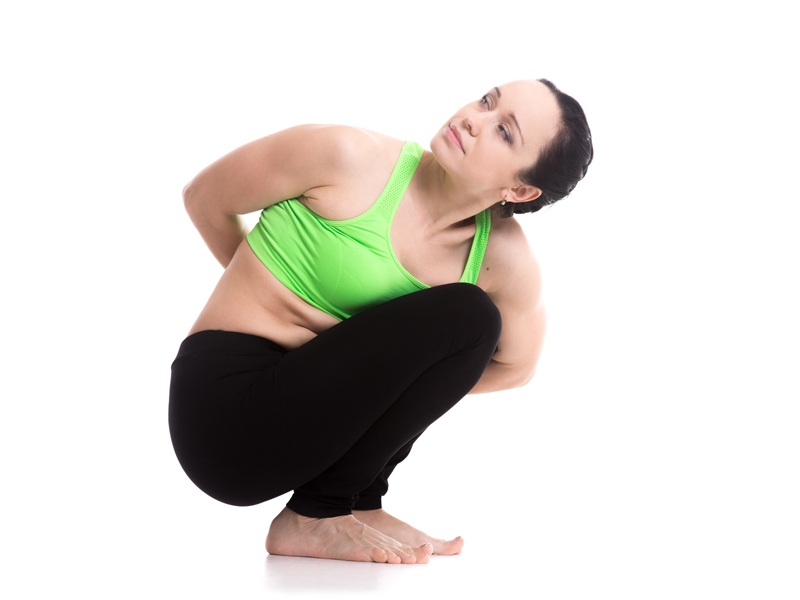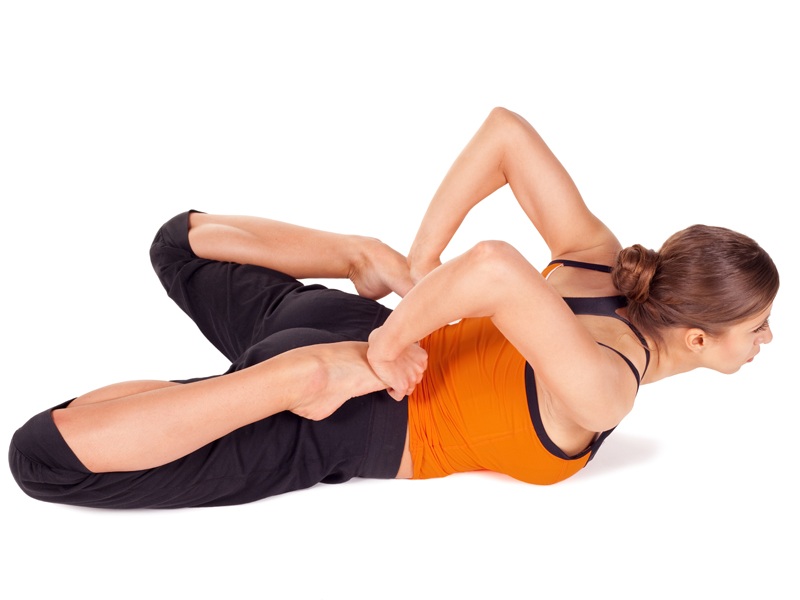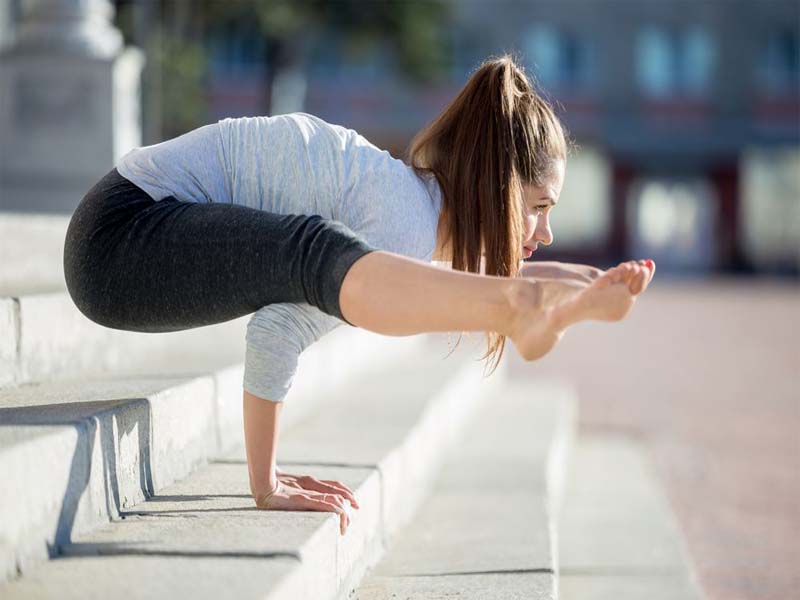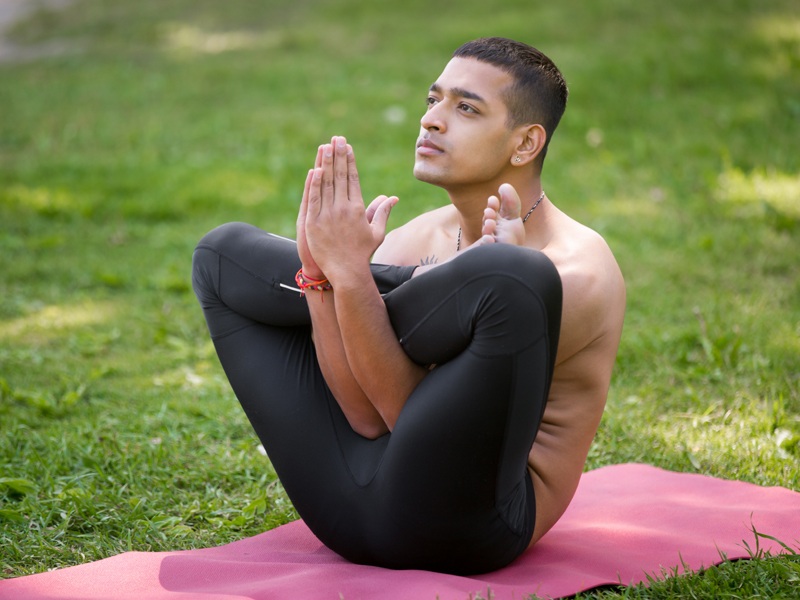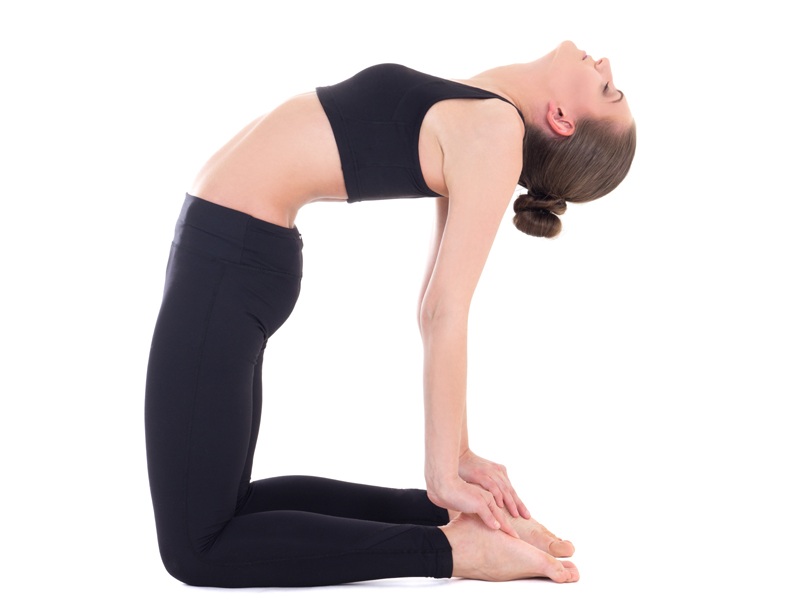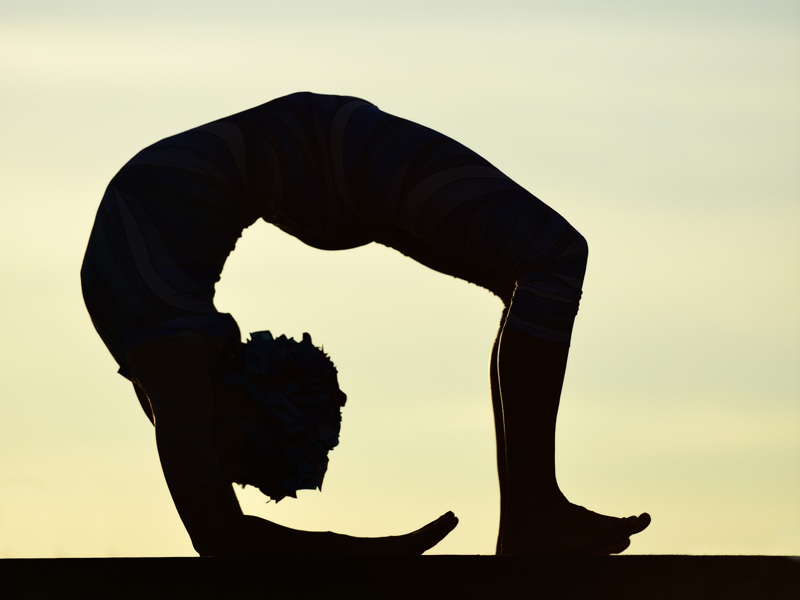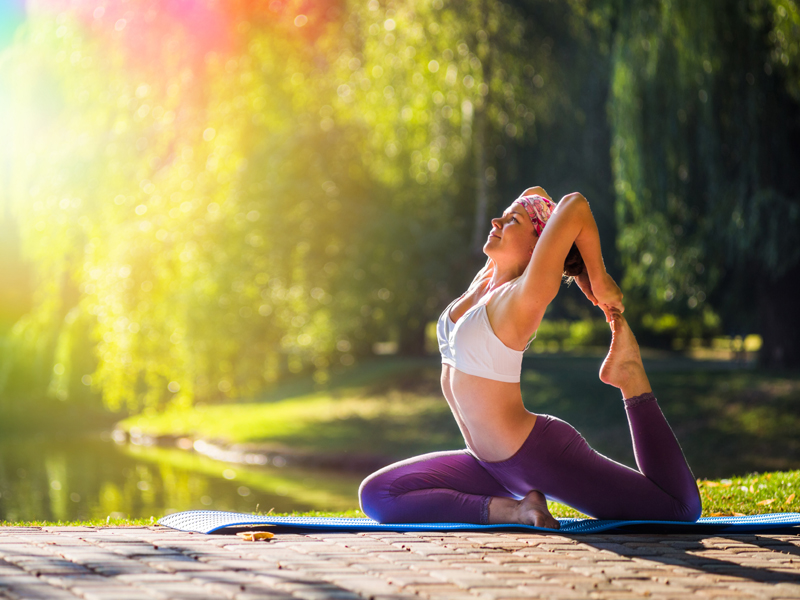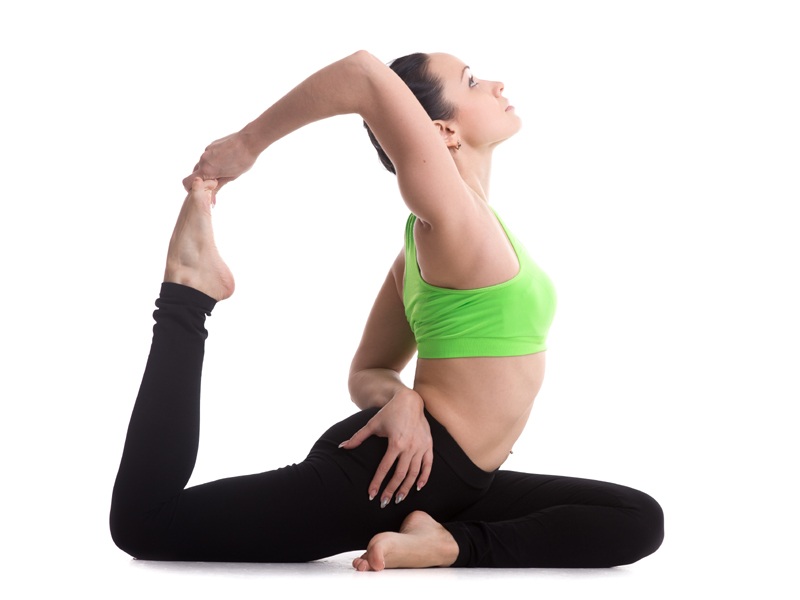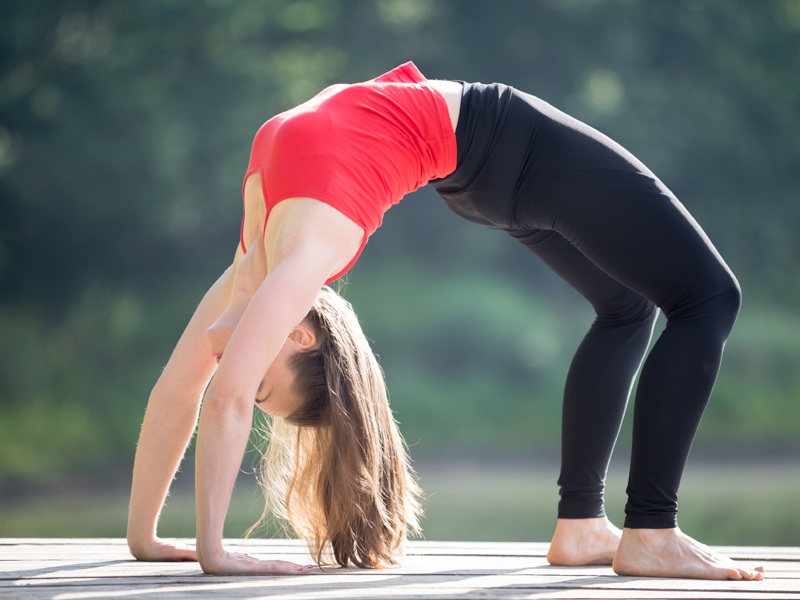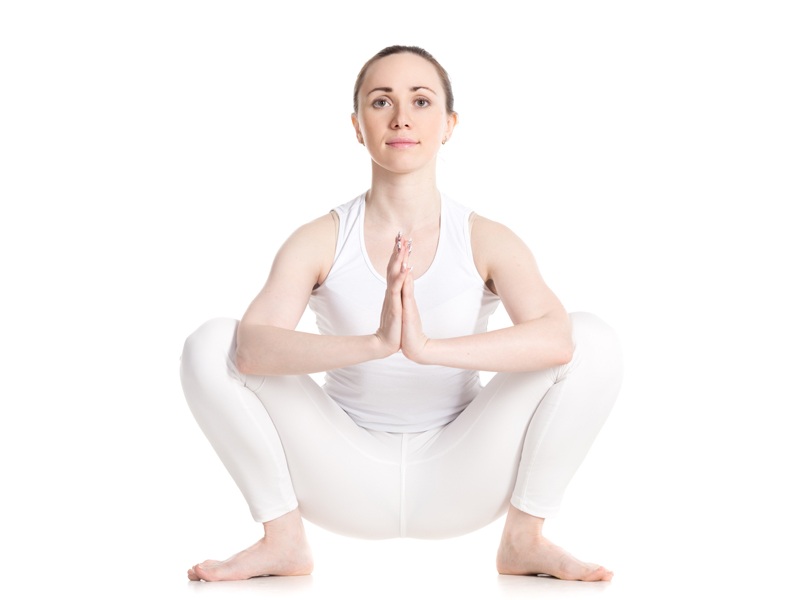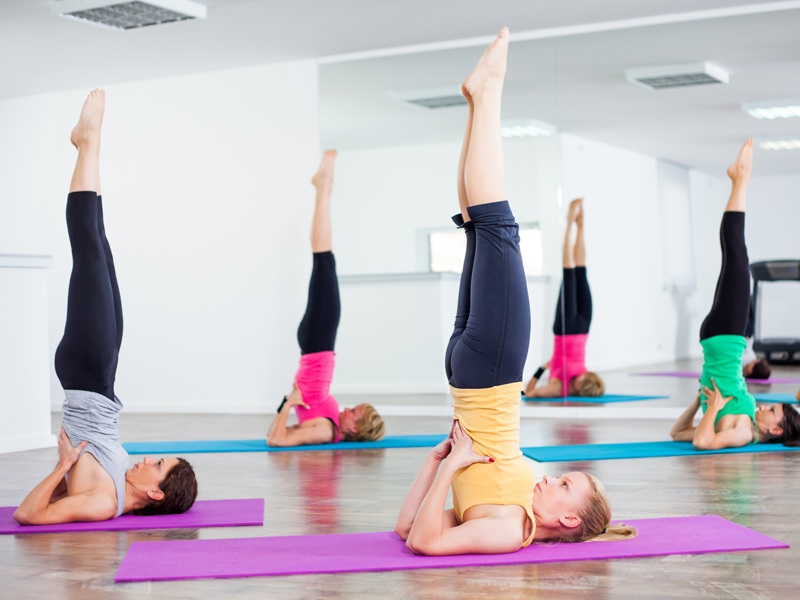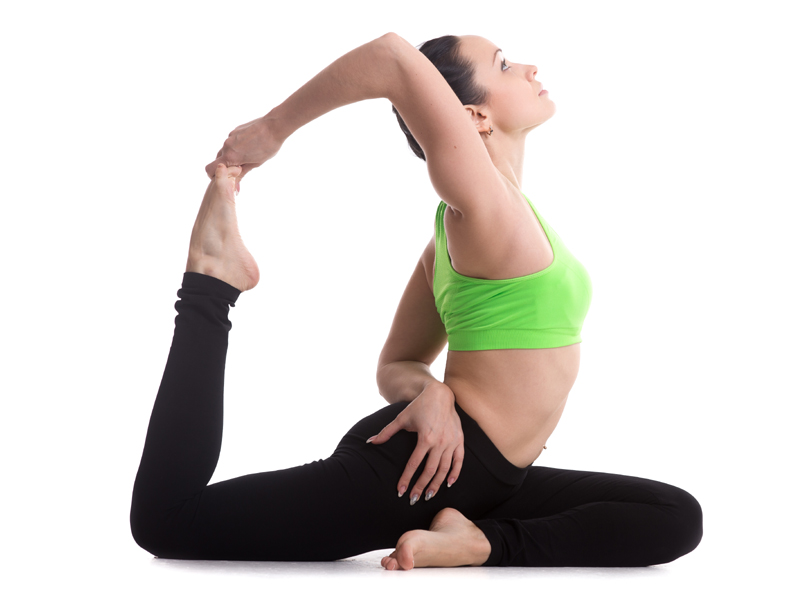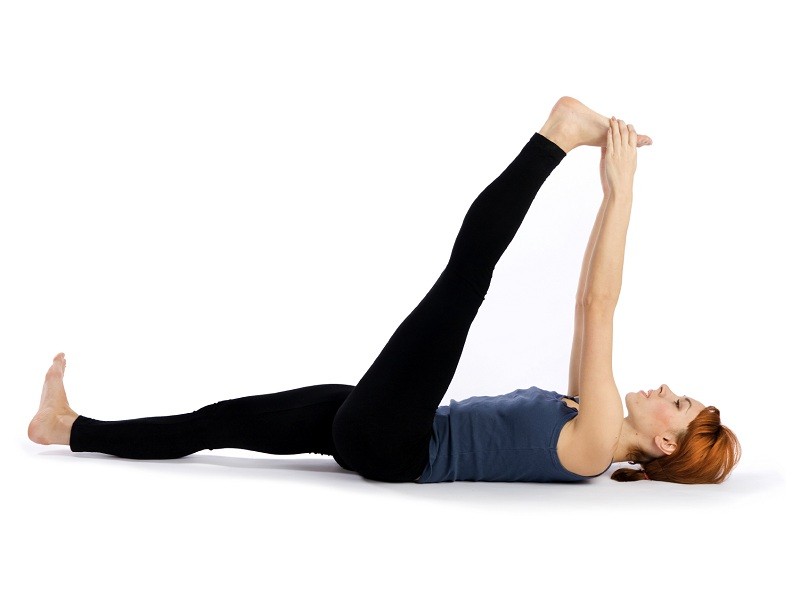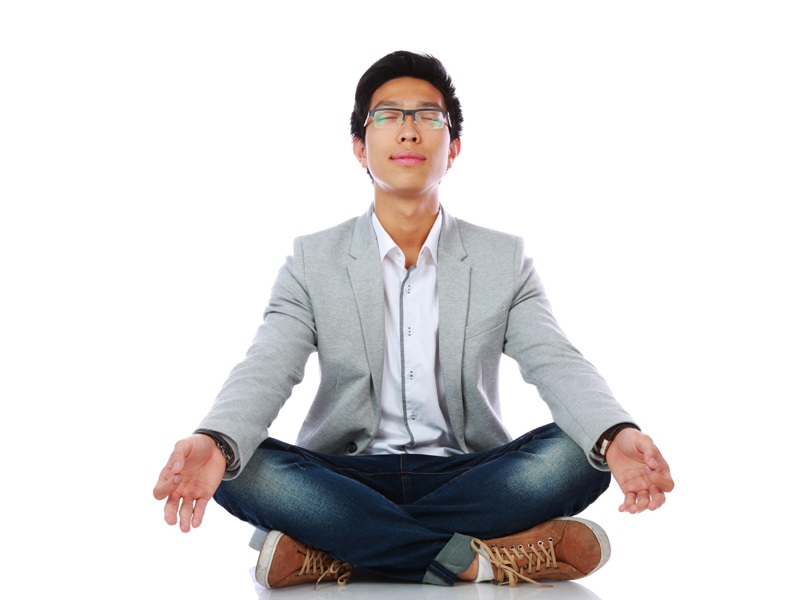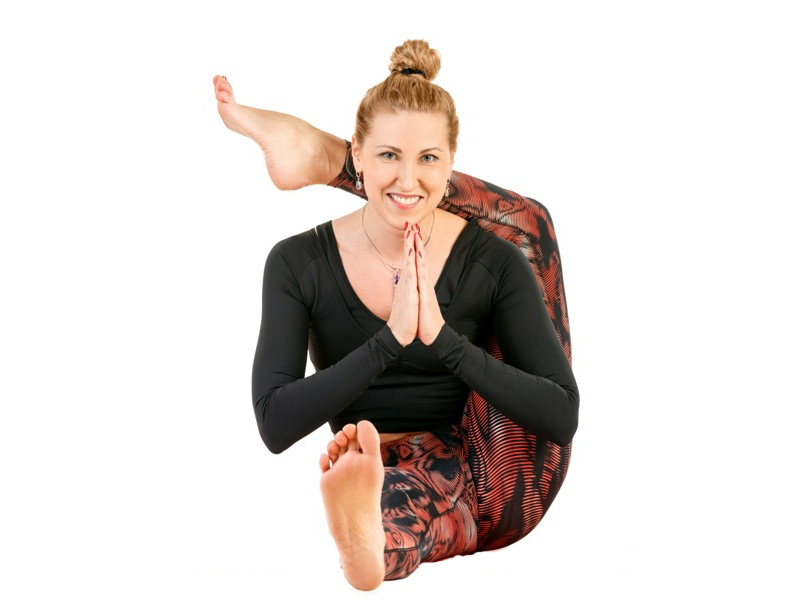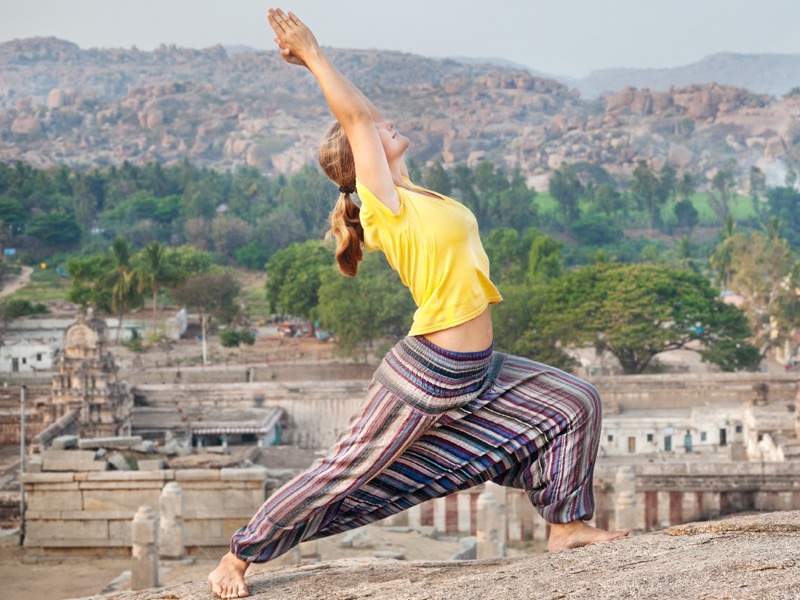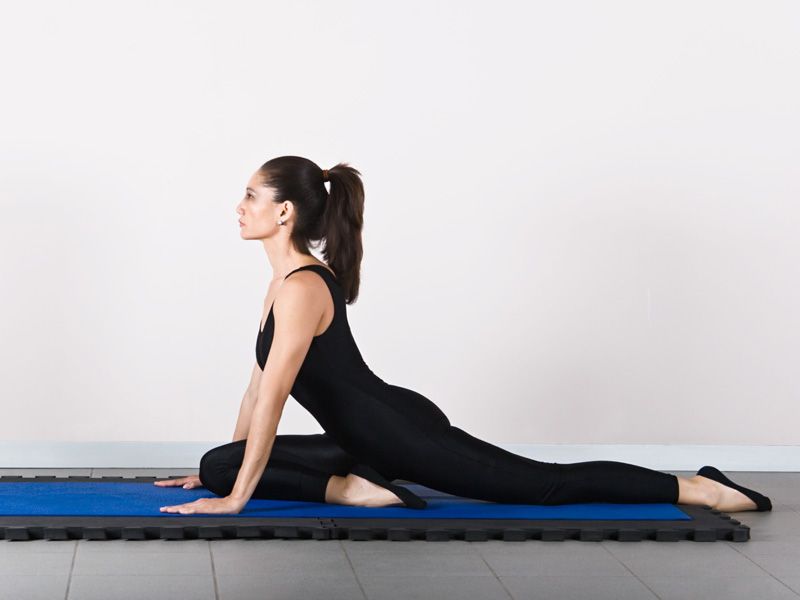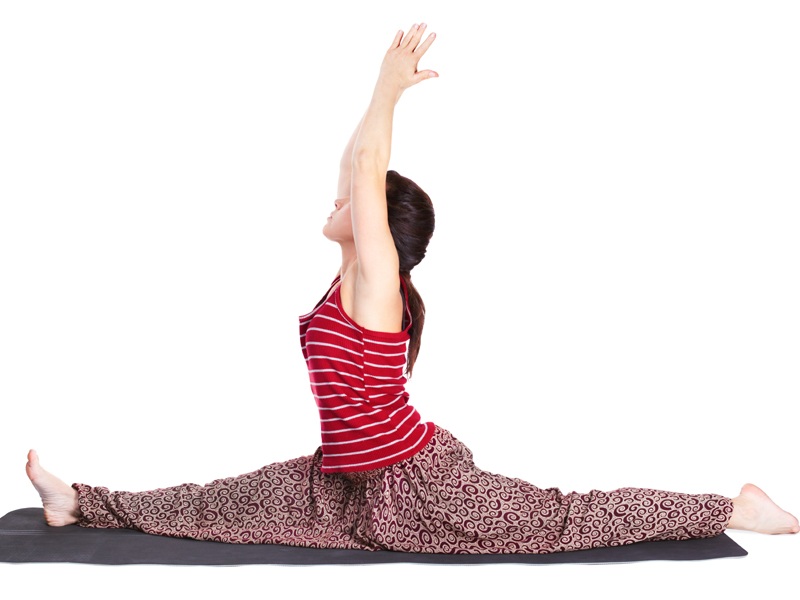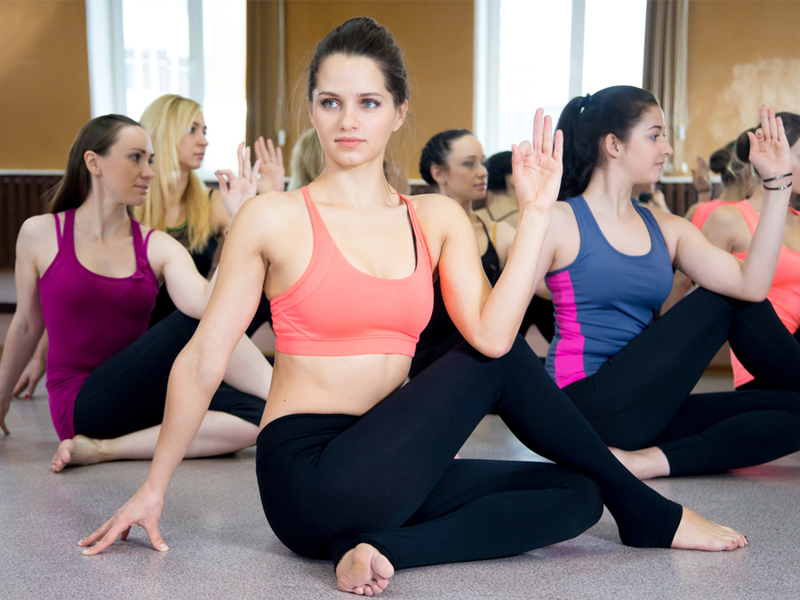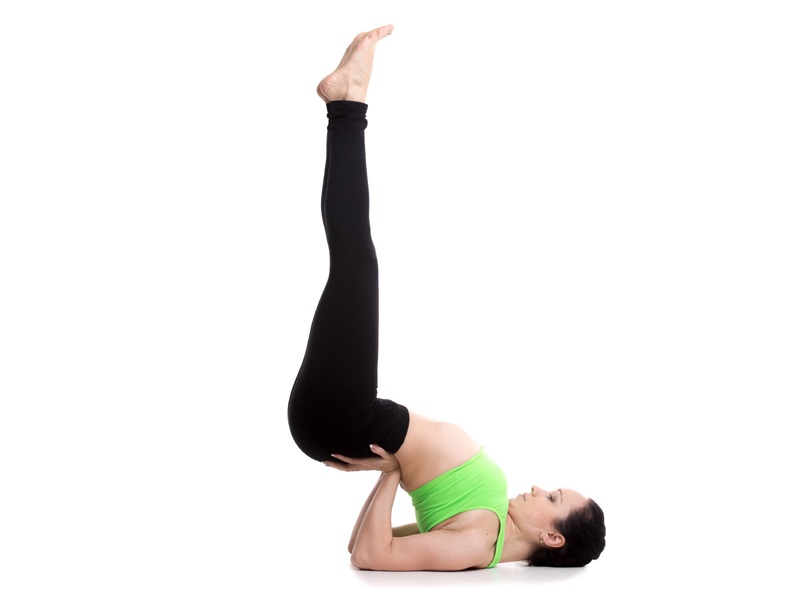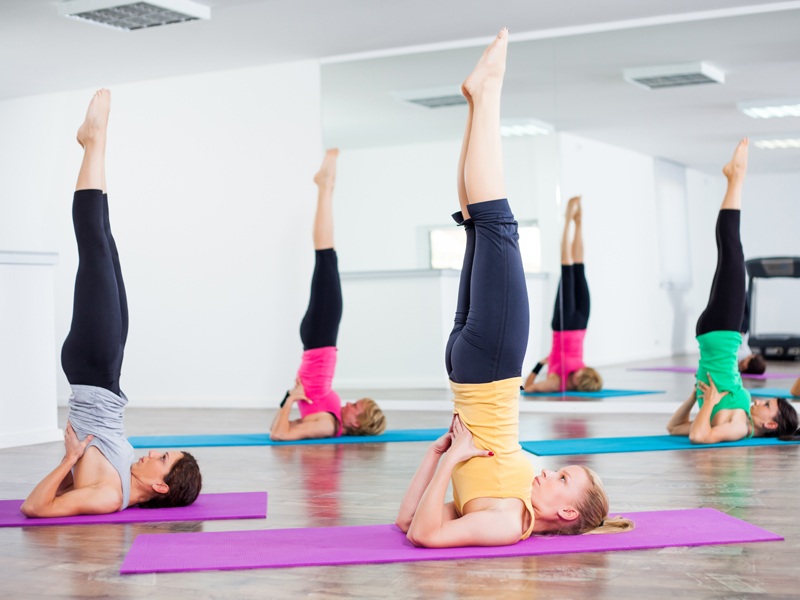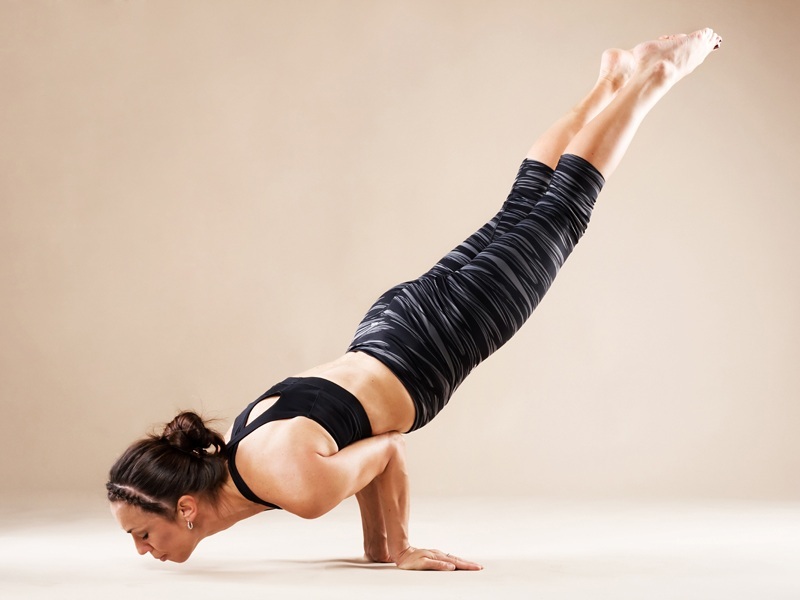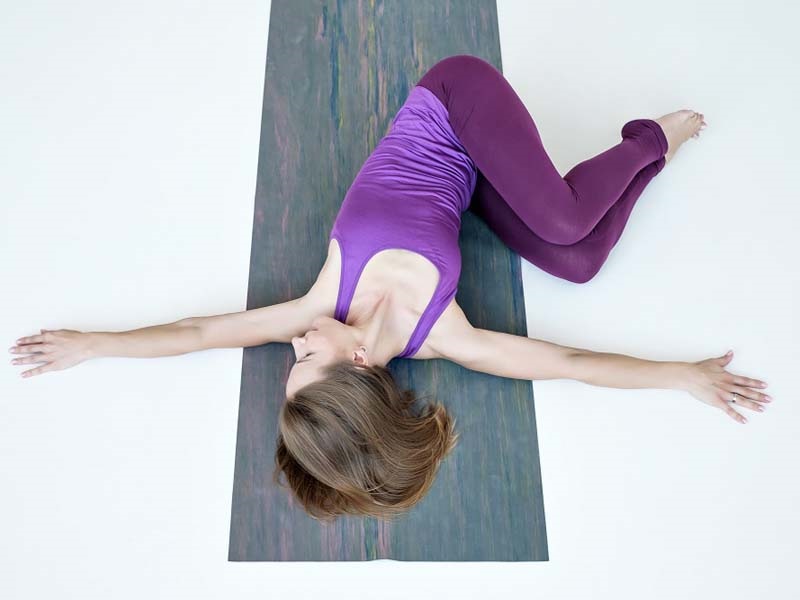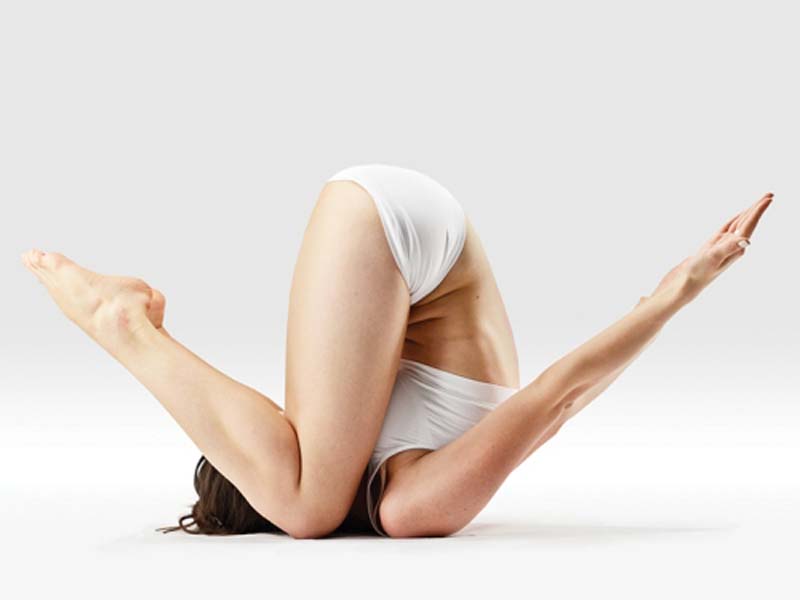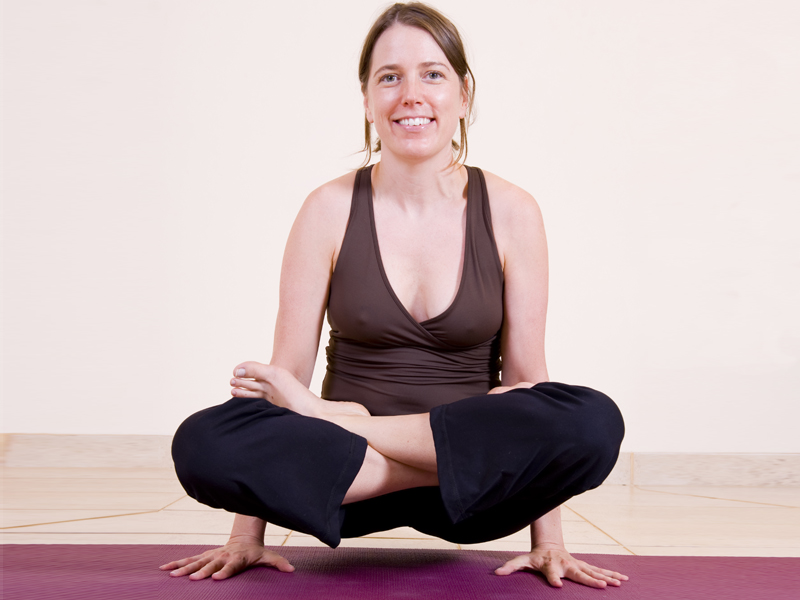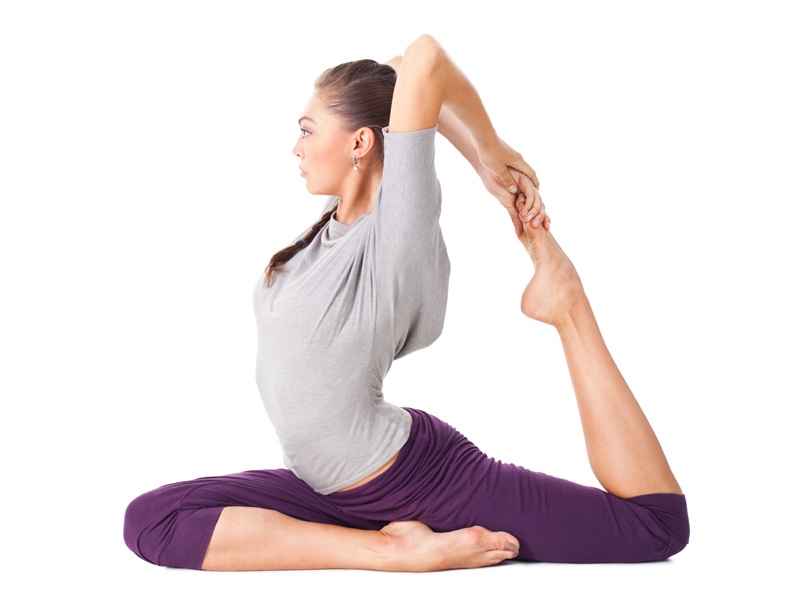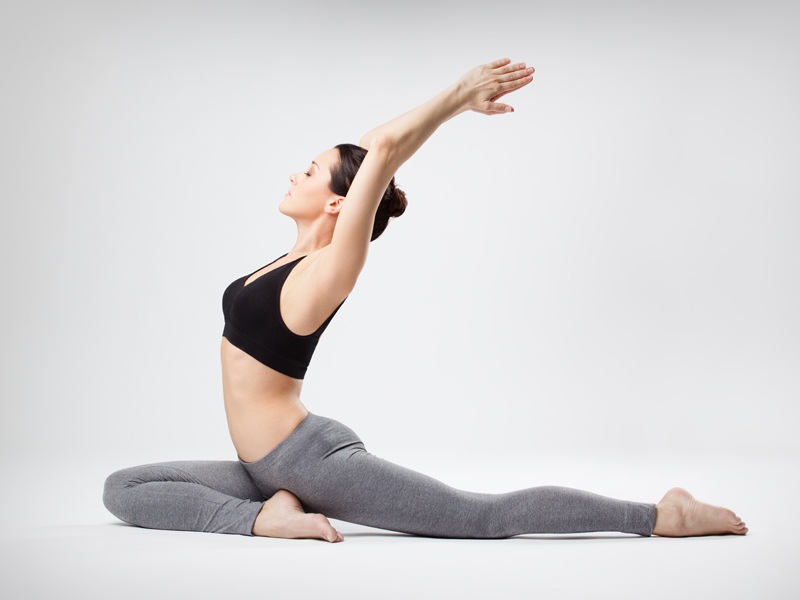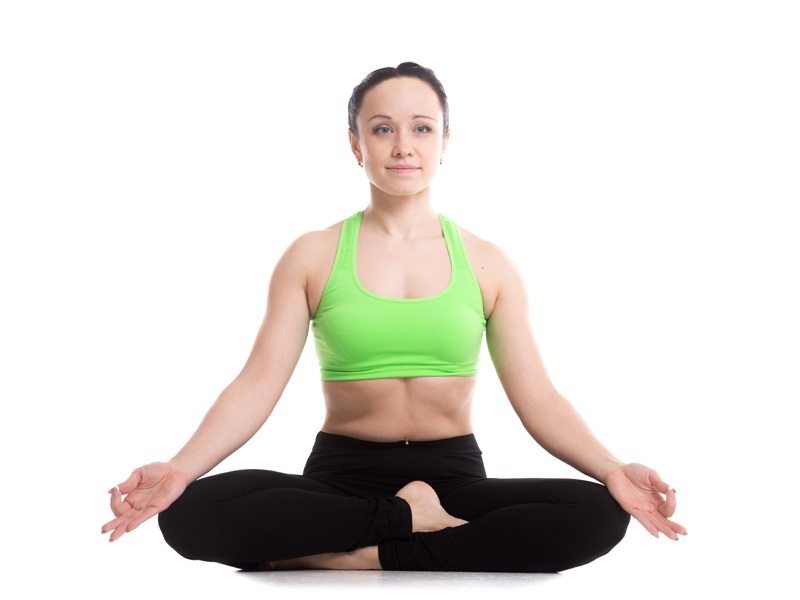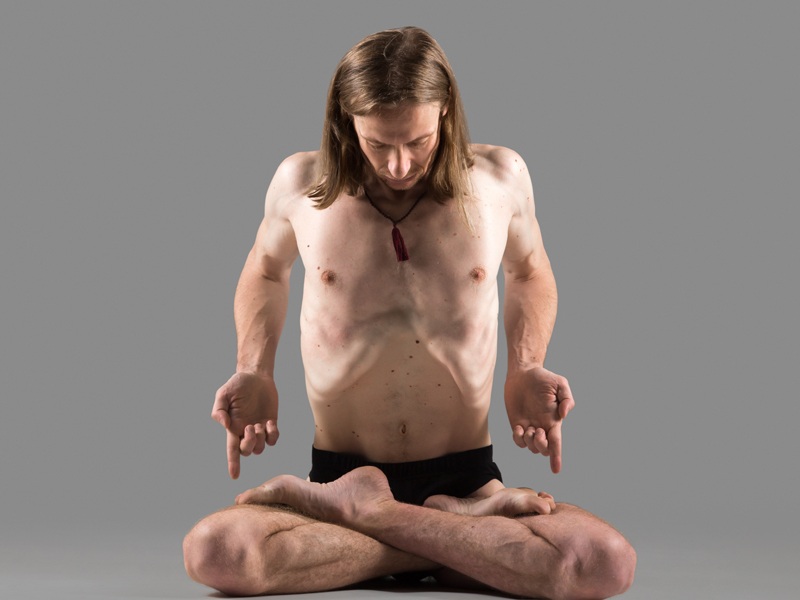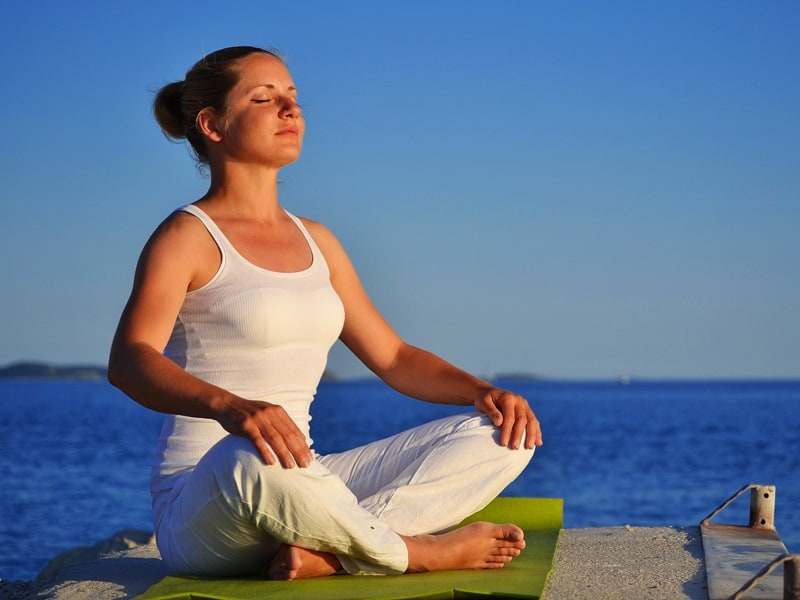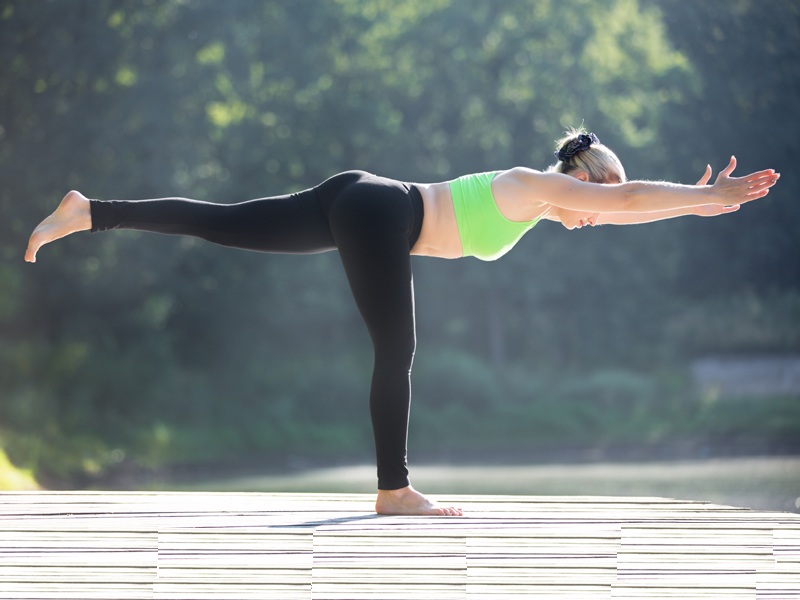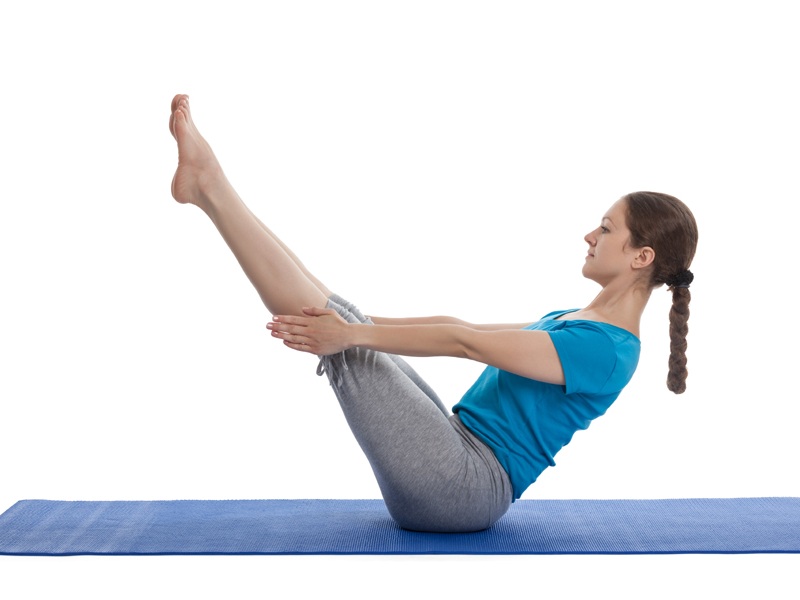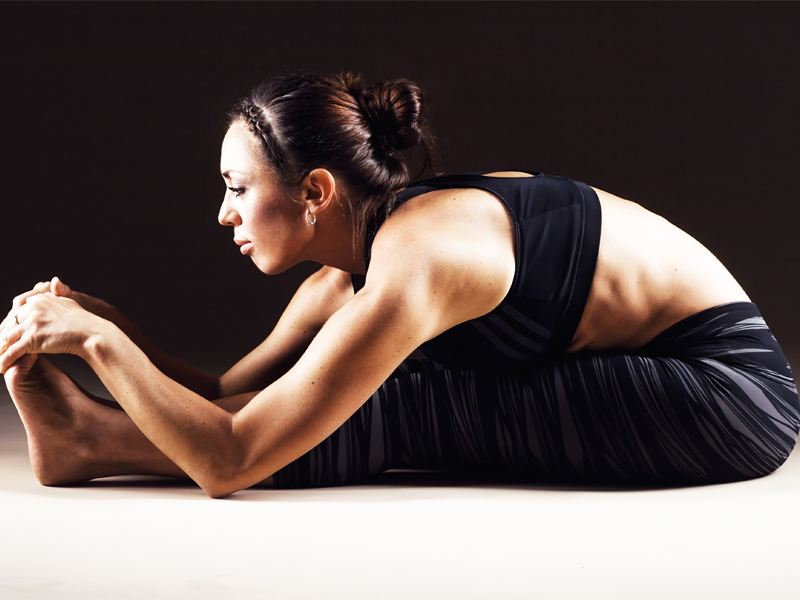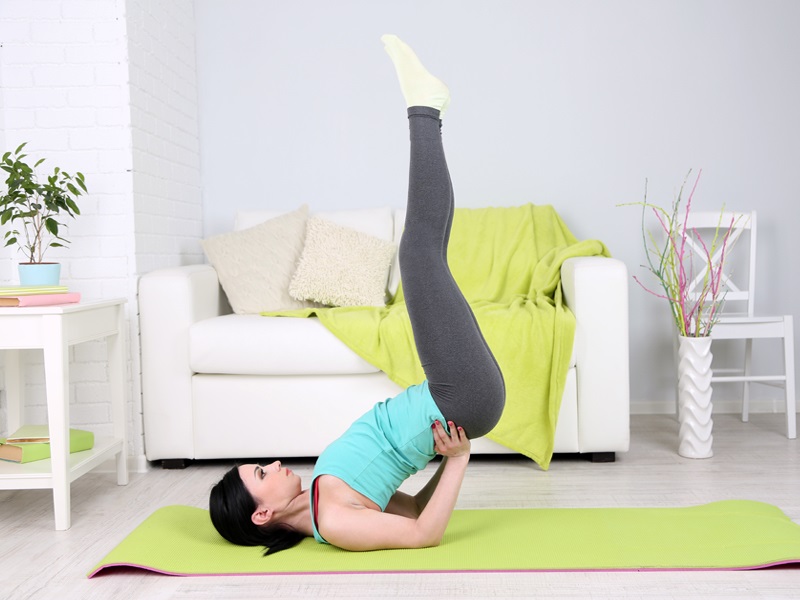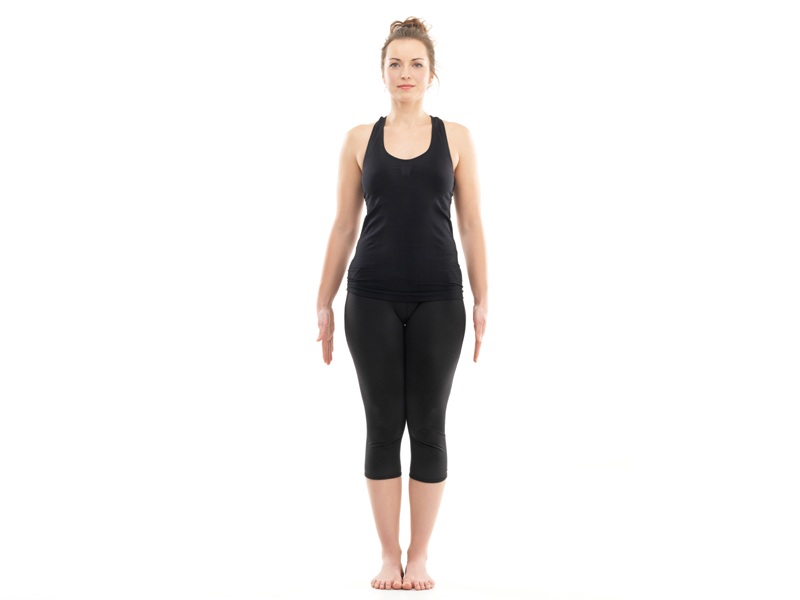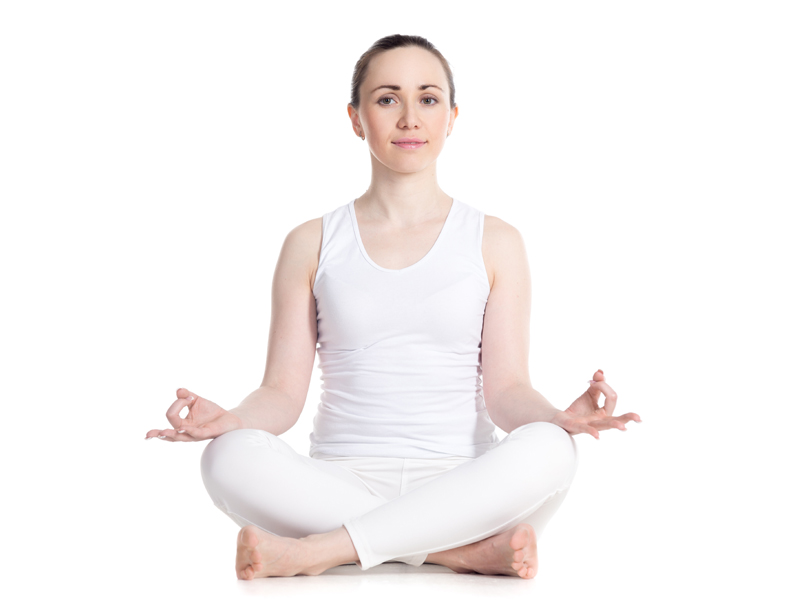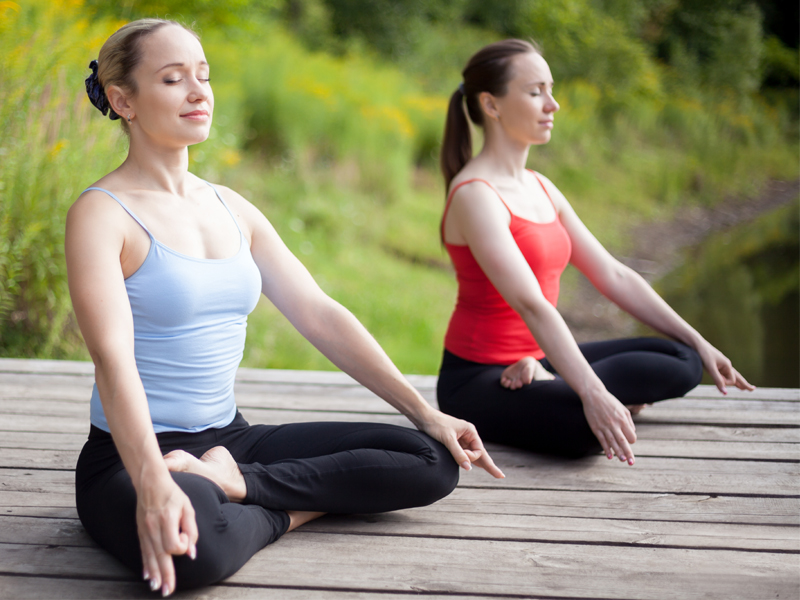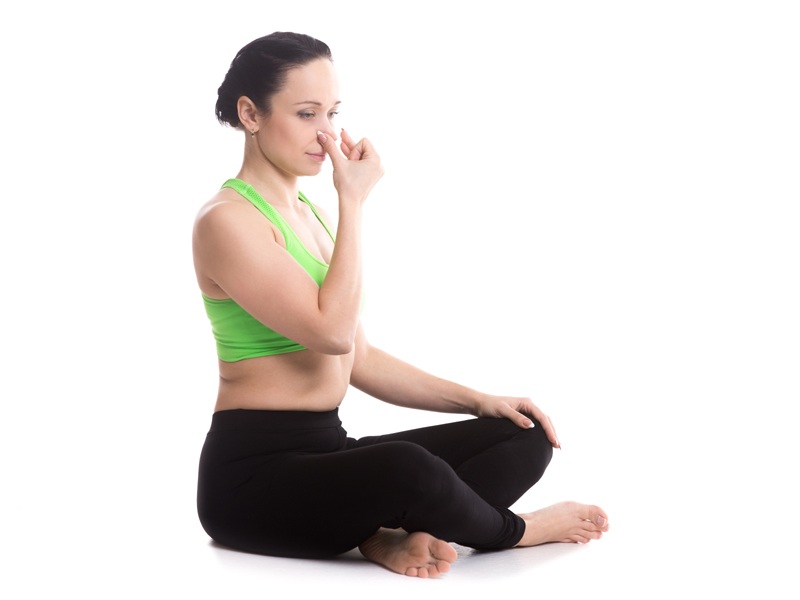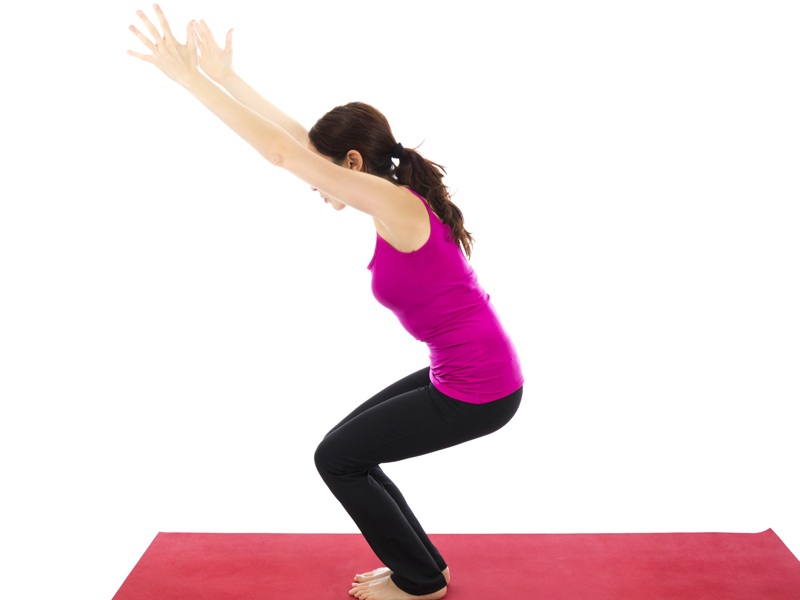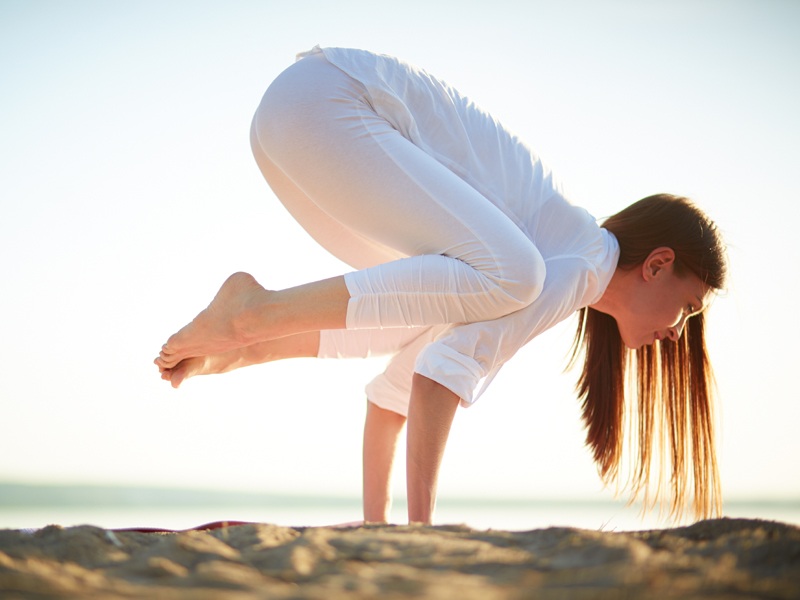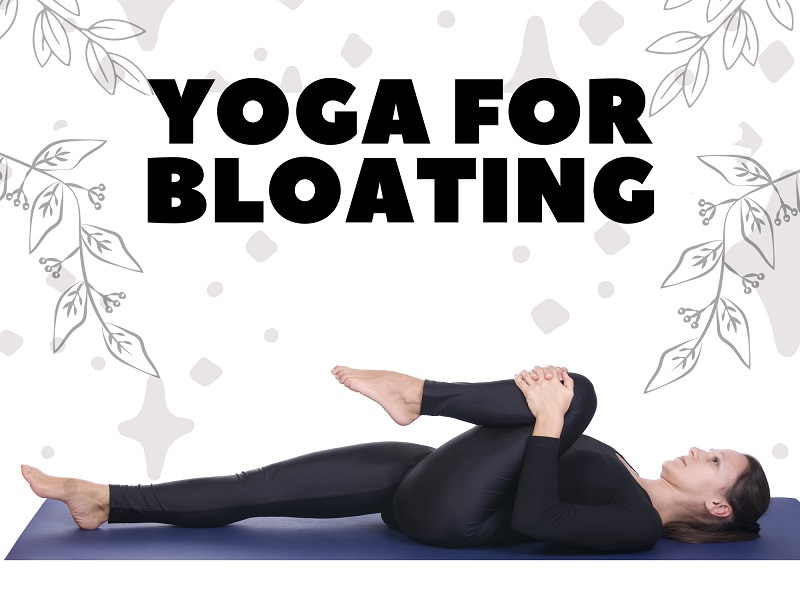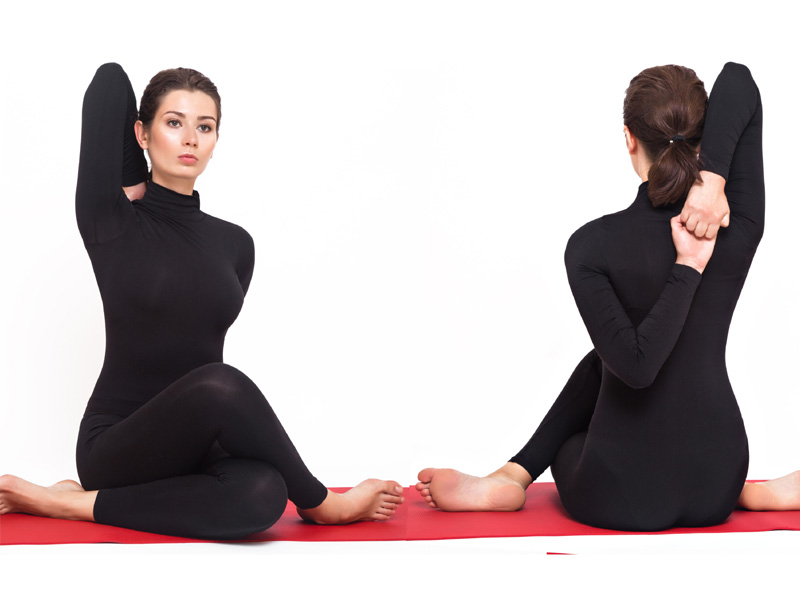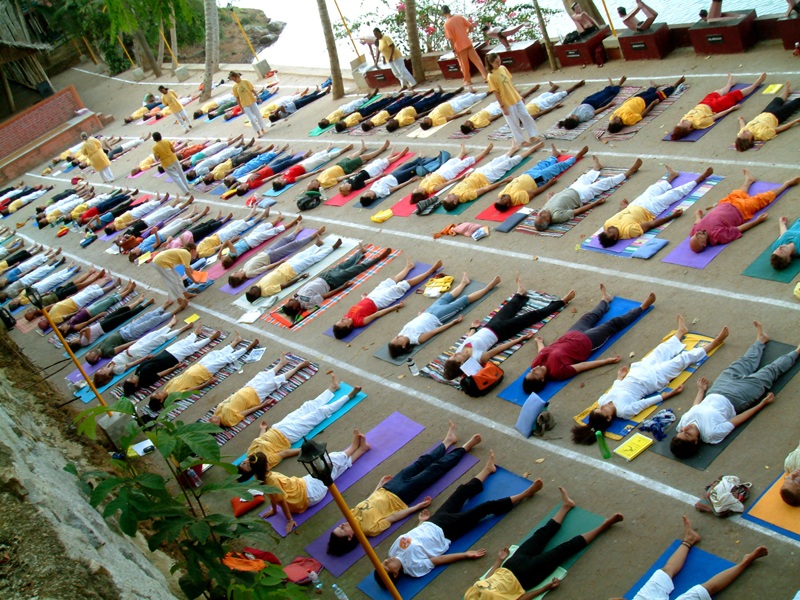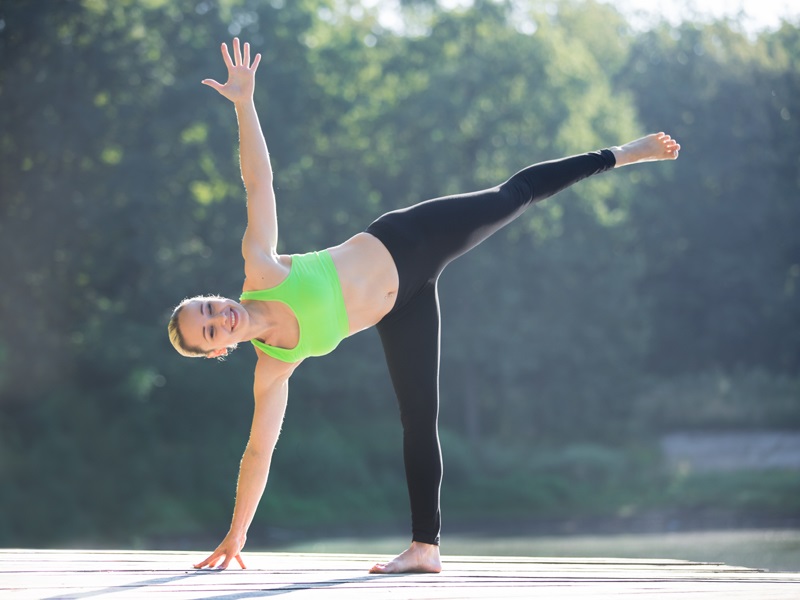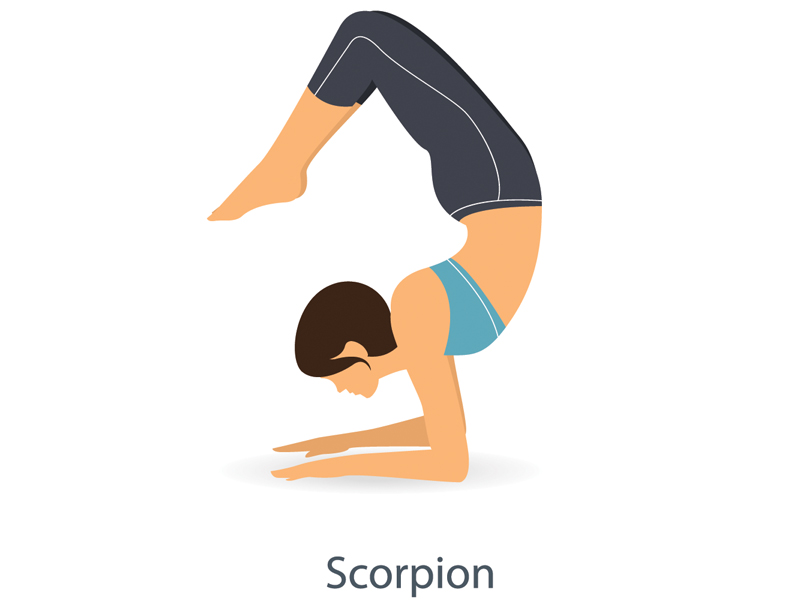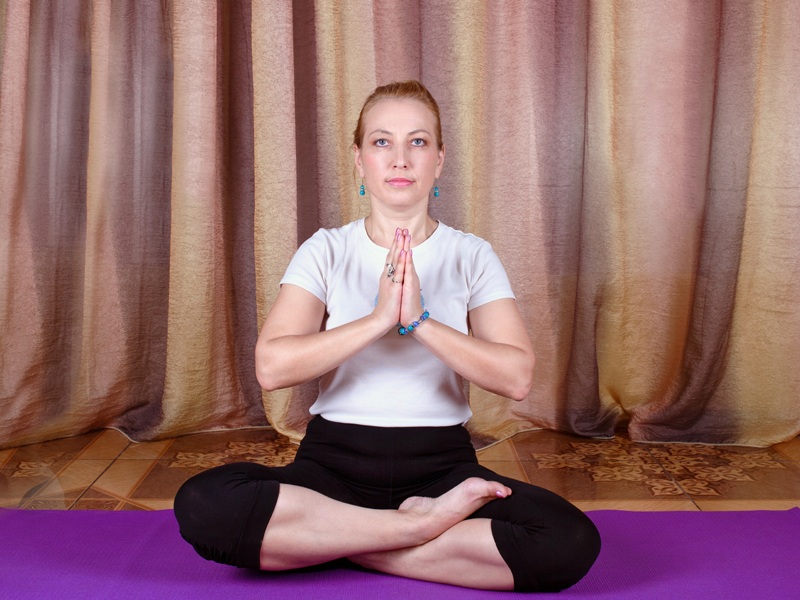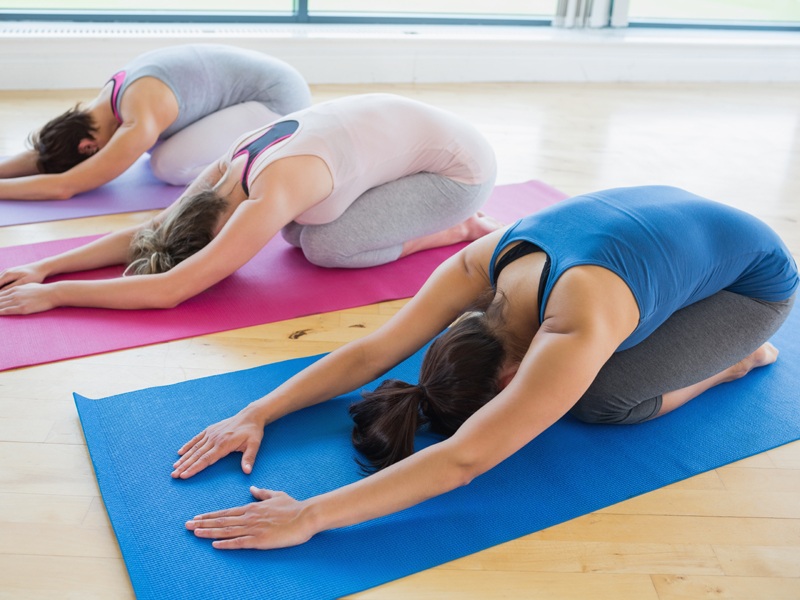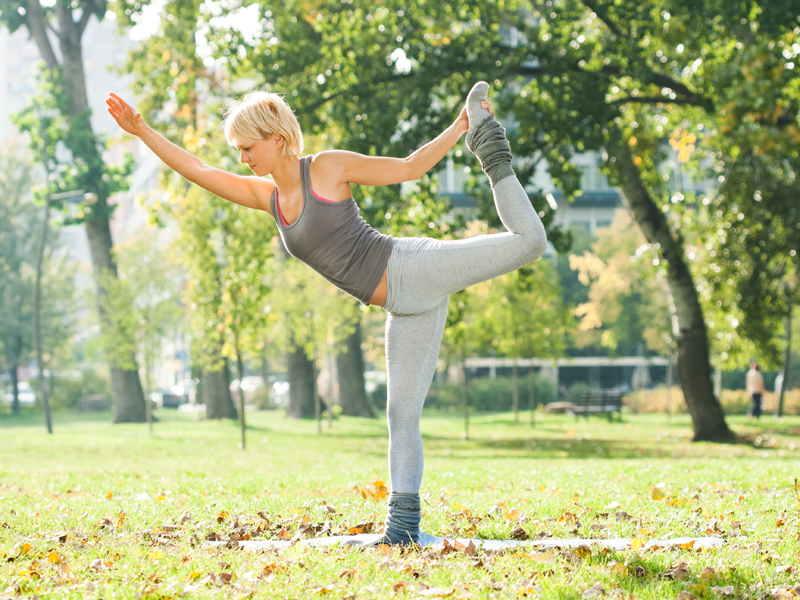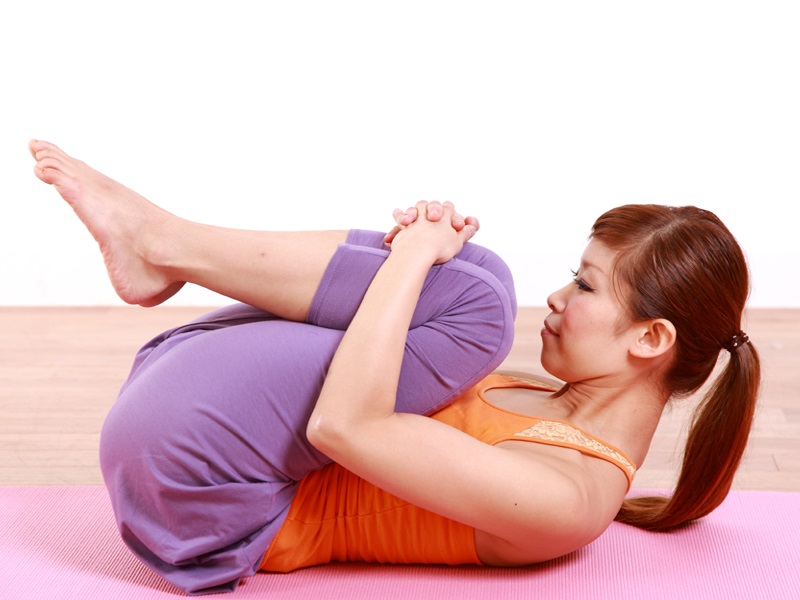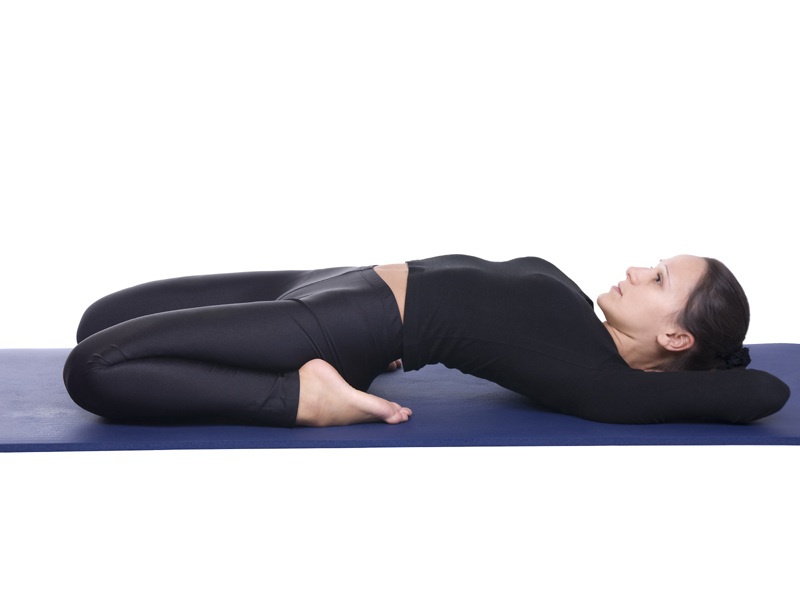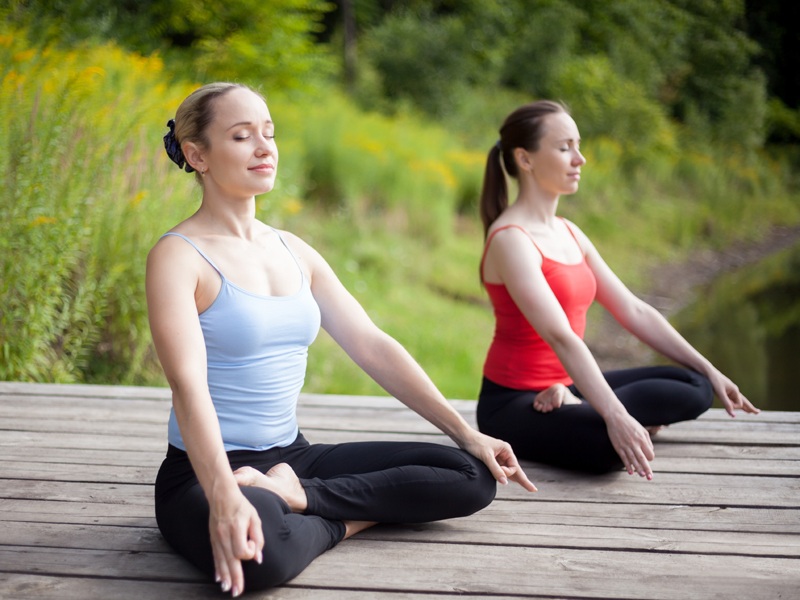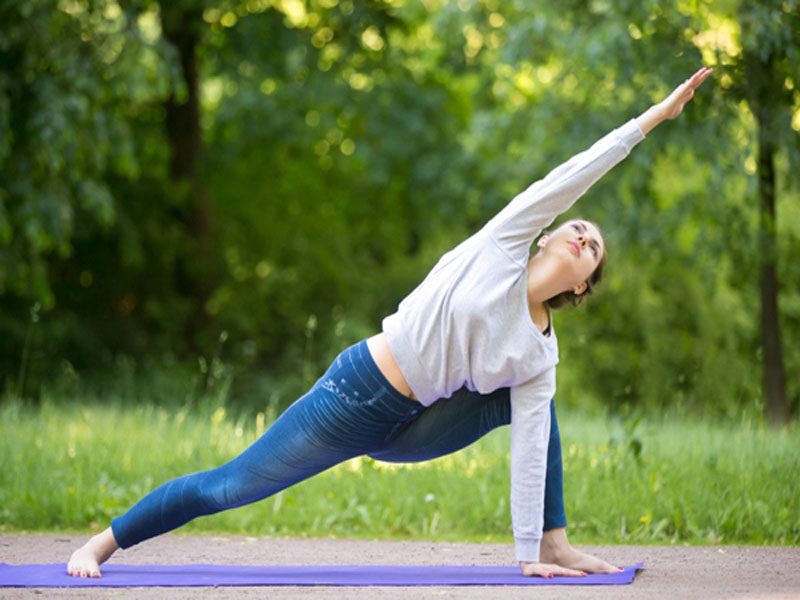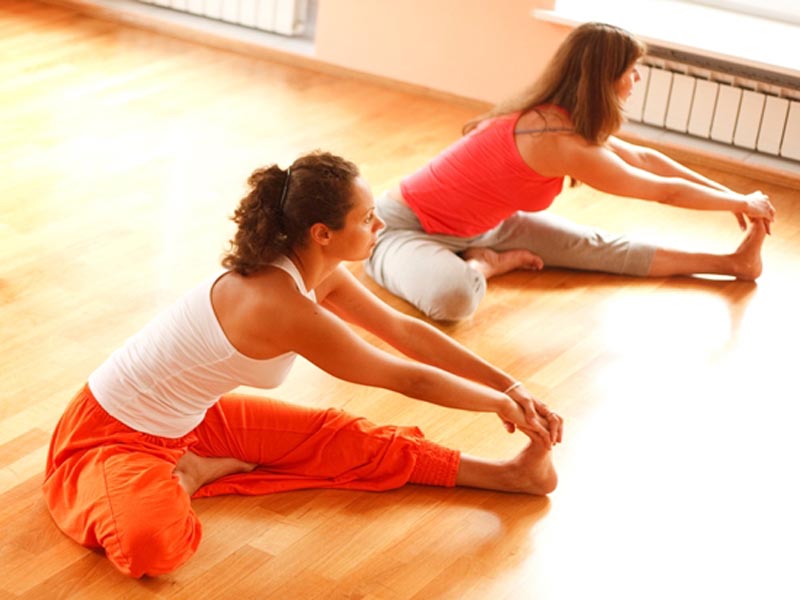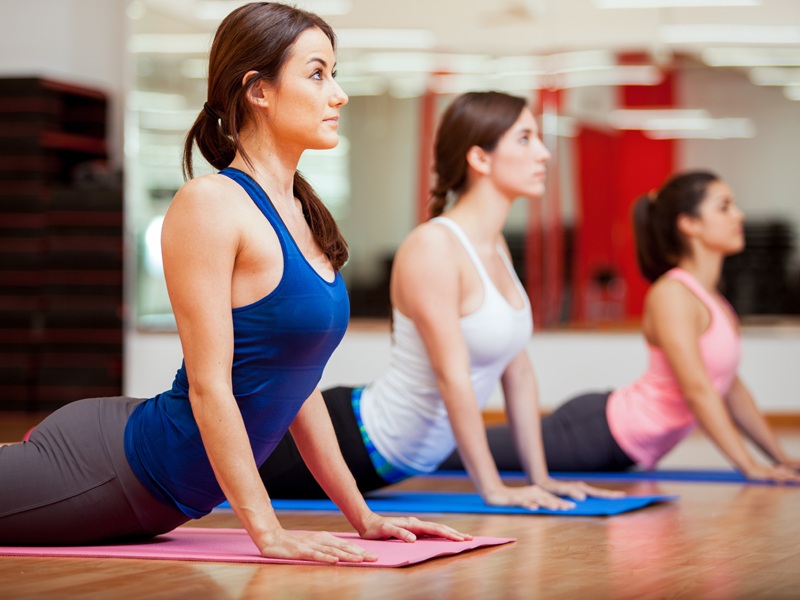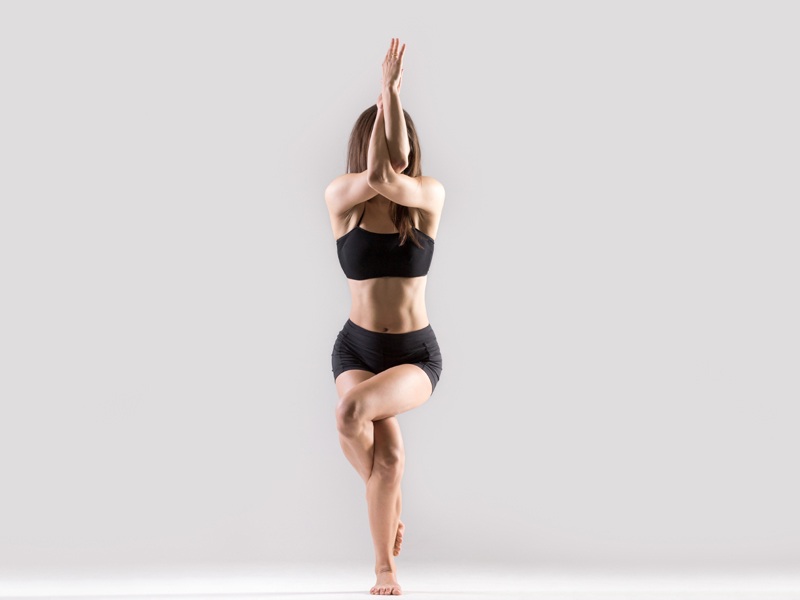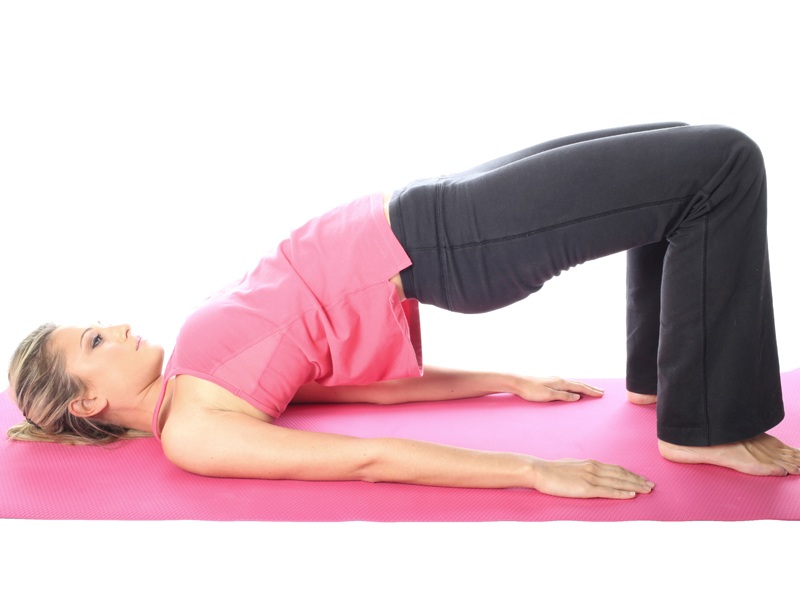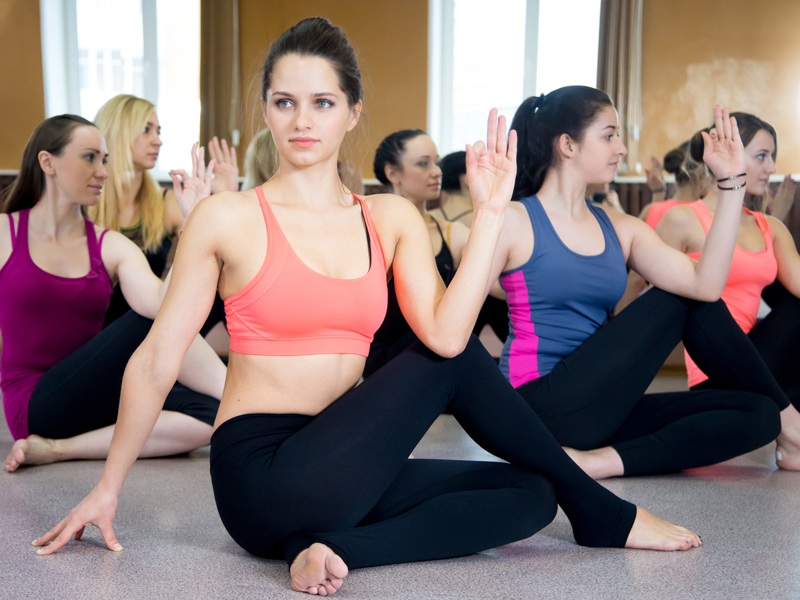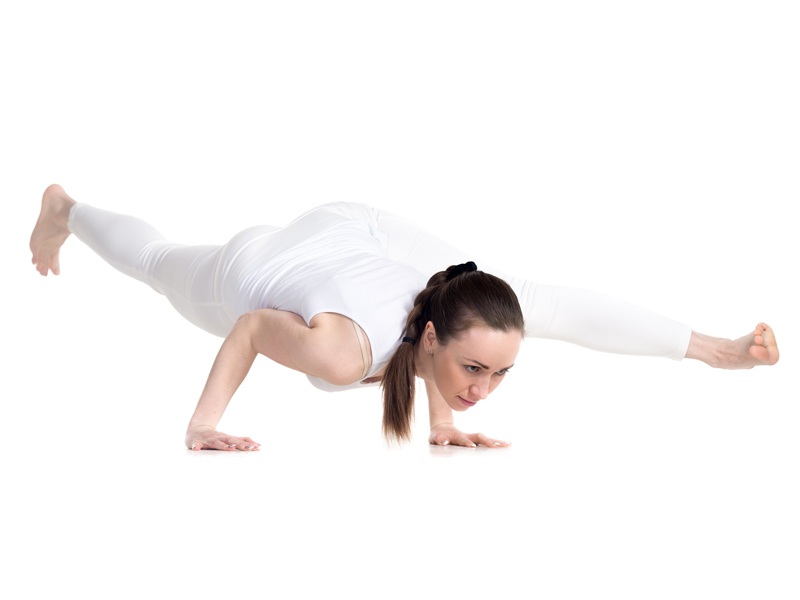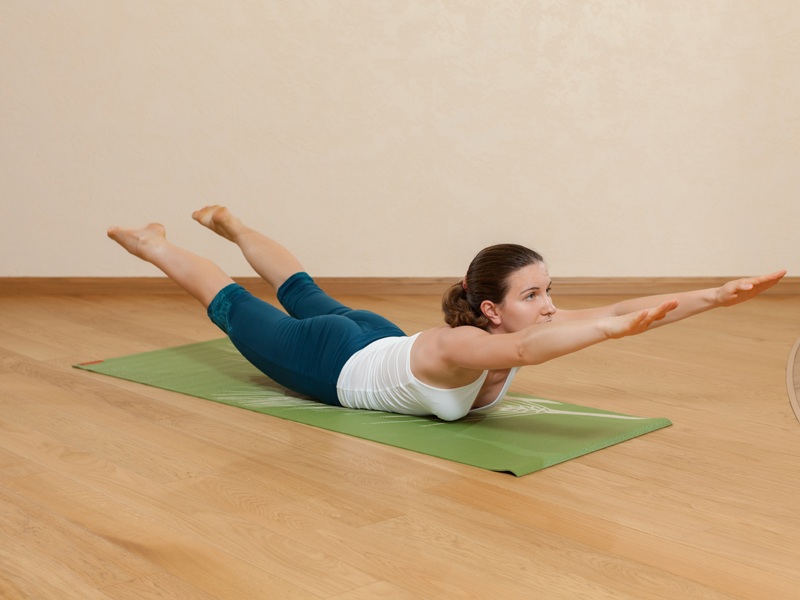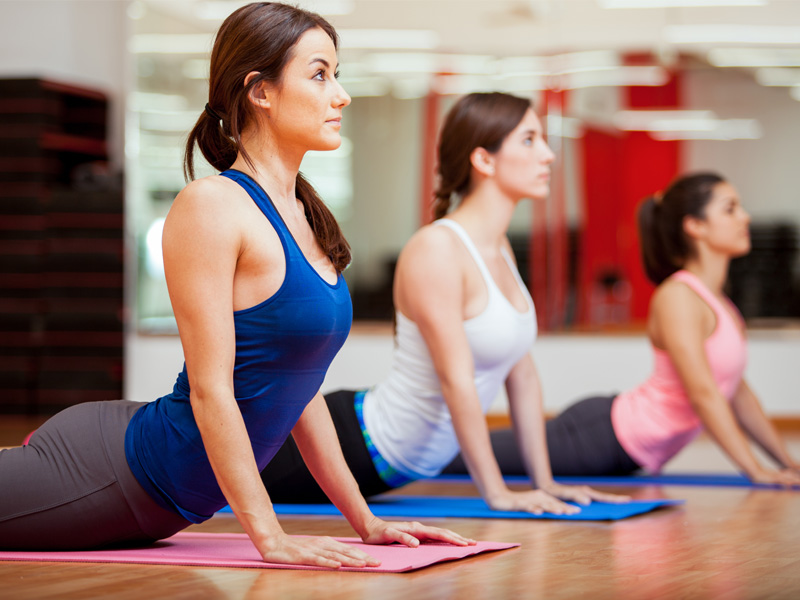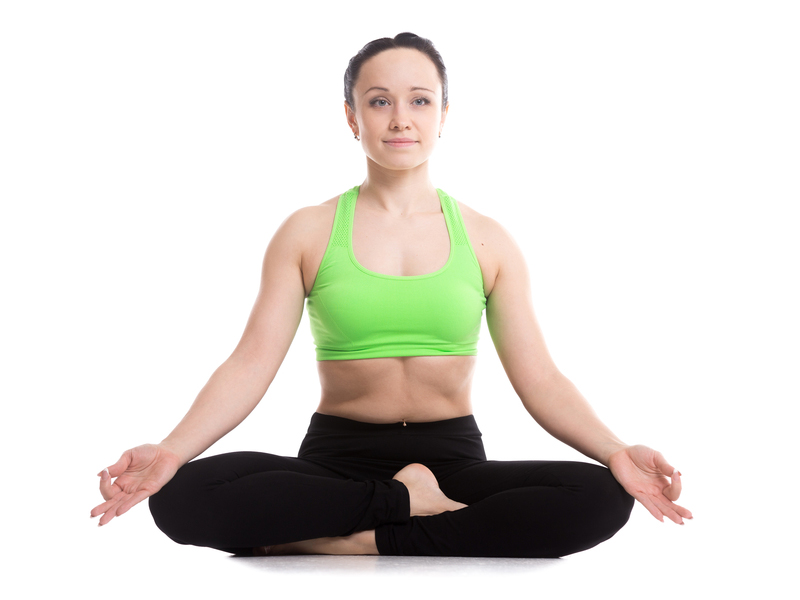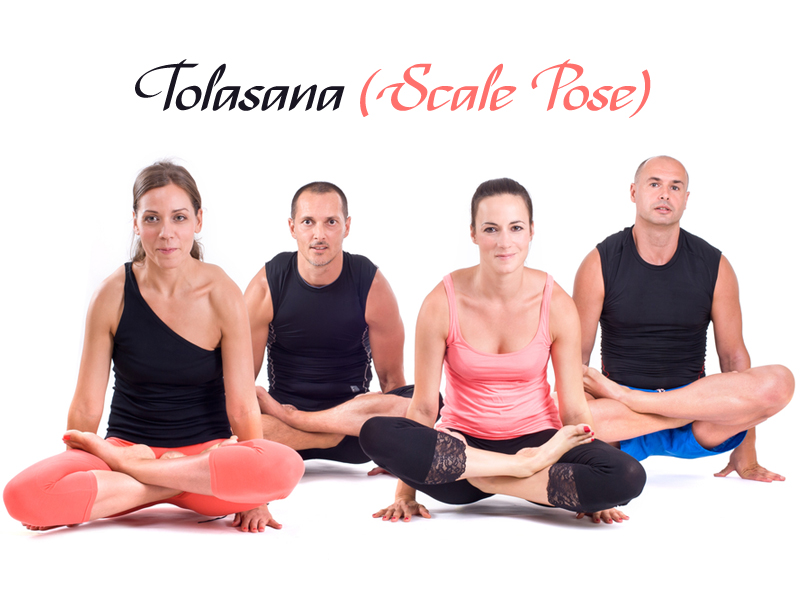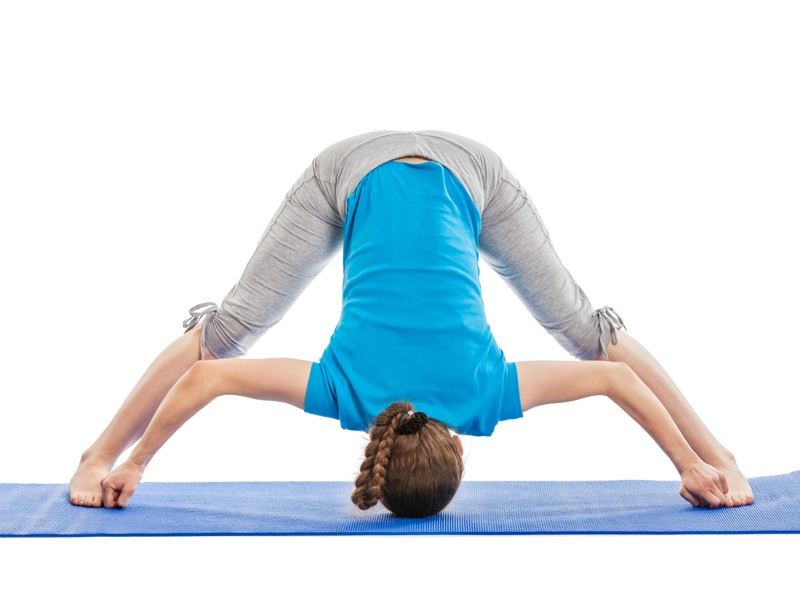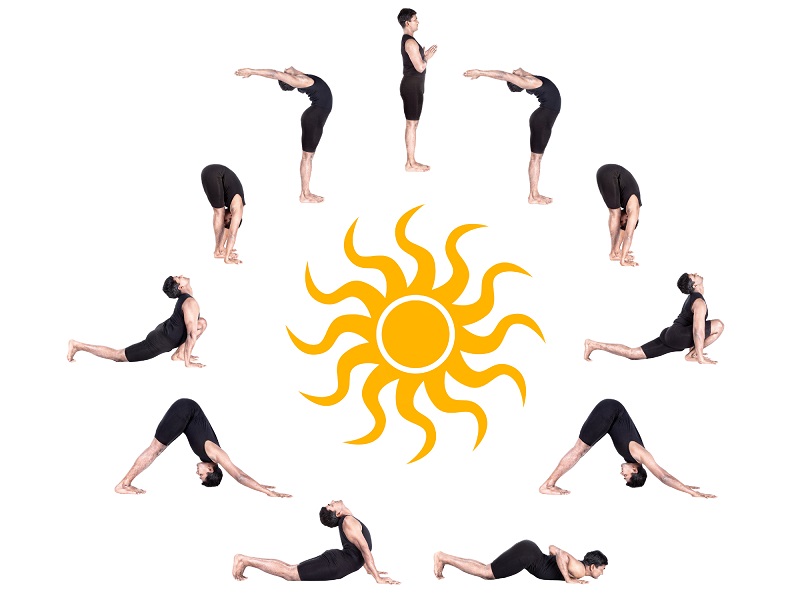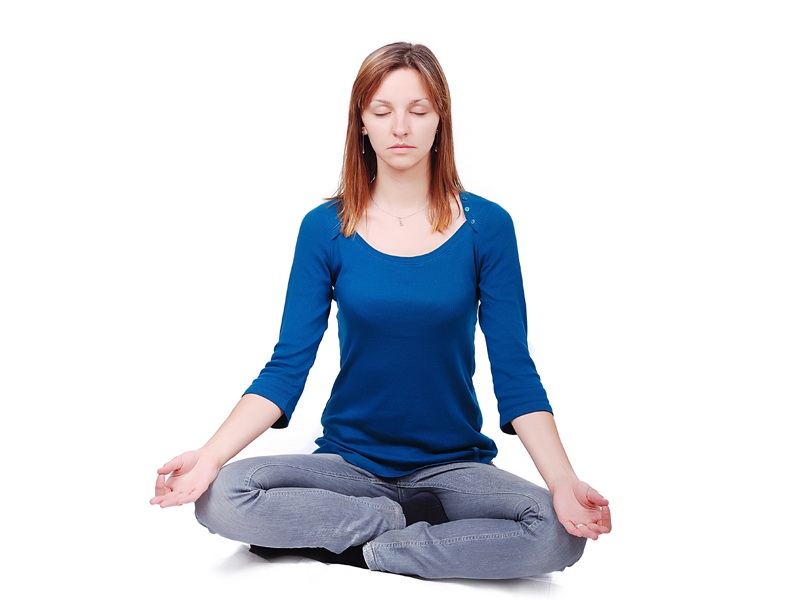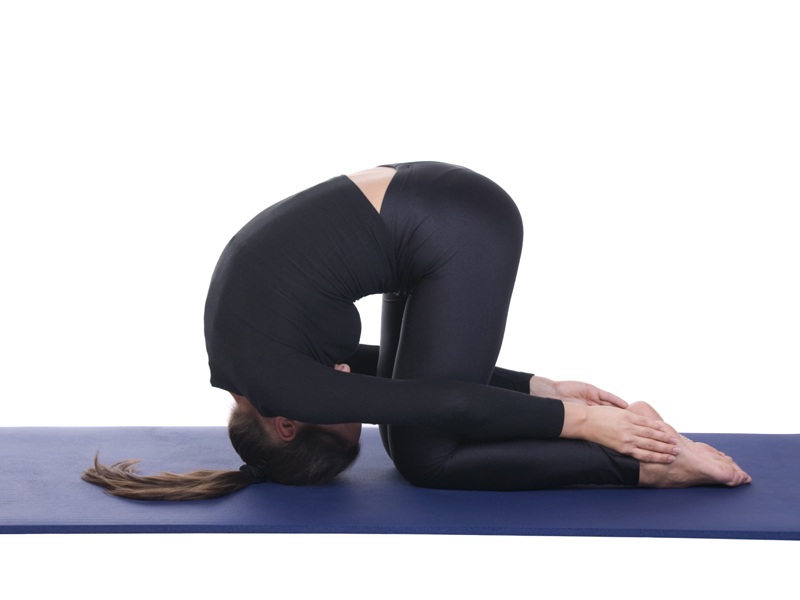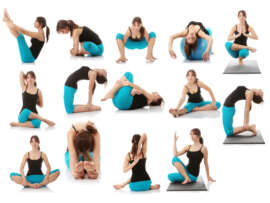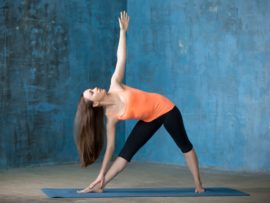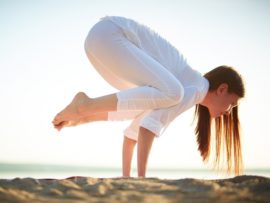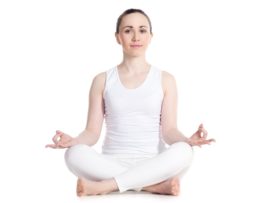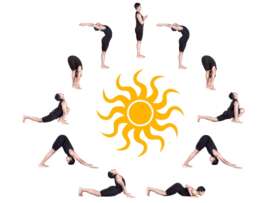Om symbolizes divine energy. By doing Yoga Om, one can raise his vibrations to experience oneness with the world. Om has the 3 important characteristics of creation, preservation, and liberation. When you chant the mantra correctly, it raises our vibrations to the frequency 432Hz, which is exactly the frequency of all the things surrounding us. Om helps us experience oneness with mother-nature and also the divine. You must have observed any yoga class begin and end with Om Yoga.
This is because it allows us to separate our practice time from the rest of our lives and also marks it as a sacred time where we are aware of our inner self and care for it. In this asana, we will explore some of the asanas of Om Yoga and also how we can practice the same.
Om Yoga Asanas and Their Benefits:
Let us have to look at the top 9 Om Yoga Asanas.
1. Reverse Warrior Pose:
This is an extremely vigorous standing pose that requires a lot of concentration. This challenging pose requires a lot of multitasking. Doing this asana is like battling with your own self, but mastering the same is equally rewarding.
Steps:
- To do the reverse warrior pose, stand.
- Then put your right leg towards the back.
- Bend your left knee to about 90 degrees and swing your left arm over the bicep.
- Raise your right arm and clasp your hands.
- Gaze down and keep your shoulders and chest open.
Benefits:
- This asana strengthens and tones lower back, arms, and legs.
- It increases the stamina and stabilizes the body.
- One of the best asana for those who have a sedentary job. This asana restores the spine and stimulates the metabolism.
- It releases the stress from the shoulder and eases out frozen shoulder.
2. Plank:
Also known as the dandasana, this asana is straight and parallel to the ground and supported by the toes and the palms and the elbows forming a right angle. This asana is dedicated to the support system of our body, i.e. the spine. Here is how you can do the same.
Steps:
- For the plank yoga pose, you need to be on your tummy and push your body up with your weight on your hands, which should be parallel to the ground.
- Keep your back and buttocks straight. Keep it for as long as you can. This will give you more strength in life.
Benefits:
- It makes the arms and legs very strong.
- It strengthens the muscles of your shoulder, arms, and back.
- It tones and strengthens your core muscles too.
- This is a great warm-up pose for advanced inversion, and arm balancing poses.
3. Seated Twist:
It is also known as the Ardhamatsyendrasana or the half spinal twist pose. It is also called the vakrasana. It is one of the 12 basic poses in the hatha yoga.
Steps:
- For the seated twist, you need to sit with your legs extended.
- Bend your right knee and cross your right ankle over your left thigh.
- Reach your right thigh and place your palm on the floor.
- There are many ways you can place the palm to increase or decrease the stretch.
- Hold the pose for 30 seconds and breathe deeply.
- Exhale and relax the right hand, then straighten the spine and finally the neck.
Benefits:
- This will help you to banish that lethargic feeling you might have after a heavy dinner.
- This asana improves the flexibility of the spine and improves its functioning.
- It reduces the stiffness of the back muscles, including the vertebrae.
- It regulates the secretion of essential hormones such as bile and adrenaline.
- It purifies the blood and improves blood circulation.
[See More: Ayurvedic Yoga]
4. Camel Pose:
Known as Ustrasana in Sanskrit, this asana is an intermediate level backward bend. It opens up the heart chakra and also boosts strength and flexibility. However, as this asana involves backbend, it is advisable to do it under supervision.
Steps:
- For the camel pose, kneel down first. Keep your back straight.
- Now bend backwards and let your hands touch your feet.
- Your fingertips should be on the soles of your feet. Your hand should be back as well.
- Breathe deeply for a few seconds and do this pose a couple of times.
Benefits:
- This asana improves digestion and gives a good massage to all the internal organs.
- It strengthens our shoulders and back muscles.
- It opens our chest and also alleviates the pain in the back.
- It improves the posture and thus helps in increasing the height.
- It also provides considerable relief in menstrual discomfort.
5. Seated Meditation:
This meditation is also known as Om meditation or Om Yoga. A great combination of sound and breath. This is a comprehensive mantra that involves the union of mind, body, and soul.
Steps:
- For this, you need to find a comfortable place first. Be seated and place your hands on your knees.
- Close your eyes and breathe deeply.
- Relax and calm yourself.
- Chant Om a couple of times.
- Remove any unwanted thoughts and enjoy yourself. Go beyond your body.
Benefits:
- Om meditation fills the body with peace, tranquillity, calmness, and serenity.
- It takes you closer to nature and also your divine self.
- Om meditation is extremely powerful and has healing power in itself.
- It increases your creativity.
- It detoxifies the body and also purifies the ambience and the surrounding.
- It improves your physical and mental health.
- It improves your concentration.
6. Savasana:
Just like a dead body, you need to let yourself loose and let go. Though it seems to be really easy, it is one of the most difficult ones as you need to relax your body and mind completely and not let any thought distract you. This asana is usually practised at the end of any exercise session.
Steps:
- To do Savasana, lie on the floor with your feet apart from each other.
- Inhale and tense your whole body.
- After you have done that, inhale and exhale all your muscles. Slowly come back by wiggling your fingers.
- Now bring your knees to your chest and wrap your arms around it. Squeeze and try to roll.
Benefits:
- This asana takes the body into a meditative state.
- It relaxes and calms the body.
- It improves concentration and reduces anxiety.
- This asana if done perfectly, can control blood pressure.
- It boosts energy and increases productivity.
[See More: Shanti Yoga Poses]
7. Crow Pose:
It is an advanced pose in yogasana and one of the most difficult one too. This asana makes you feel light and joyful and inculcates a feeling of trust and happiness.
Steps:
- Sit in a frog pose and bend forward. Make sure your knees also bend forward.
- Keep your hands on the floor and your fingers wide.
- Gaze forward and lift one foot off the floor.
- Straighten your arms and then lift your back. Now lift both your legs up. Stay in that position for as long as you can and come down. Make sure you warm up before you do this pose as it is quite challenging.
Benefits:
- The strength of the arms and the wrist increase by practising this asana.
- The upper back stretches and the spine gets toned.
- The balance and focus improves by doing this asana on a regular basis.
- The abdominal organs are strengthened, and it improves digestion.
- The thighs become stronger, and the groin area opens up.
- Overall your strength and confidence improve considerably.
8. Shoulder Pose:
Known as the mother of all asanas this inversion pose is the base for all the other inversion poses and one needs to master this to be able to do more complex inversions.
Steps:
- Begin by lying down straight on your back.
- Lift your legs to 90 degrees while keeping the arms at the side.
- With one swift movement and taking the support of your hands to lift your legs, buttocks, and chest.
- Support it with your hands to make a 90-degree angle.
- Hold as much as you can and breathe normally.
- To release first bring your hands down and then slowly your back down.
Benefits:
Even though the shoulder stand might not be easy to do, it surely has a lot of benefits. The following are some of them:
- It combats the common cold.
- Reduces constipation.
- Strengthens your heart and your respiratory system.
- Your flexibility and strength will increase as you continue practising this.
9. Prayer Mudra:
This mudra is also known as the Anjali mudra. The beauty of this mudra is in standing or lying down. You can also sit in a comfortable place with your eyes closed.
Steps:
- Bring your palms together.
- Your elbows should be side by side.
- Be aware of how you are breathing.
- This position will bring to focus several emotions such as love, compassion, and generosity.
Benefits:
- By bringing together the right and the left palm our right and left hemispheres of the brain are connected, and thus one feels connected to the divine
- This mudra inculcates the feeling of respect for others
- It is also a natural remedy for anxiety and stress
- This is very important for someone who wants to enter the meditative state
- This mudra helps in balancing logic and intuition and also tenderness and strength.
[See More: Jivamukti Yoga]
So, do not underestimate the power of the simple mantra Om. This Om Yoga, though seems to be very simple it is very powerful, and a must practice for one’s spiritual upliftment. Without practising Yoga Om, one cannot experience oneness with nature and also the divine. So, from when are you beginning to practice chanting Om. Do share your experience with us in the comments below so that even others are motivated to practice the same.
Frequently Asked Questions & Answers:
Q1. What does the Om symbol mean?
Ans: Om or Aum is a sacred mantra renowned as the sound of the universe. The Om symbol is the visual symbol of this sacred mantra and has an in-depth meaning hidden behind it. It is one of the most important spiritual symbols any description of which is found in many Hindu text, prayers and more.
Q2. How do you breathe while chanting Om?
Ans: Exhale, fully and completely. Now inhale deeply. Now slowly begin the chanting of the mantra Om till your breath lasts. Do not pull too much. Chant only that much as you are comfortable with. The length of the Om can be increased slowly and gradually with practice.
Q3. What is the relation between Om and Yoga?
Ans: Om and Yoga are inseparable. The simple sound of Om has a very in-depth meaning behind it. Om raises the vibrations and helps one to be one with nature. By chanting Om, one can experience the union of mind, body, and soul, which is the gist of Yoga. Om is usually chanted thrice before and after any yoga session.
Q4. Can we chant Om silently?
Ans: Yes, Om can be chanted silently. For doing so, breathe in fully and deeply. Now while concentrating on your breath, begin chanting the mantra in your mind without making any sound or moving your lips and tongue. Repeat this thrice. Soon you will realise that the chanting has disappeared and you can experience deeper inner peace and calmness spreading throughout your body.
Q5. Can chanting Om be dangerous?
Ans: Om is a very powerful mantra, and hence, it should be practised for deeper inner purification. It is very important that this mantra is practised in a peaceful clean place, usually in the open fresh air. If the place is not hygienic or if your mental state is not proper to accept the energies that flow through the mantra, there is a high possibility that you will feel dizzy and uncomfortable.


